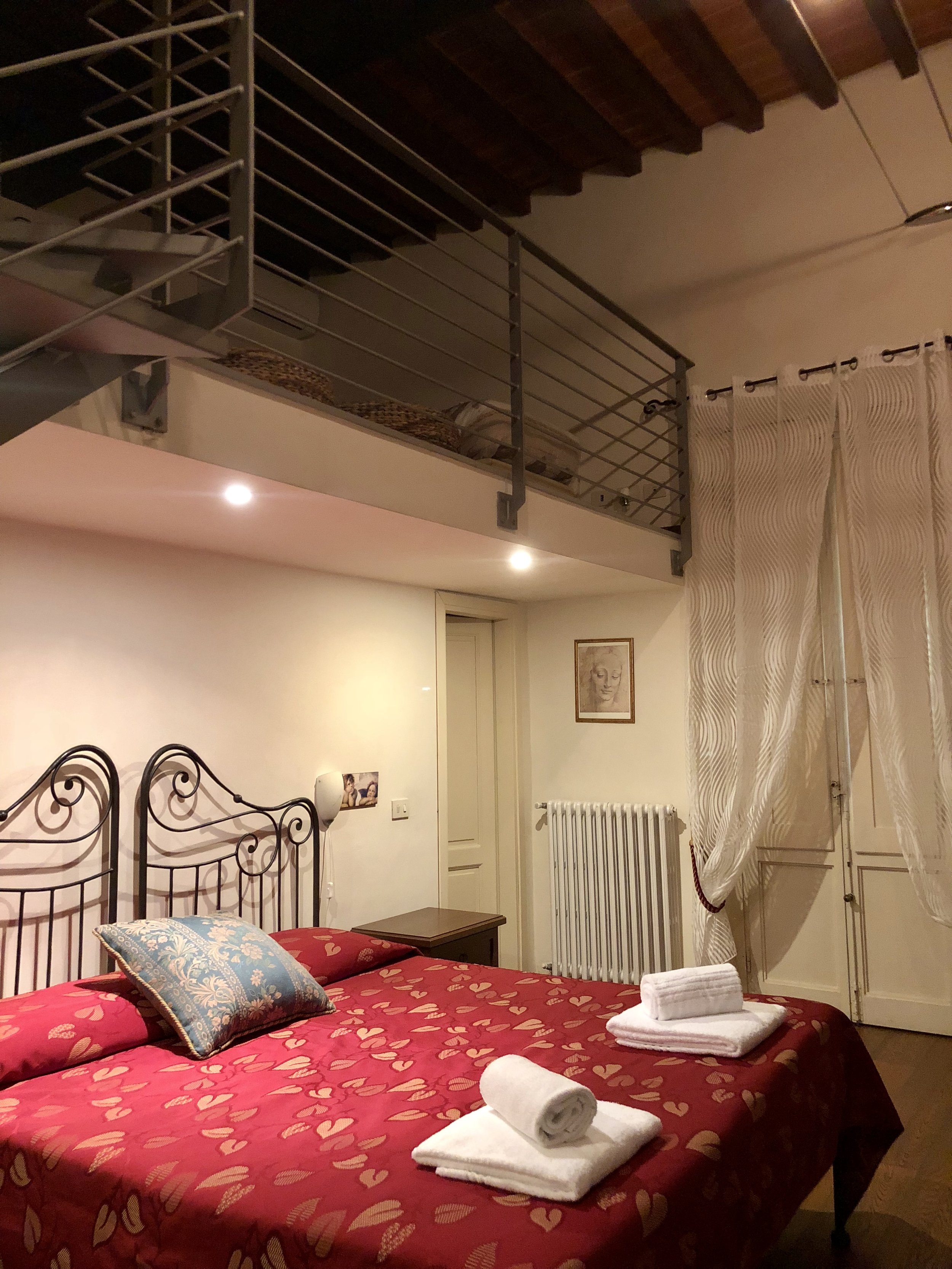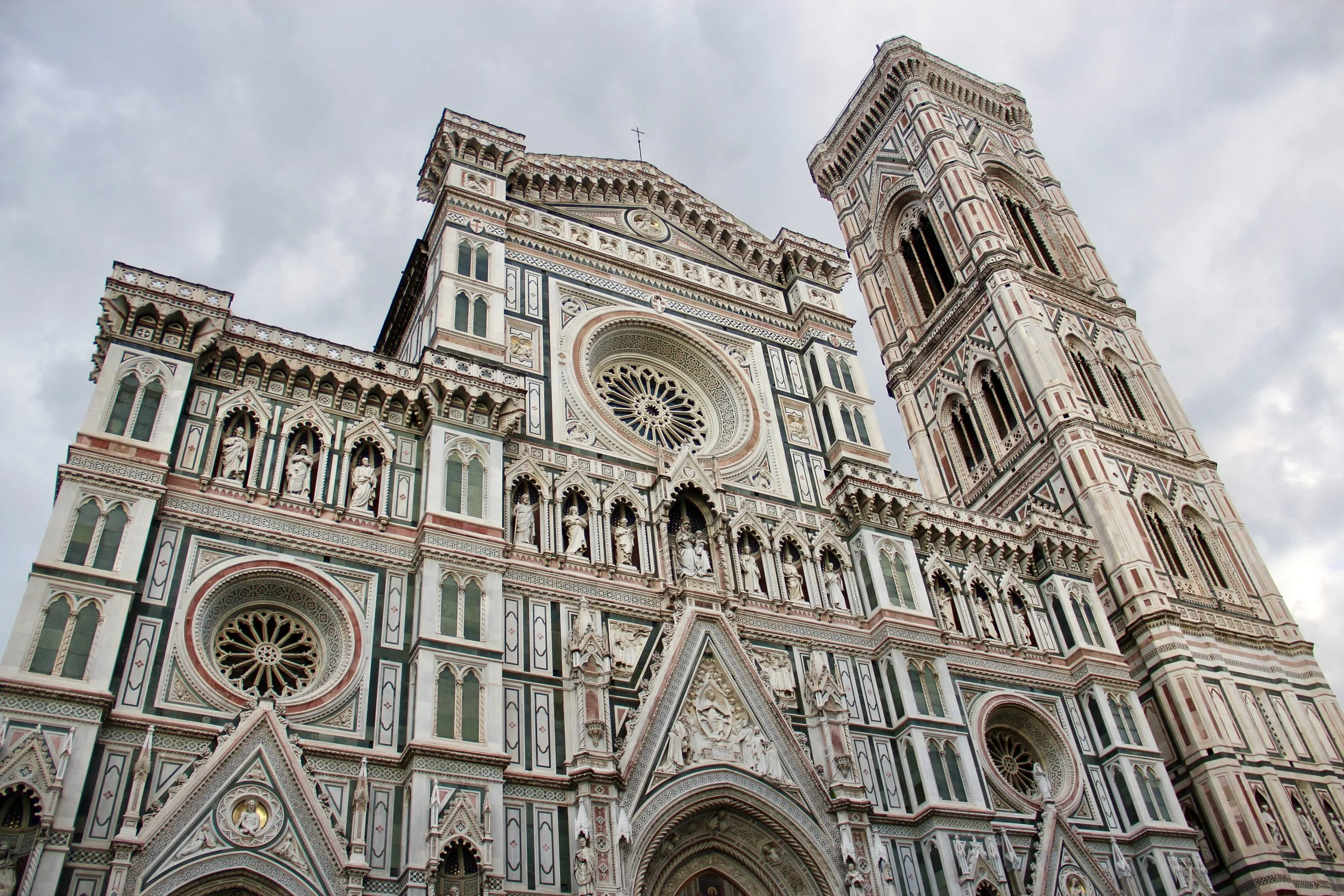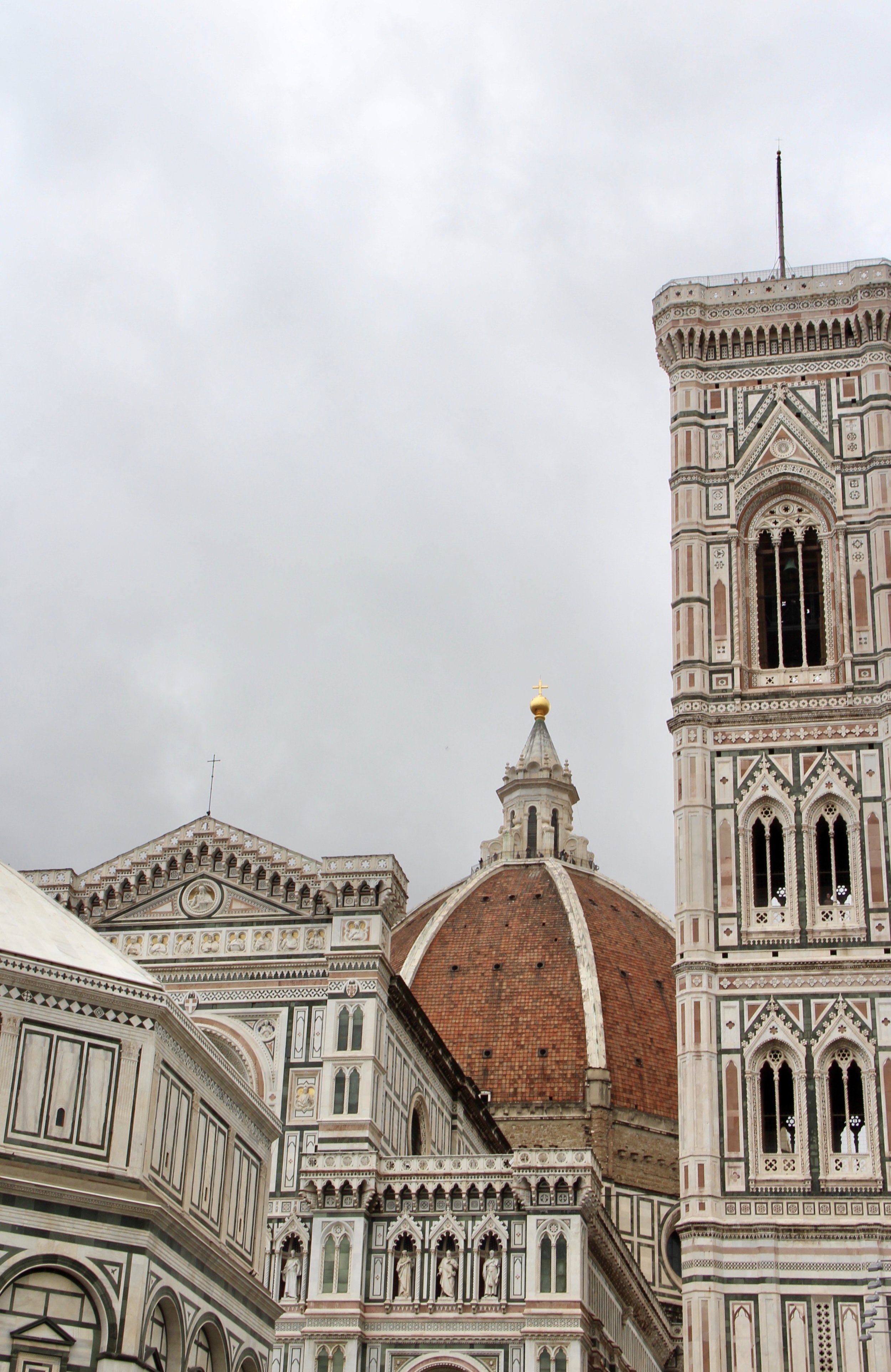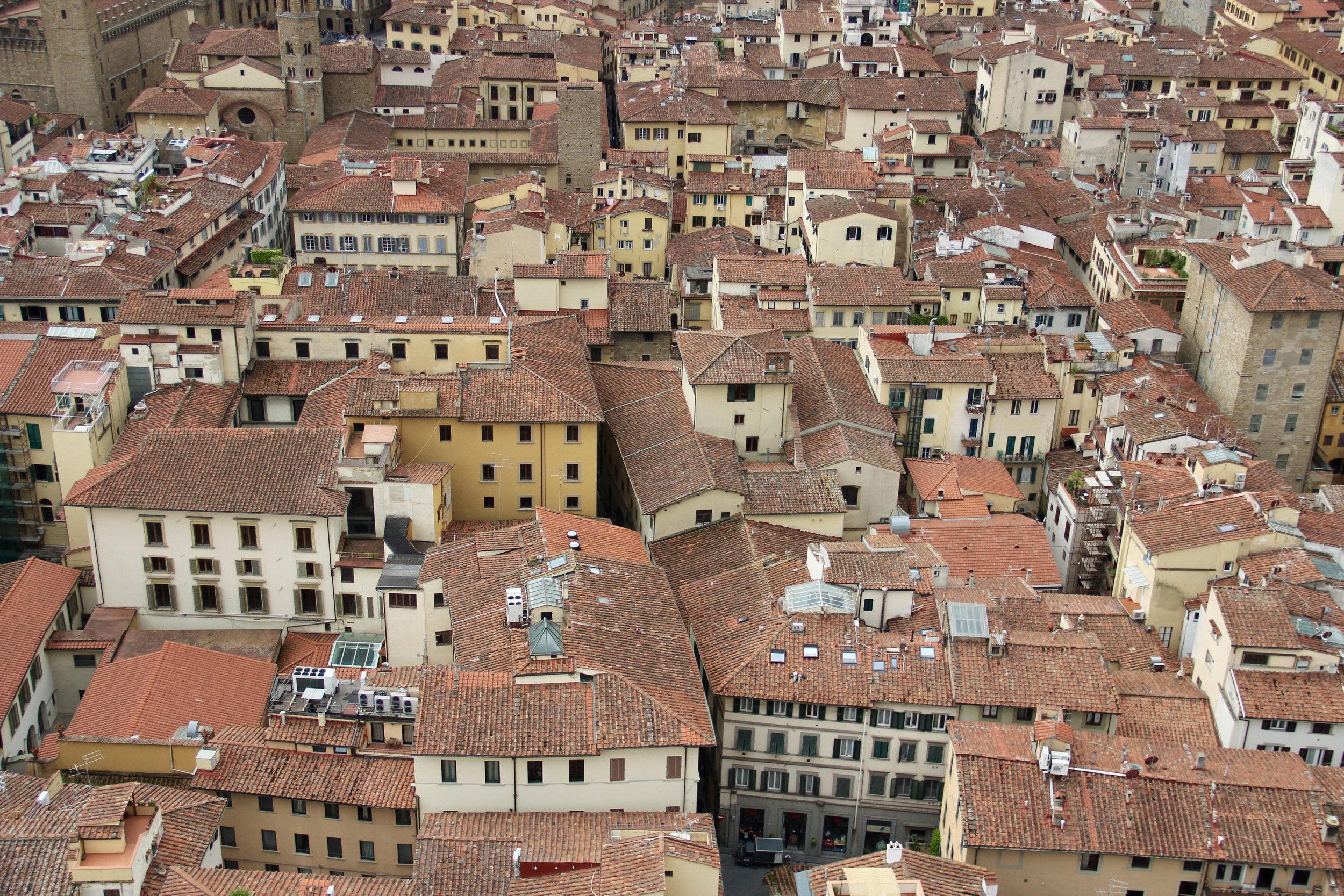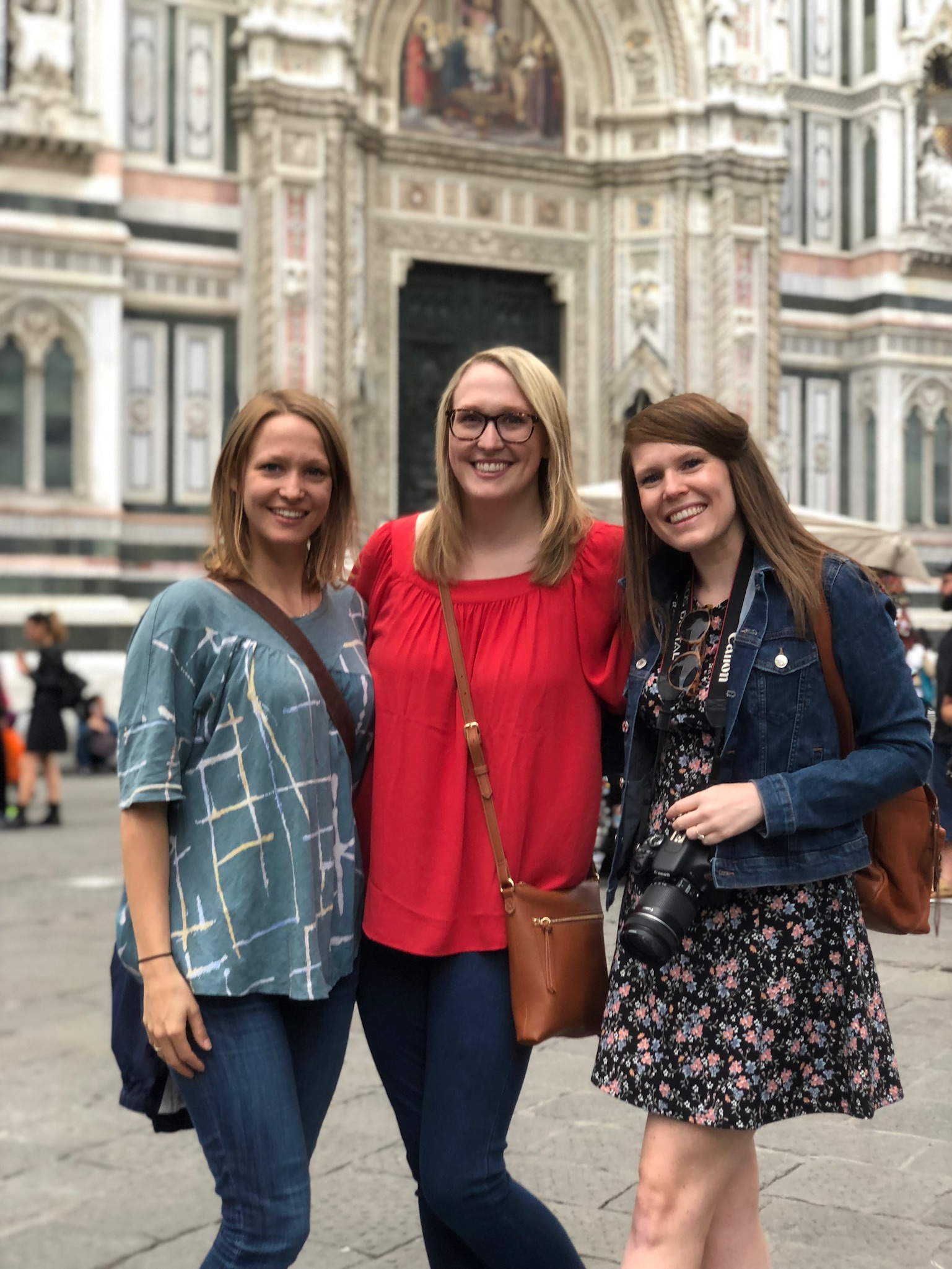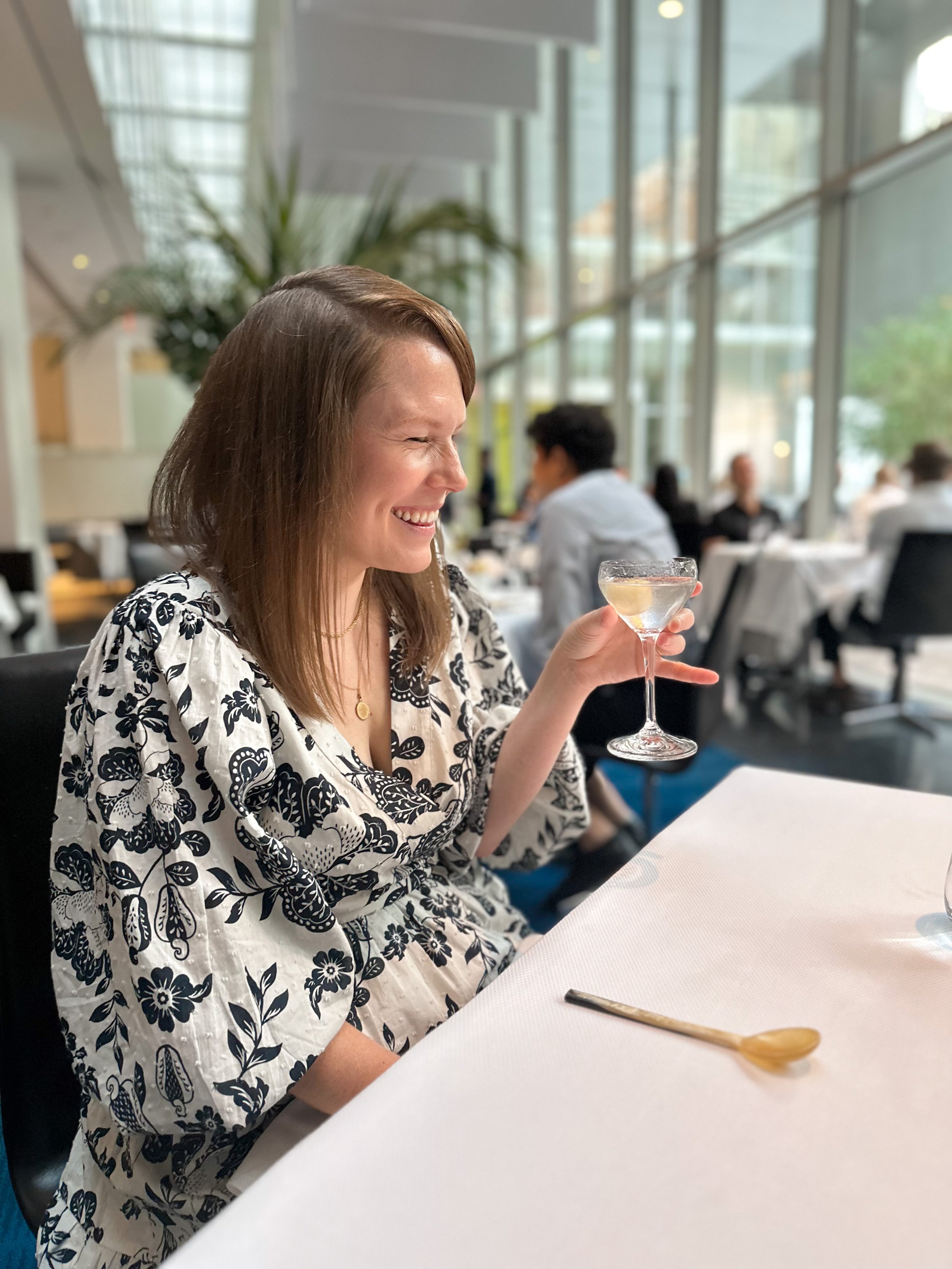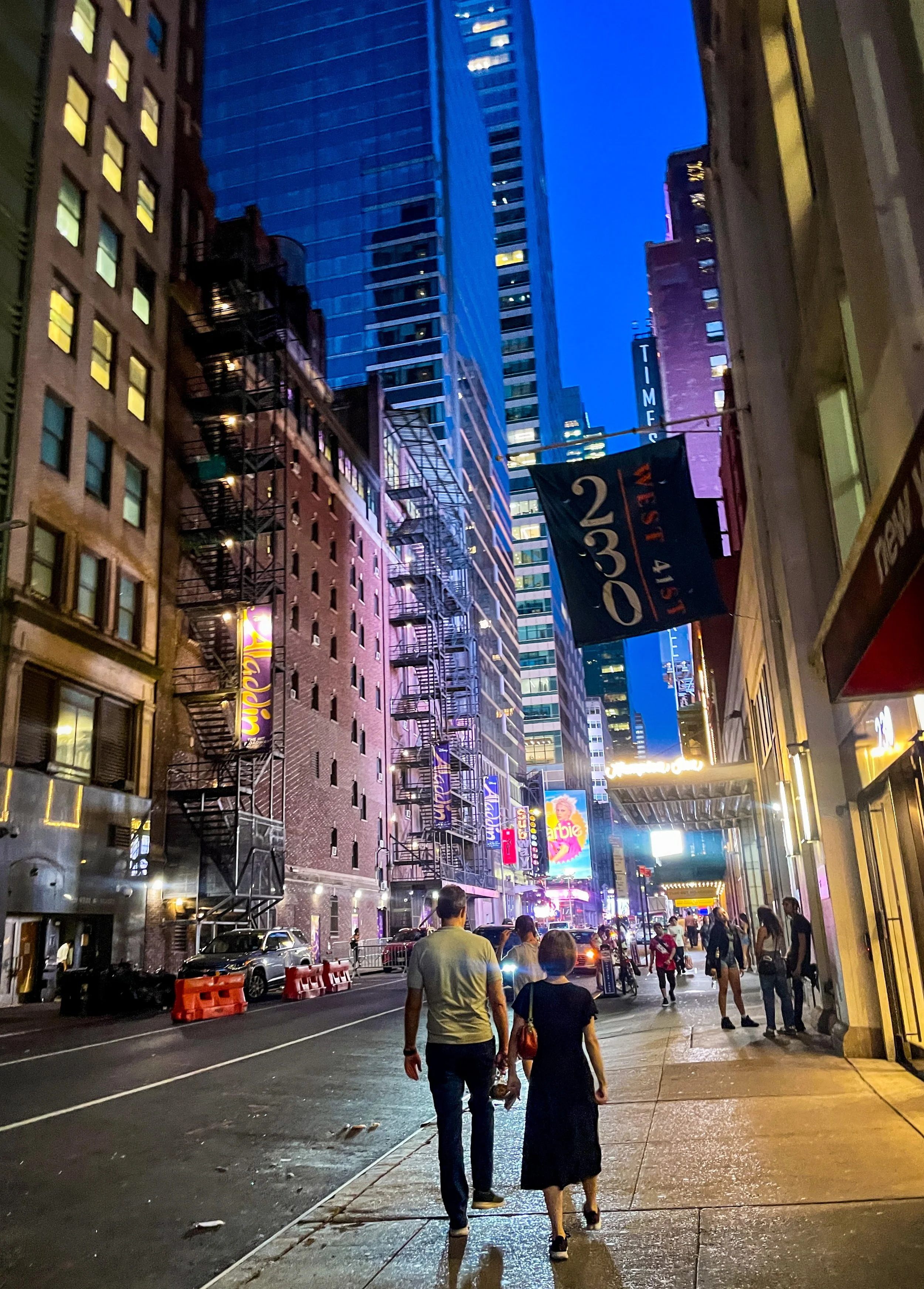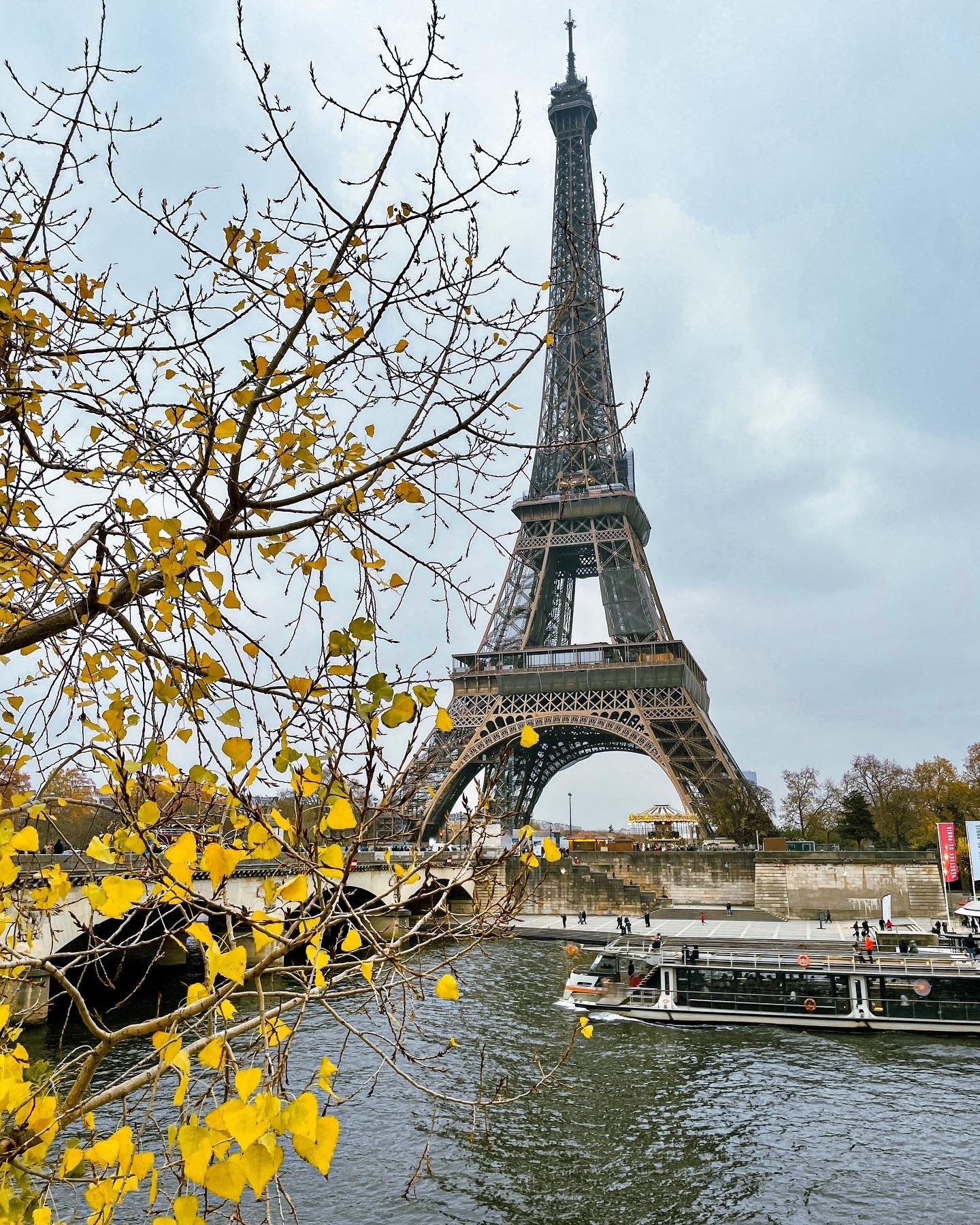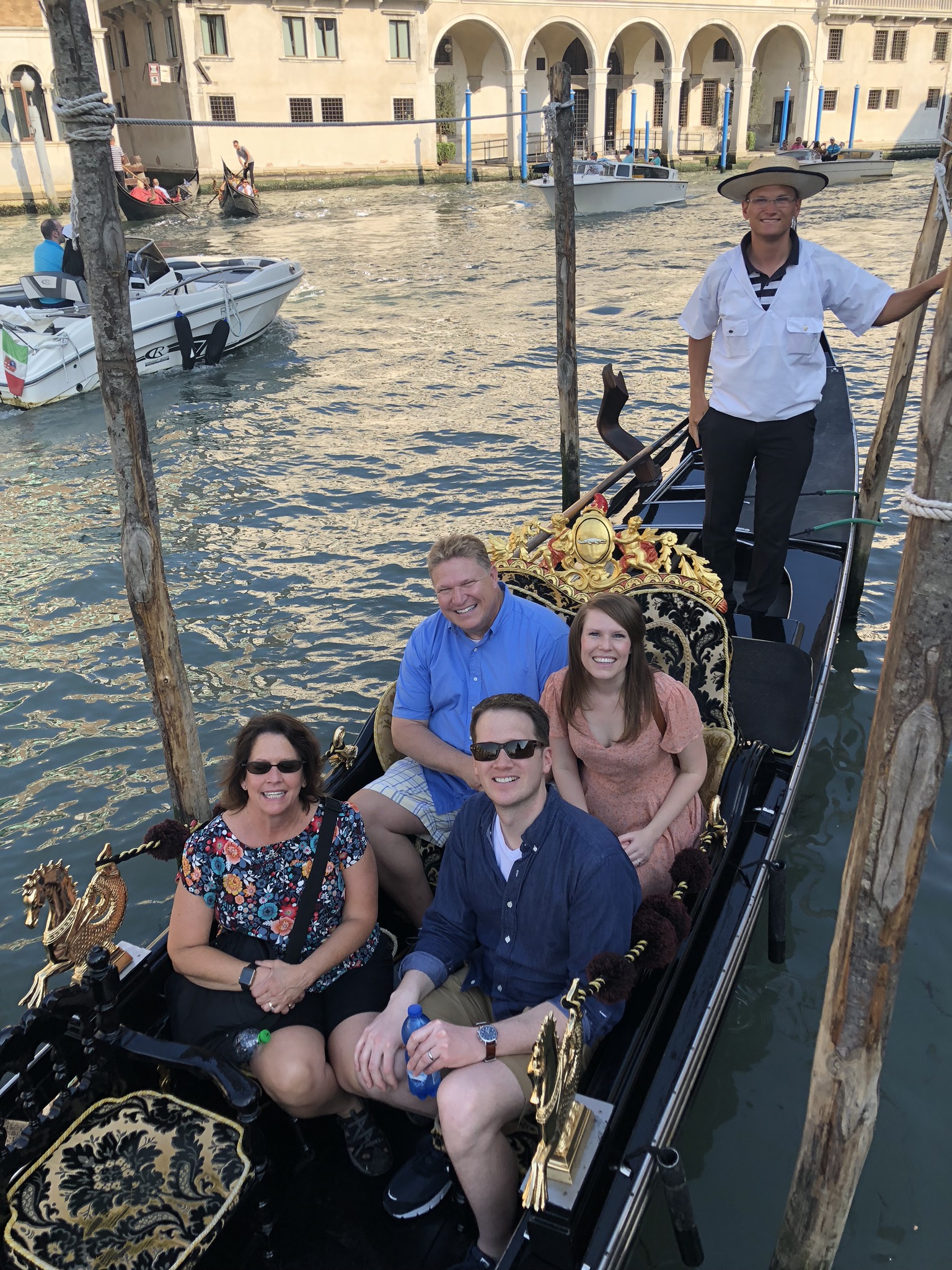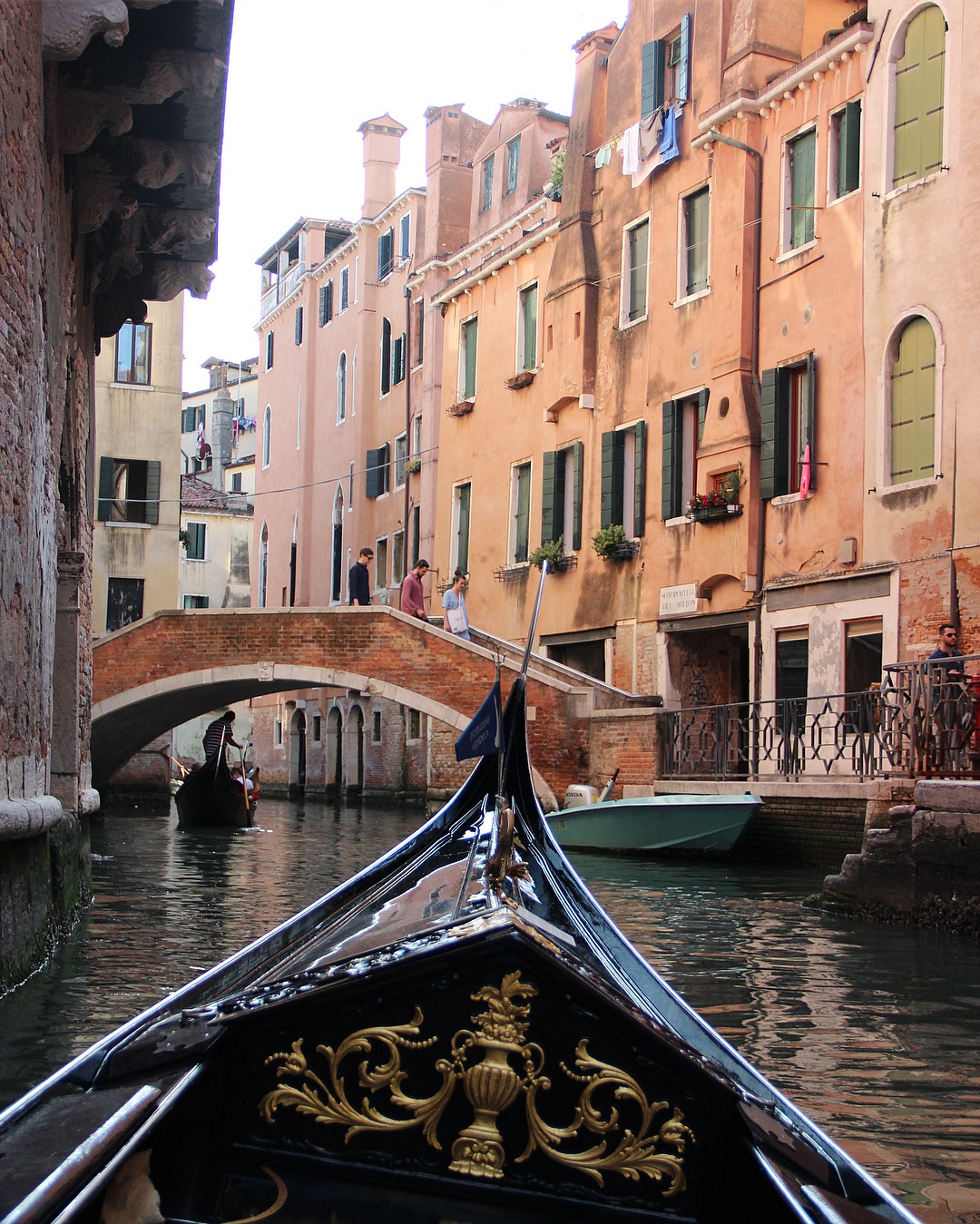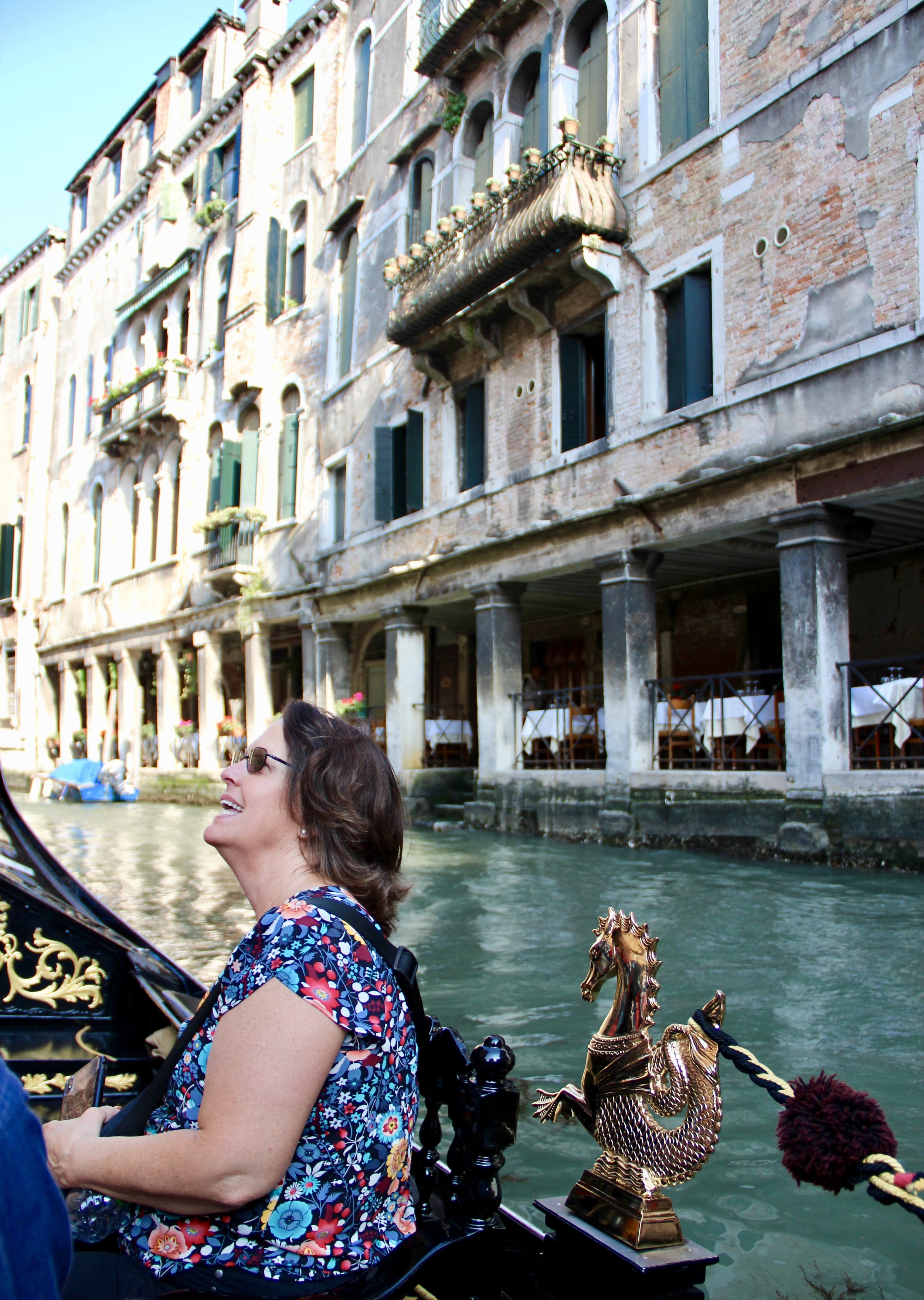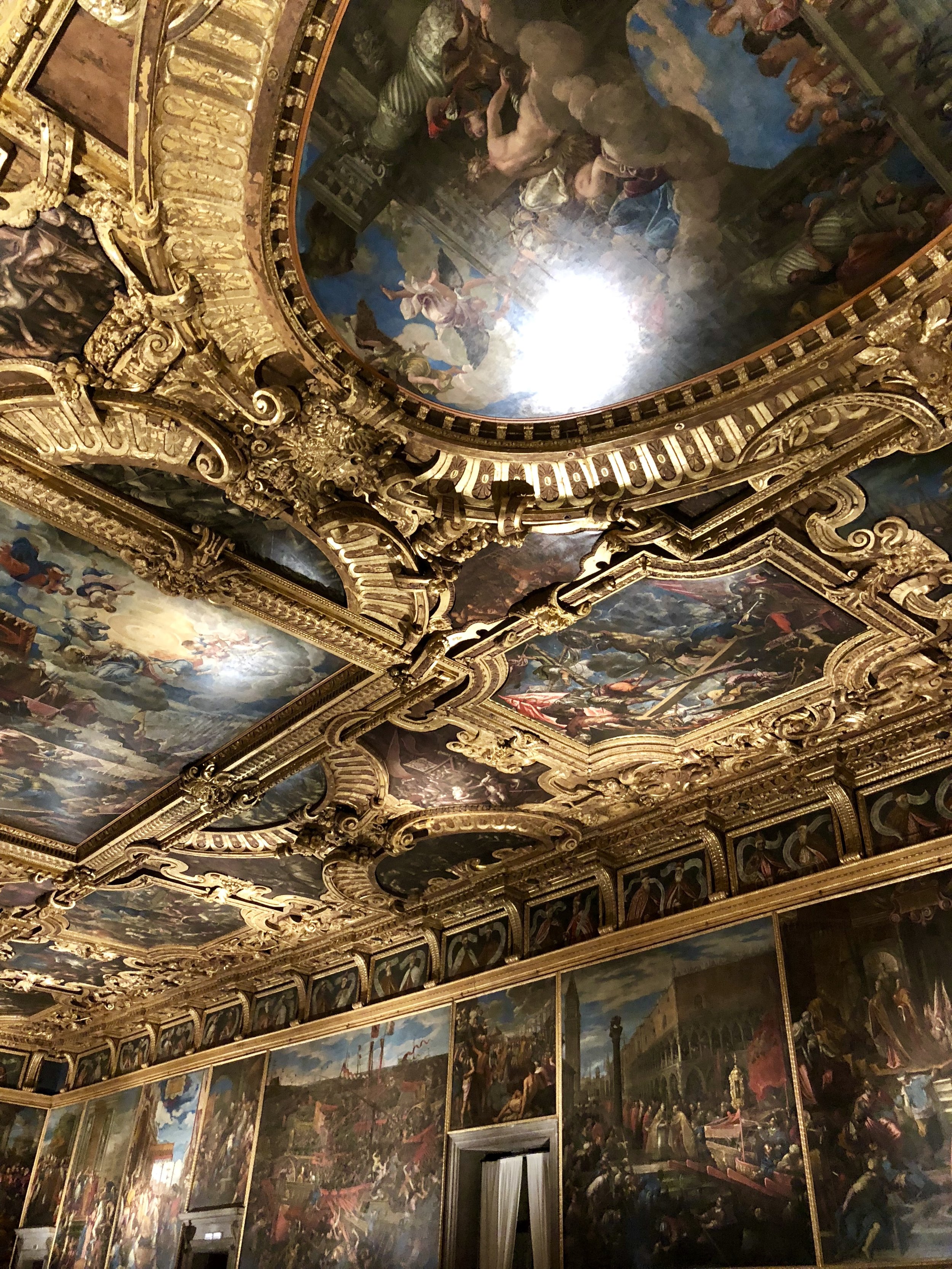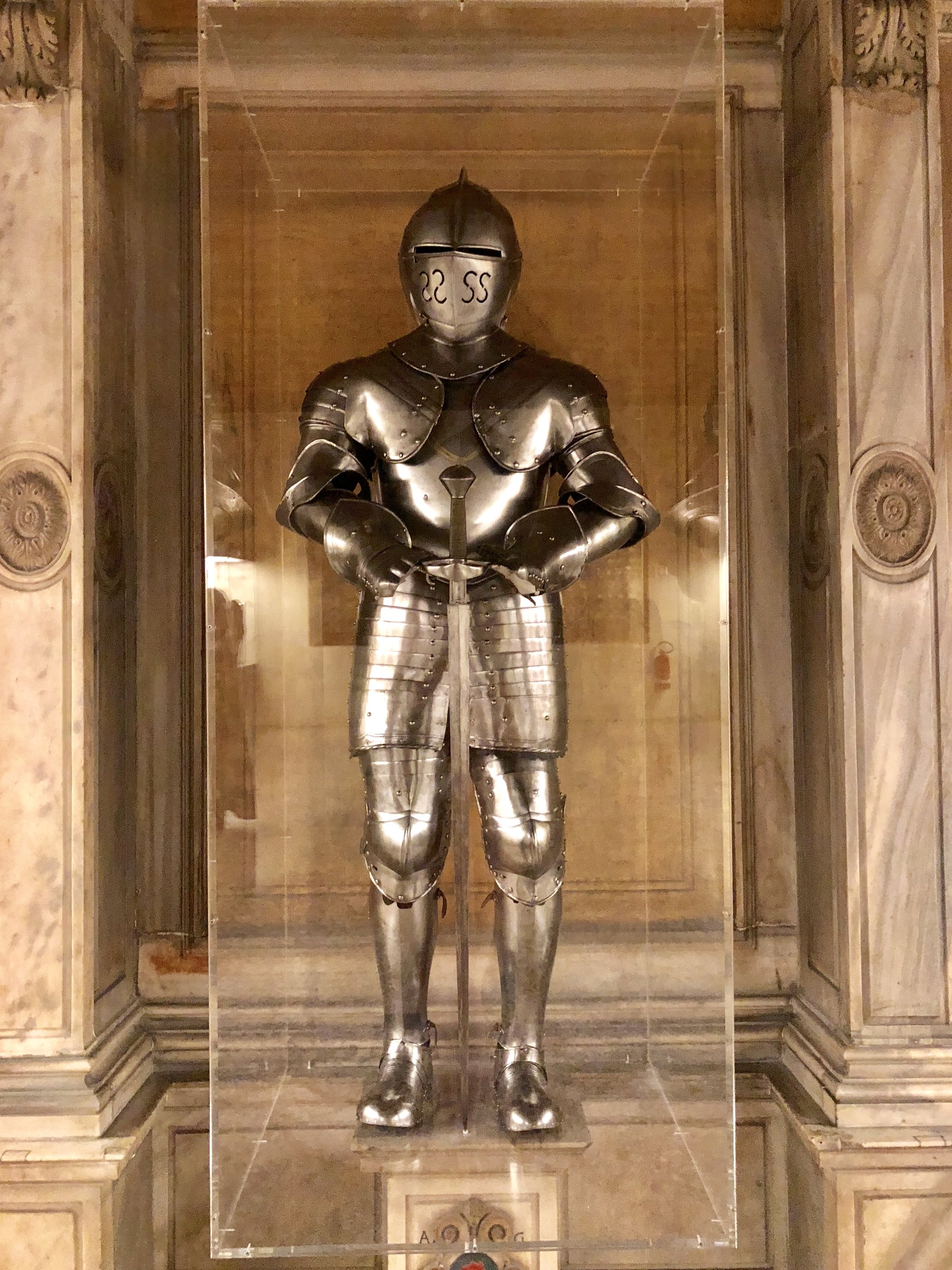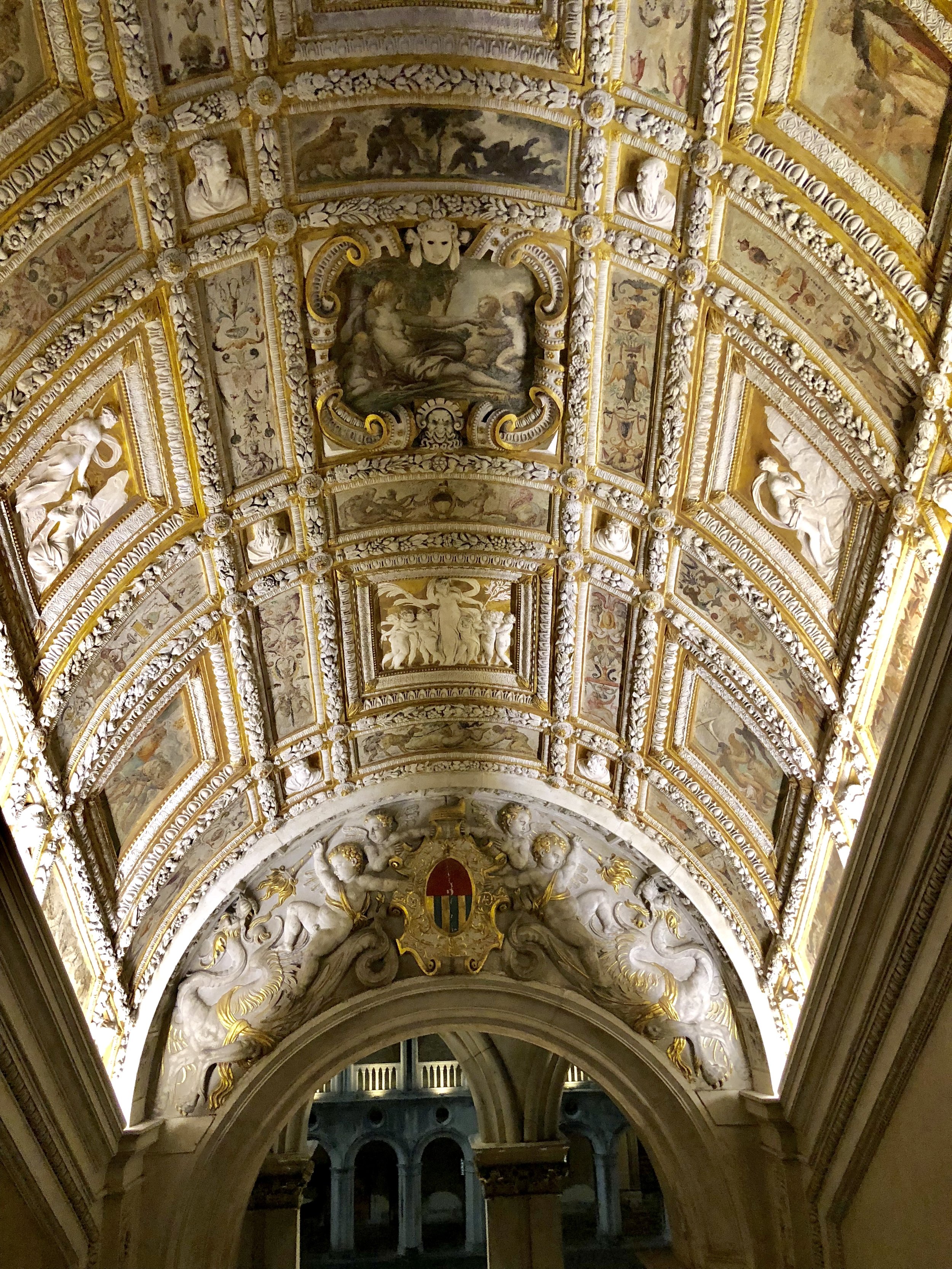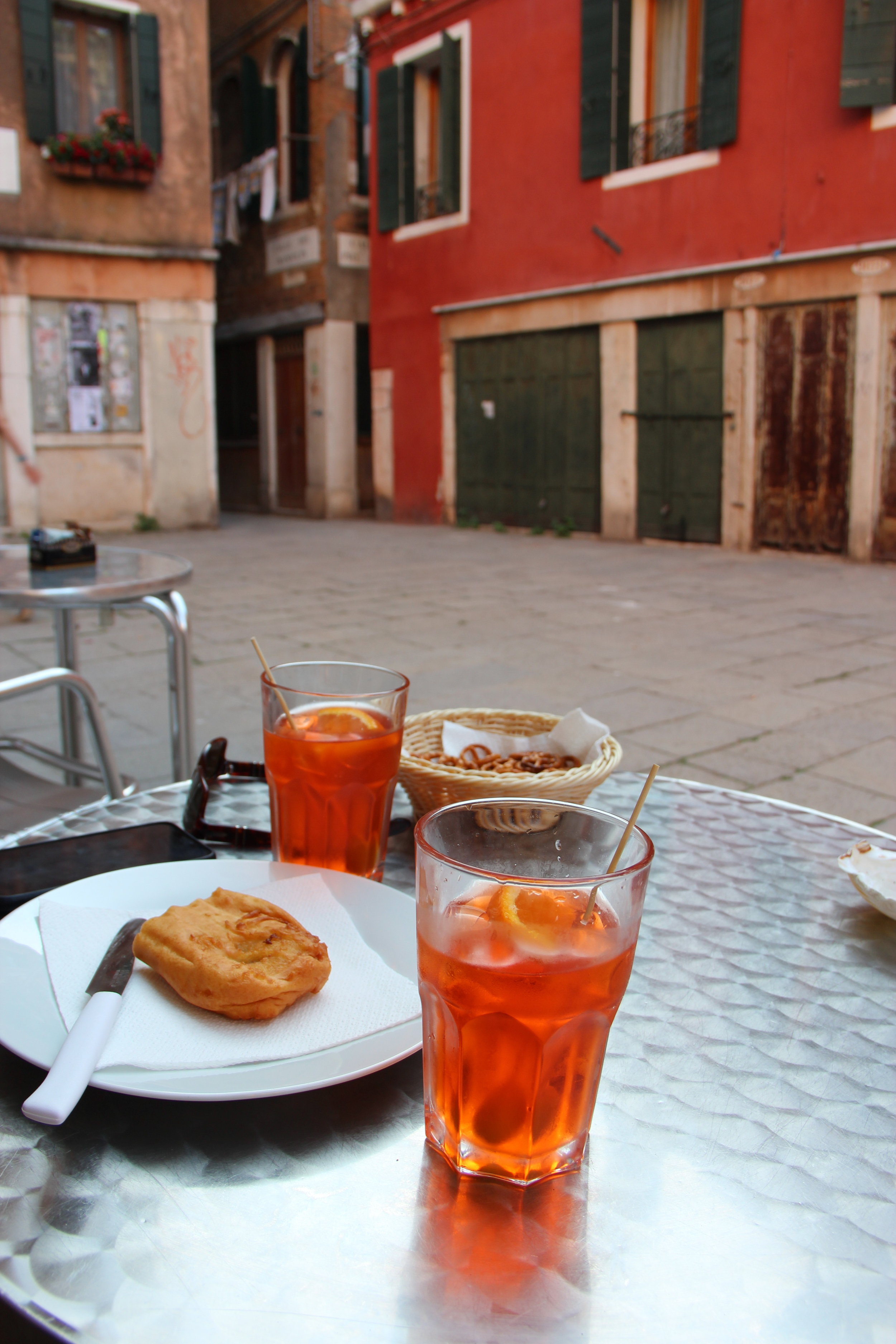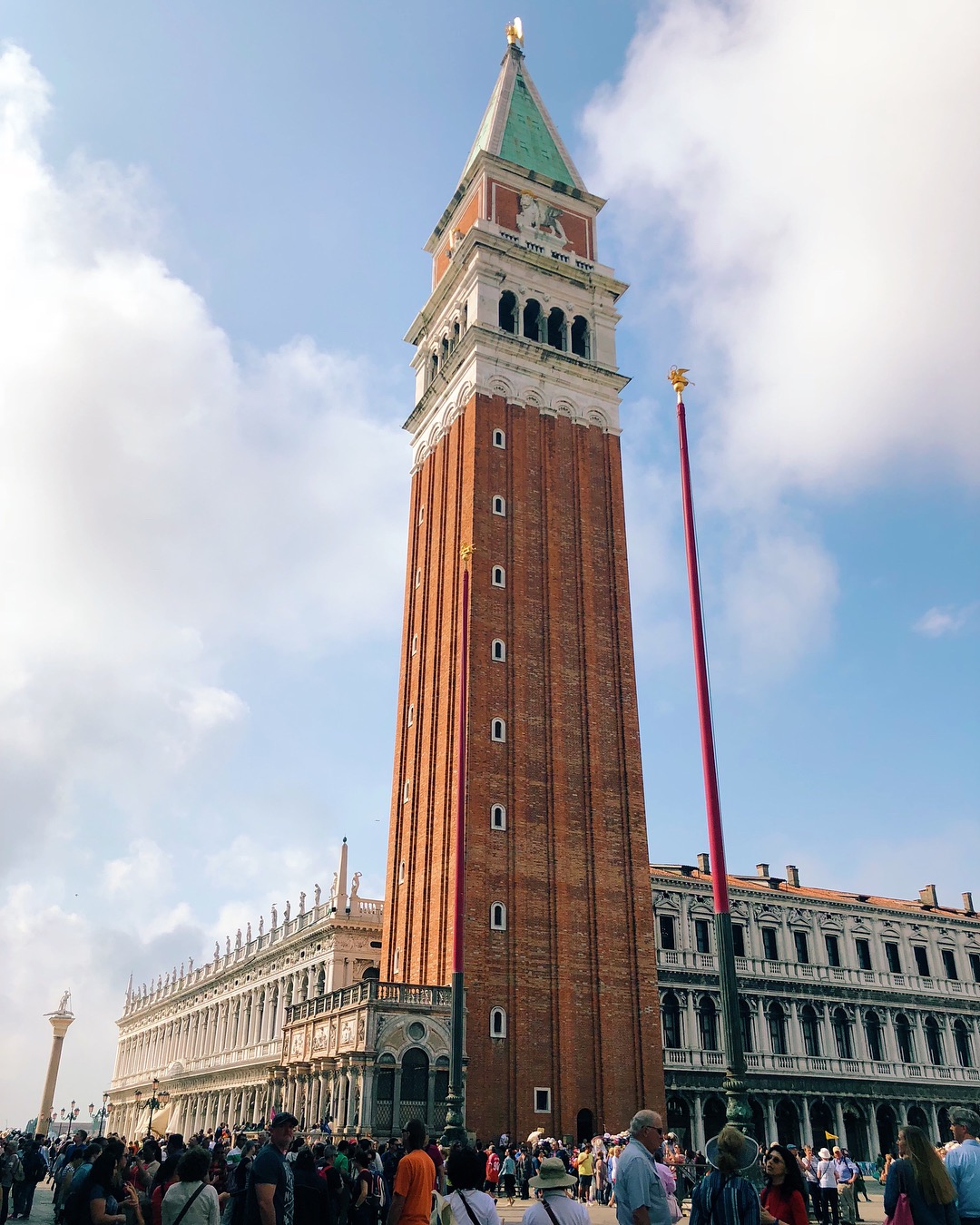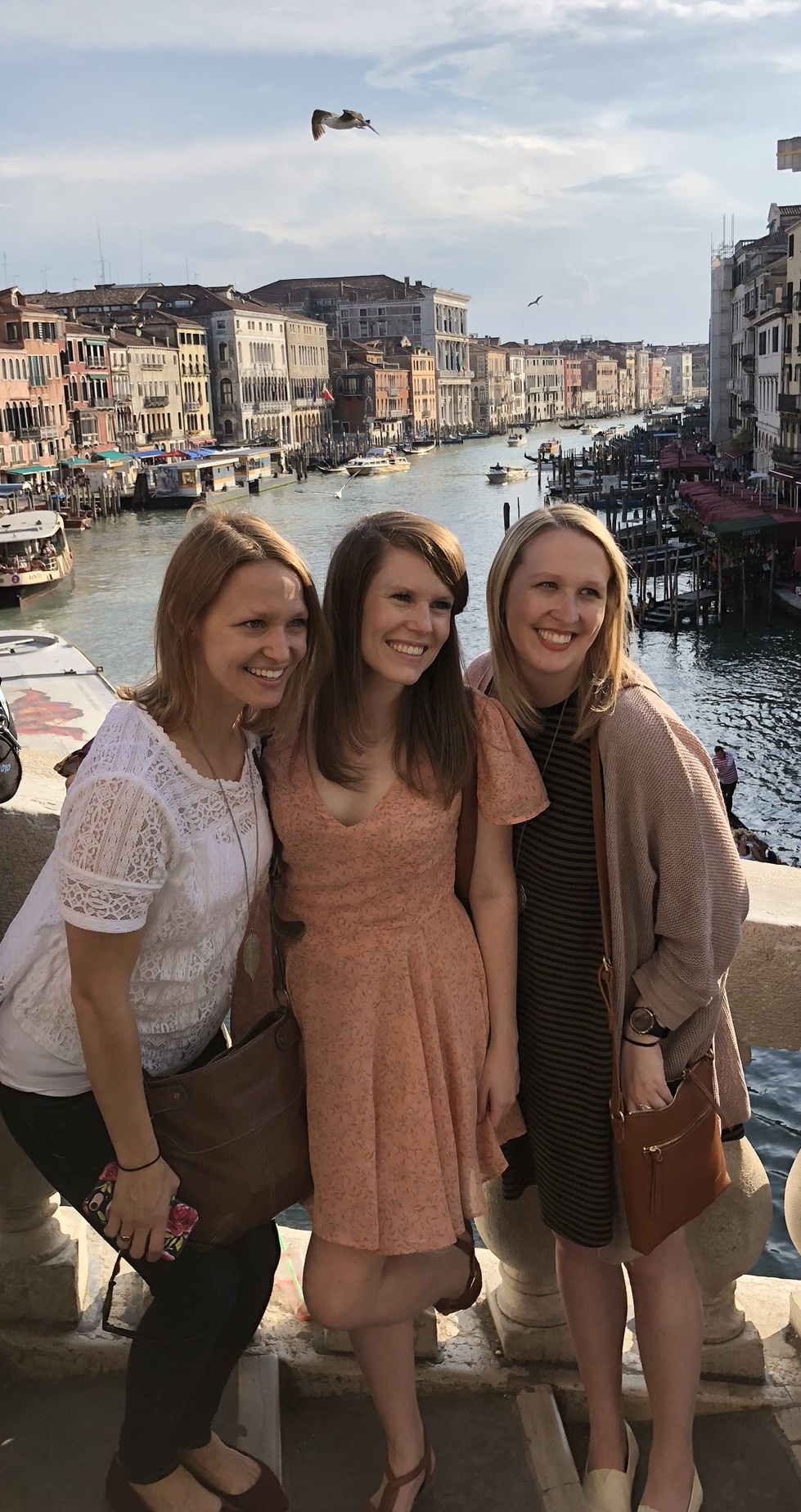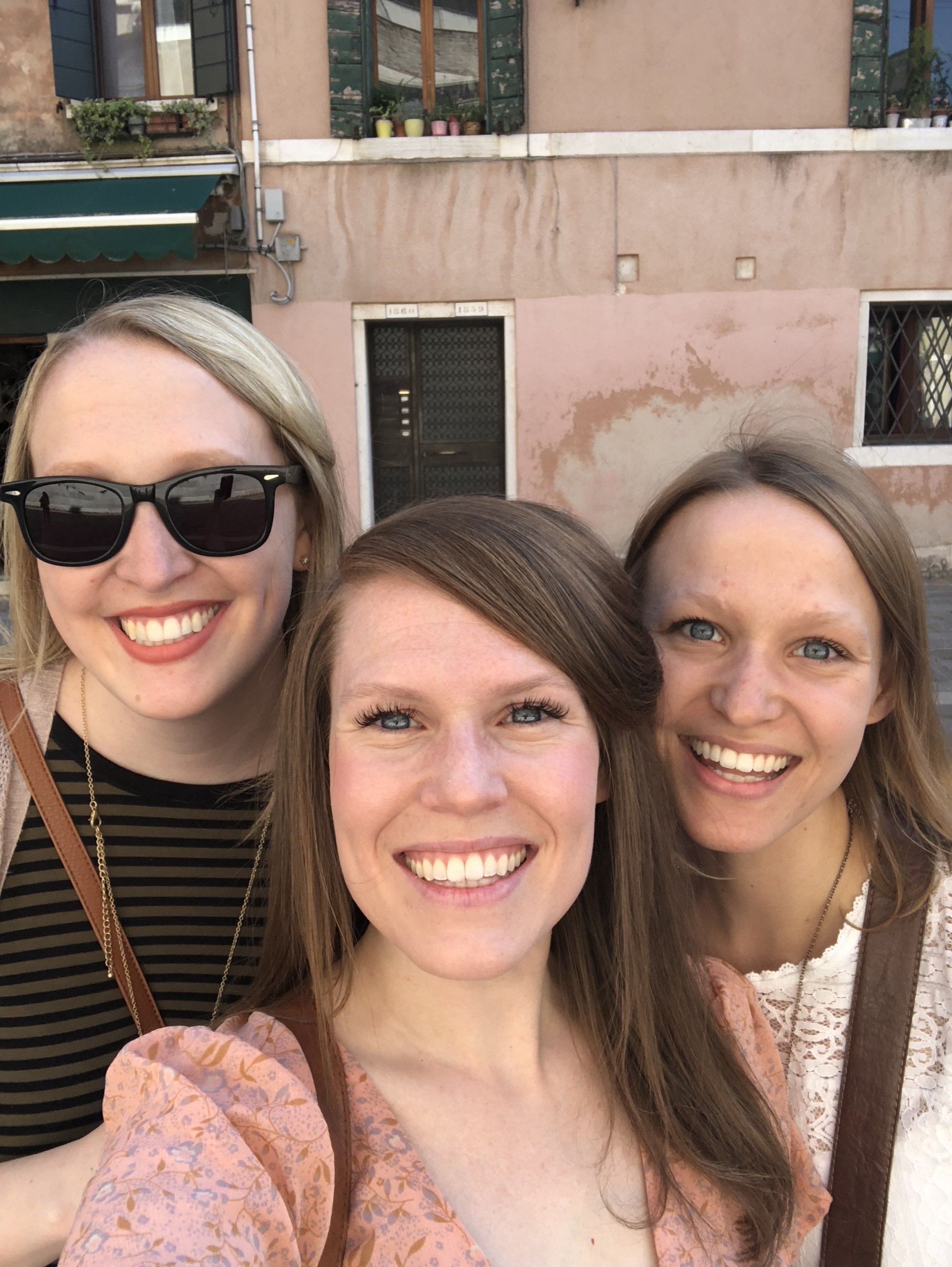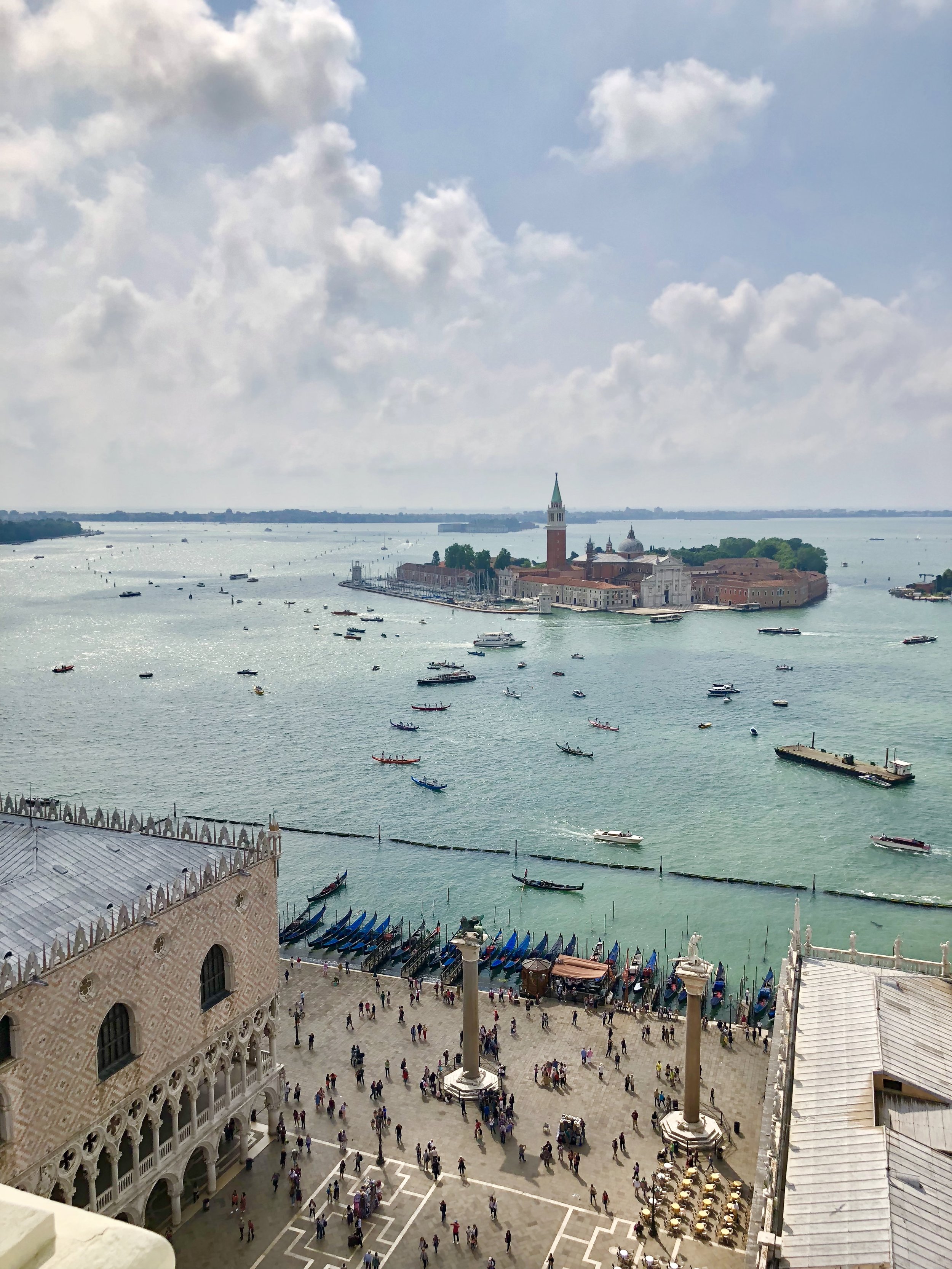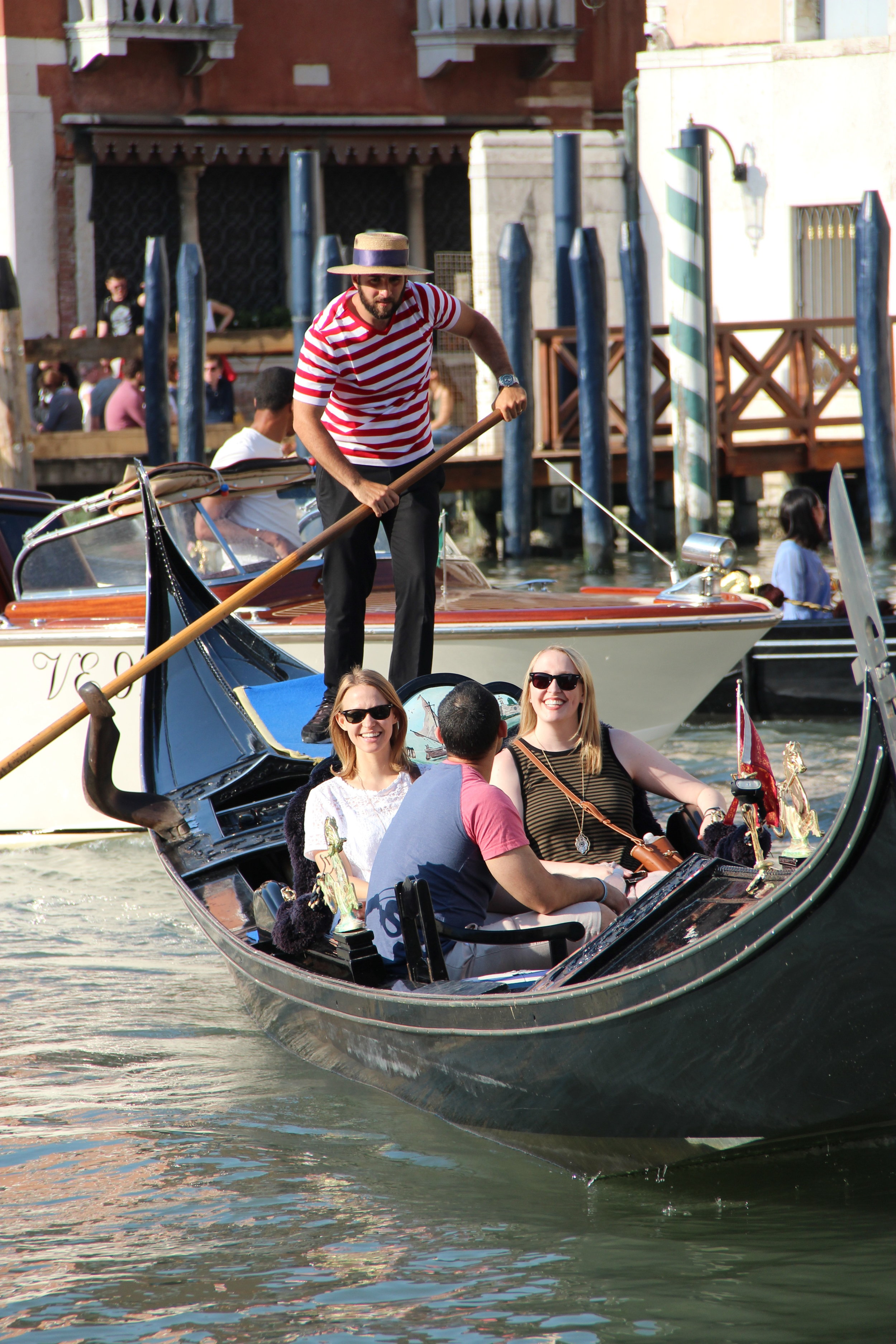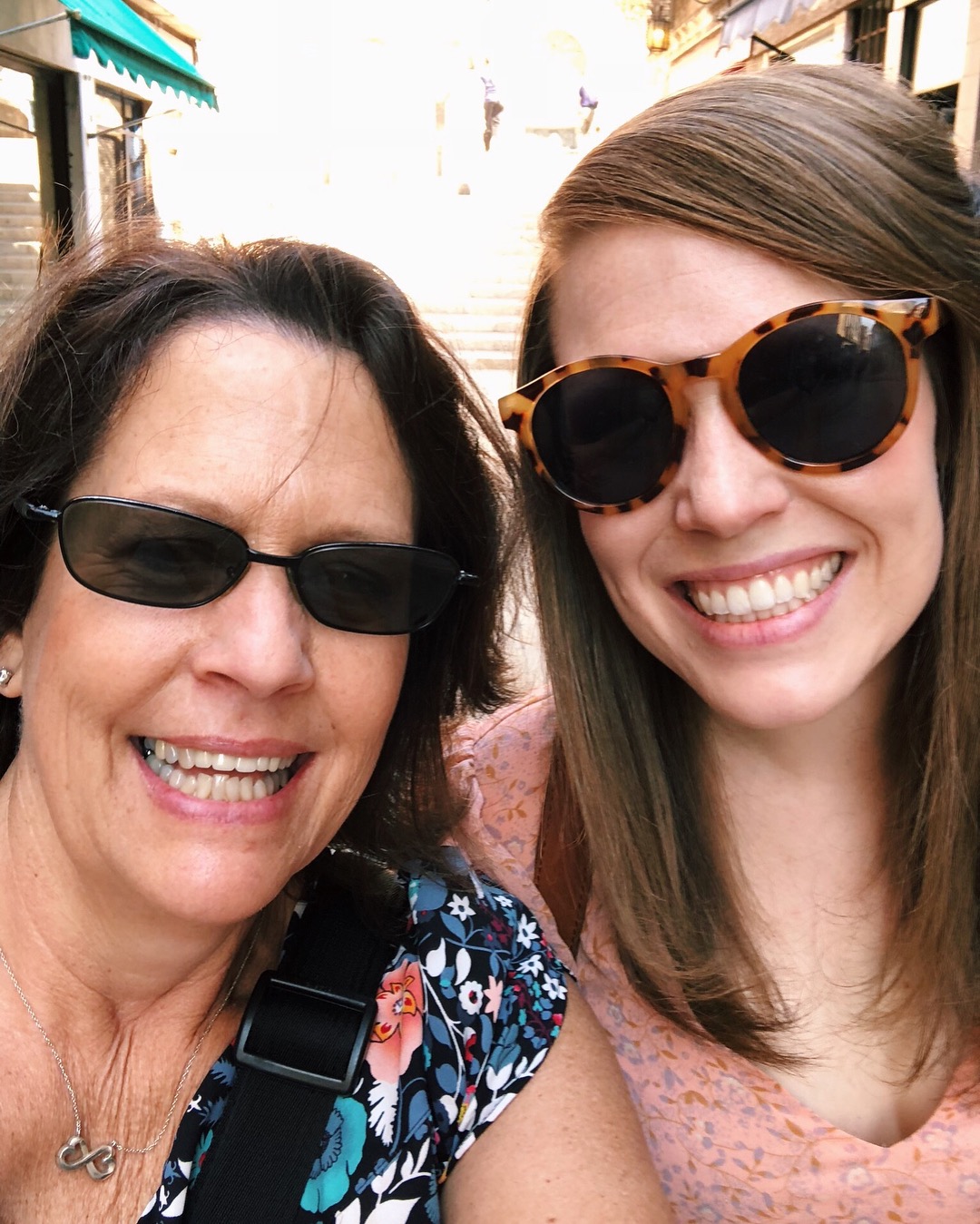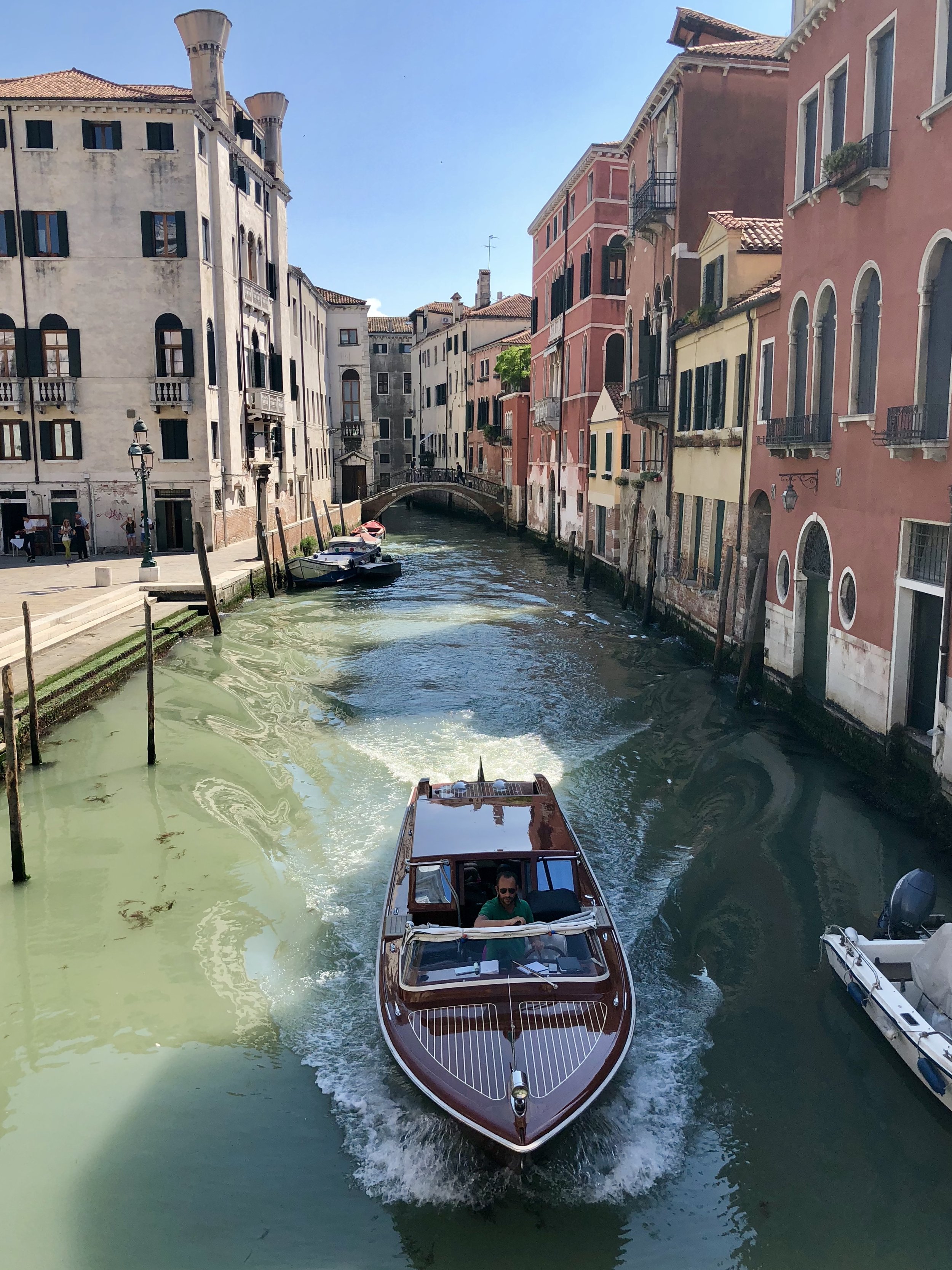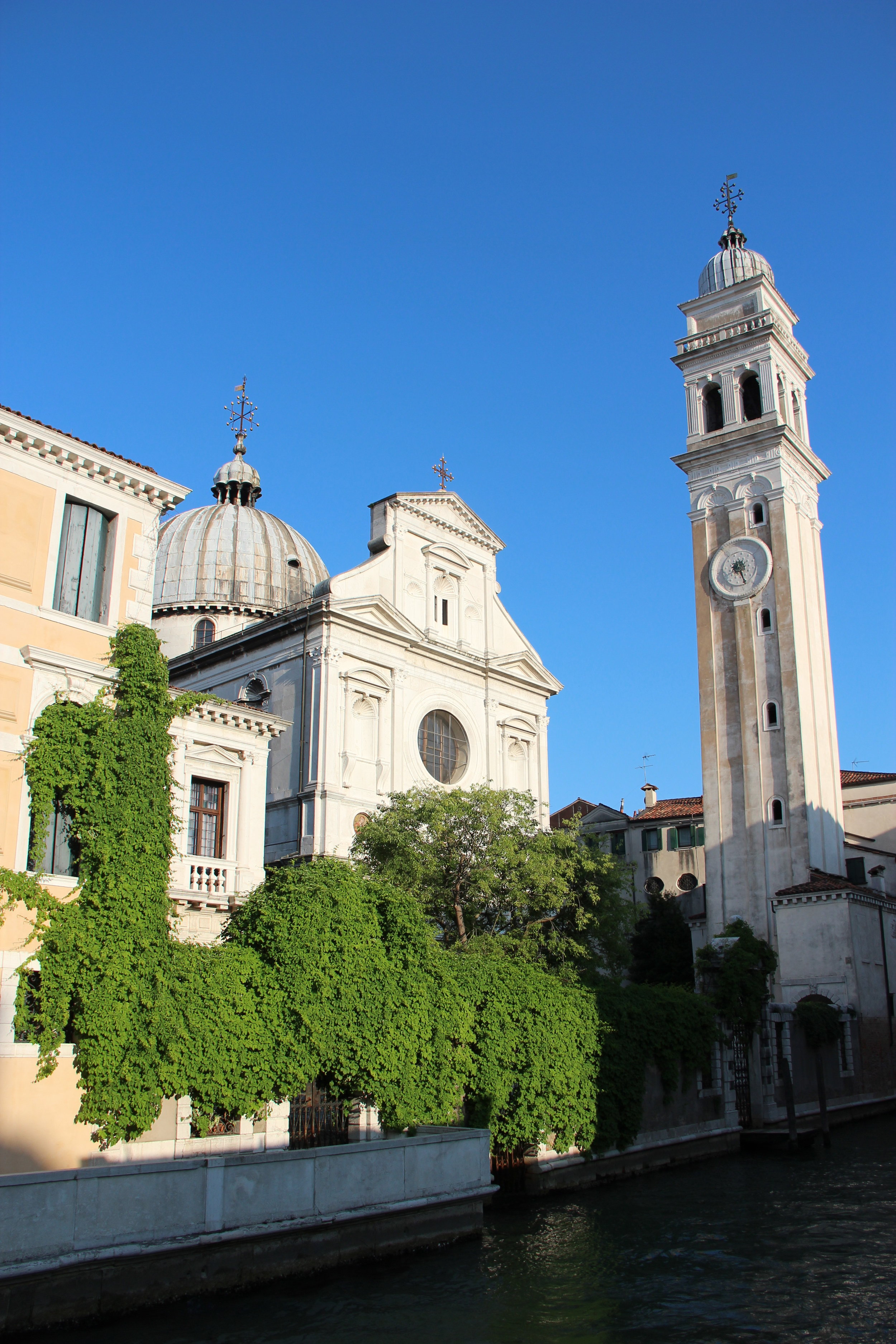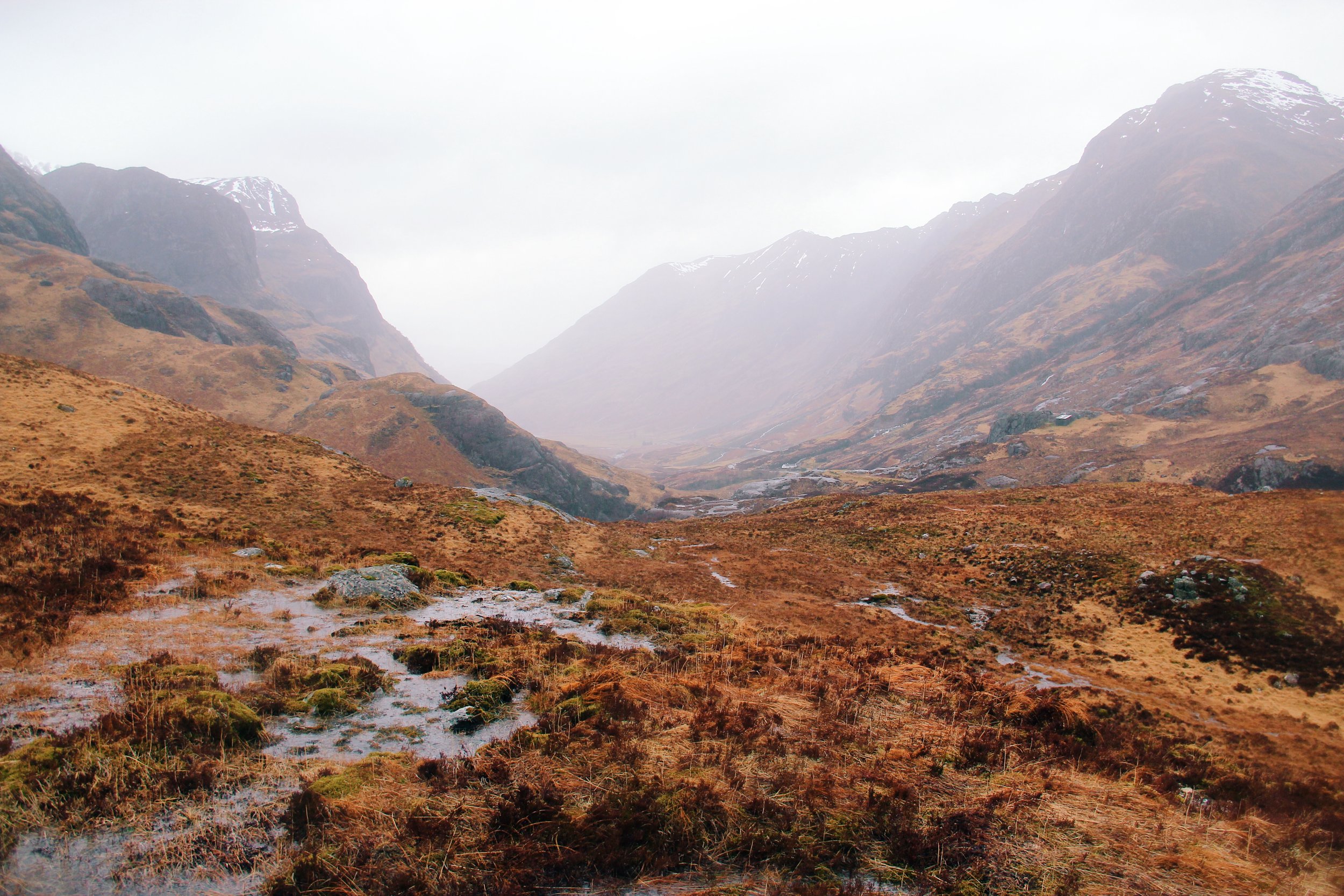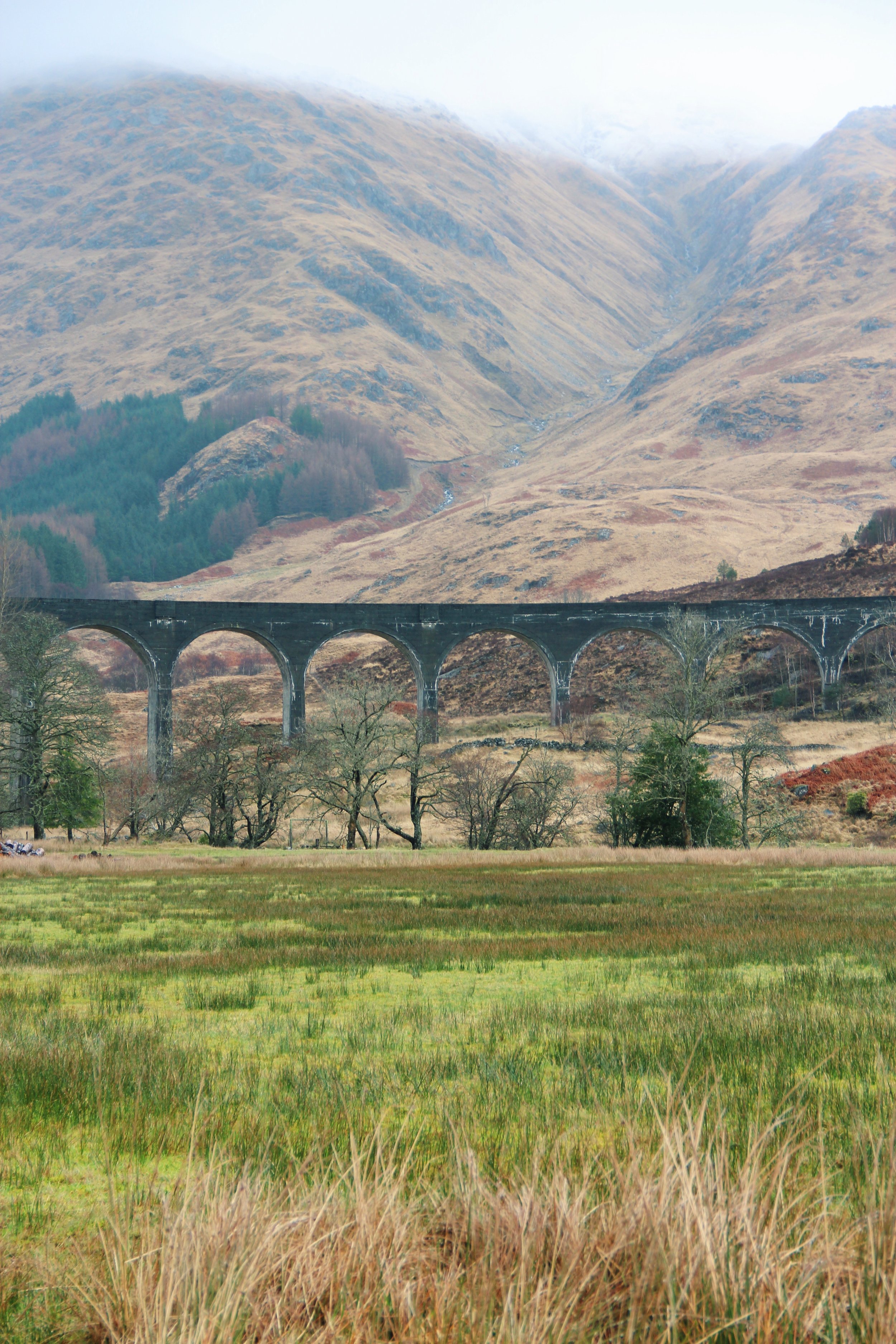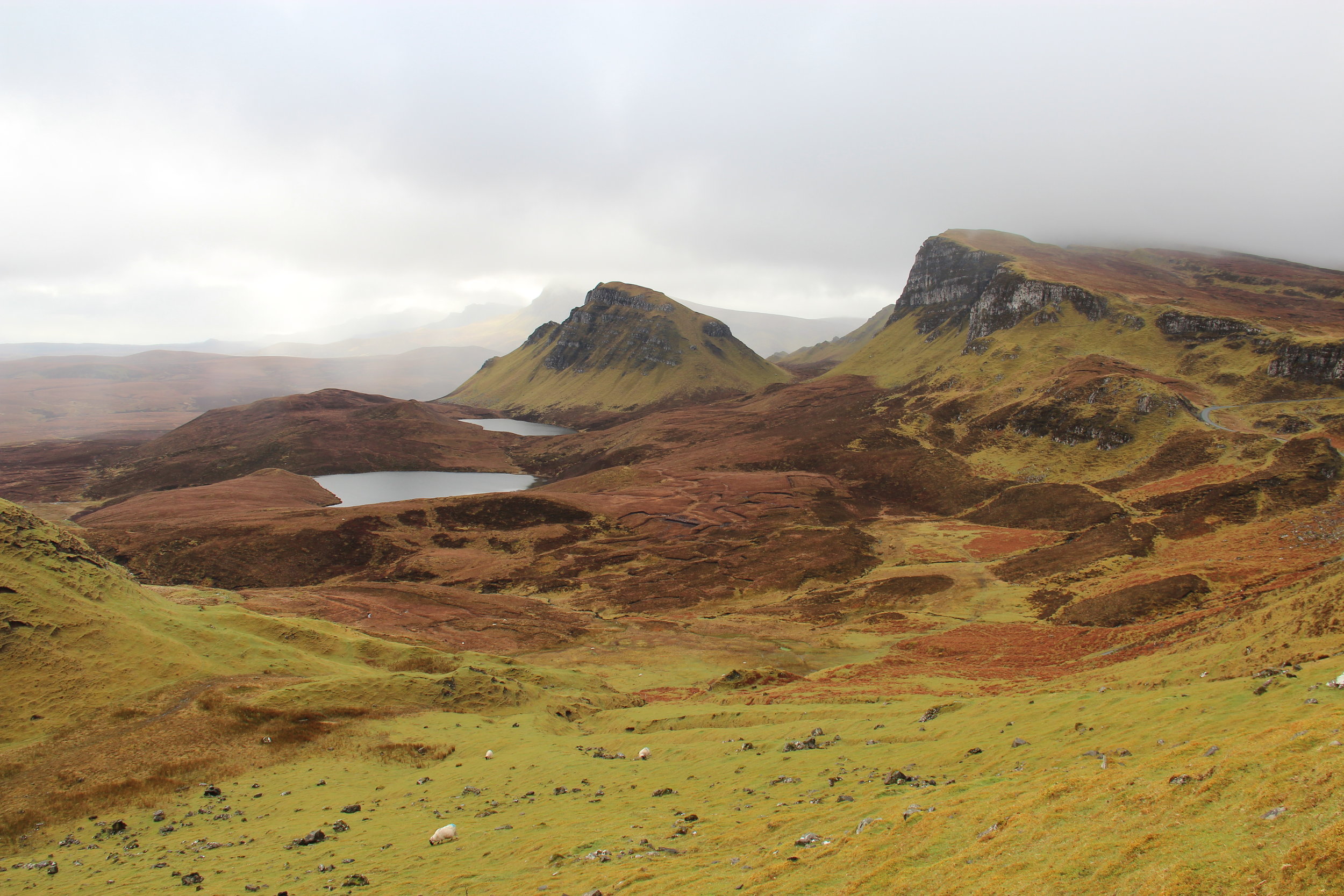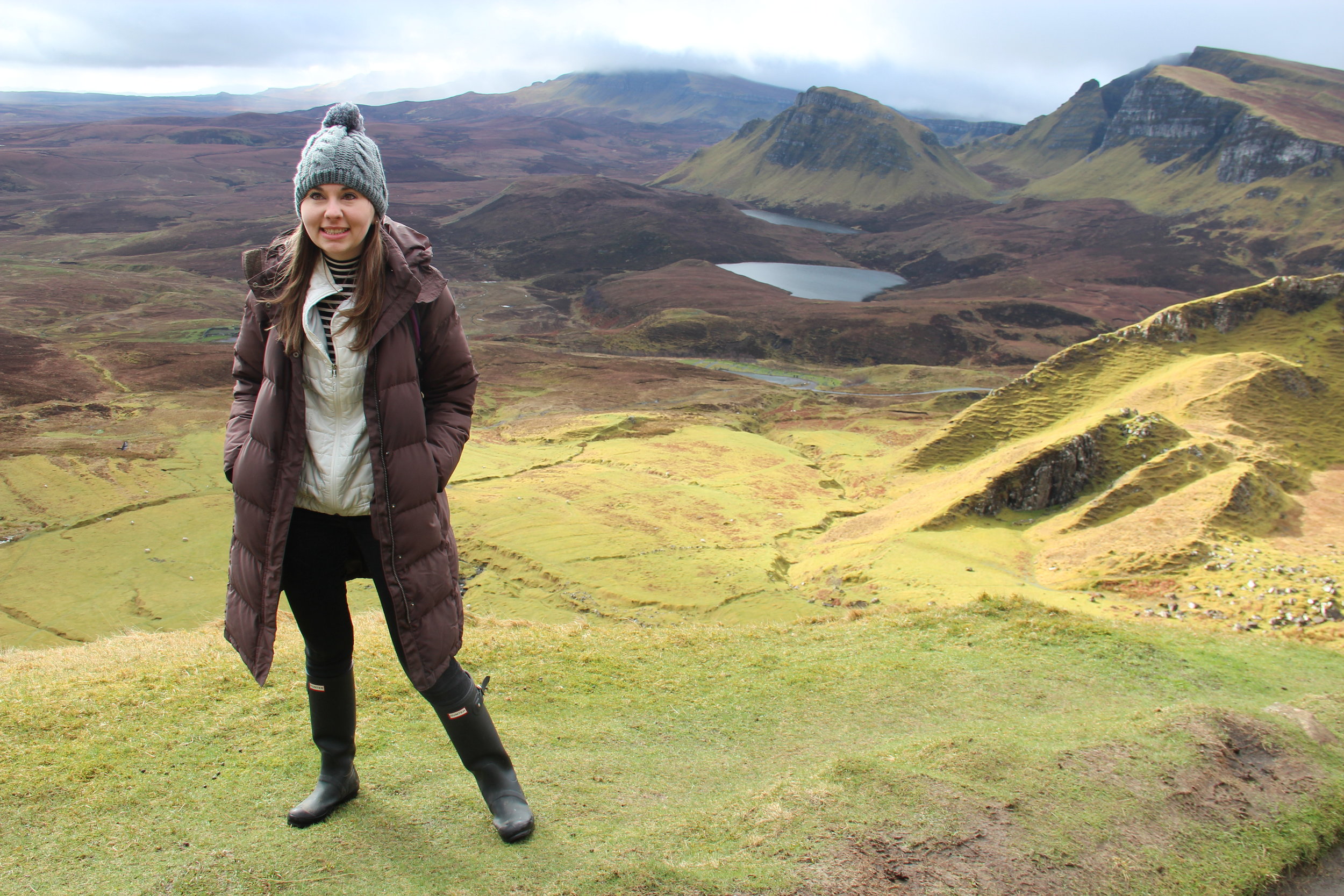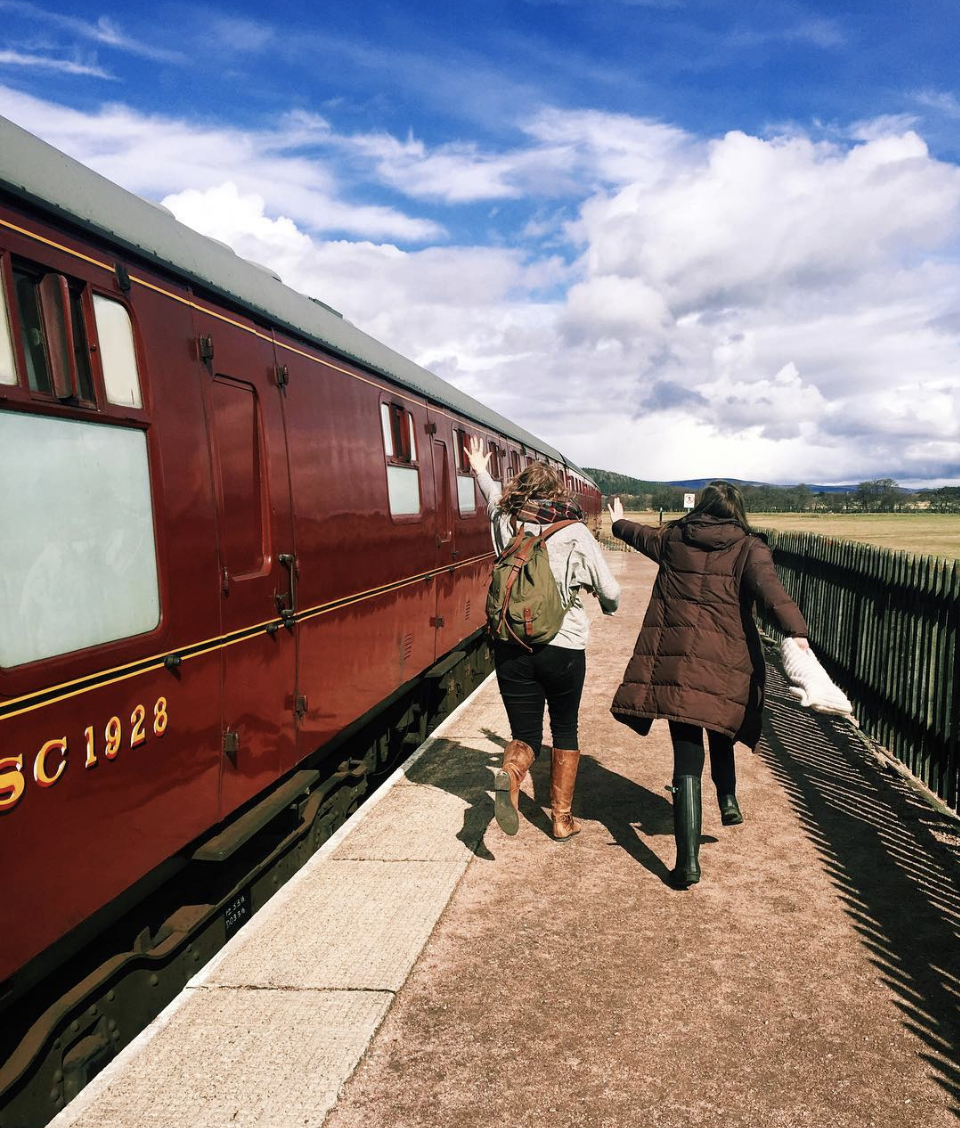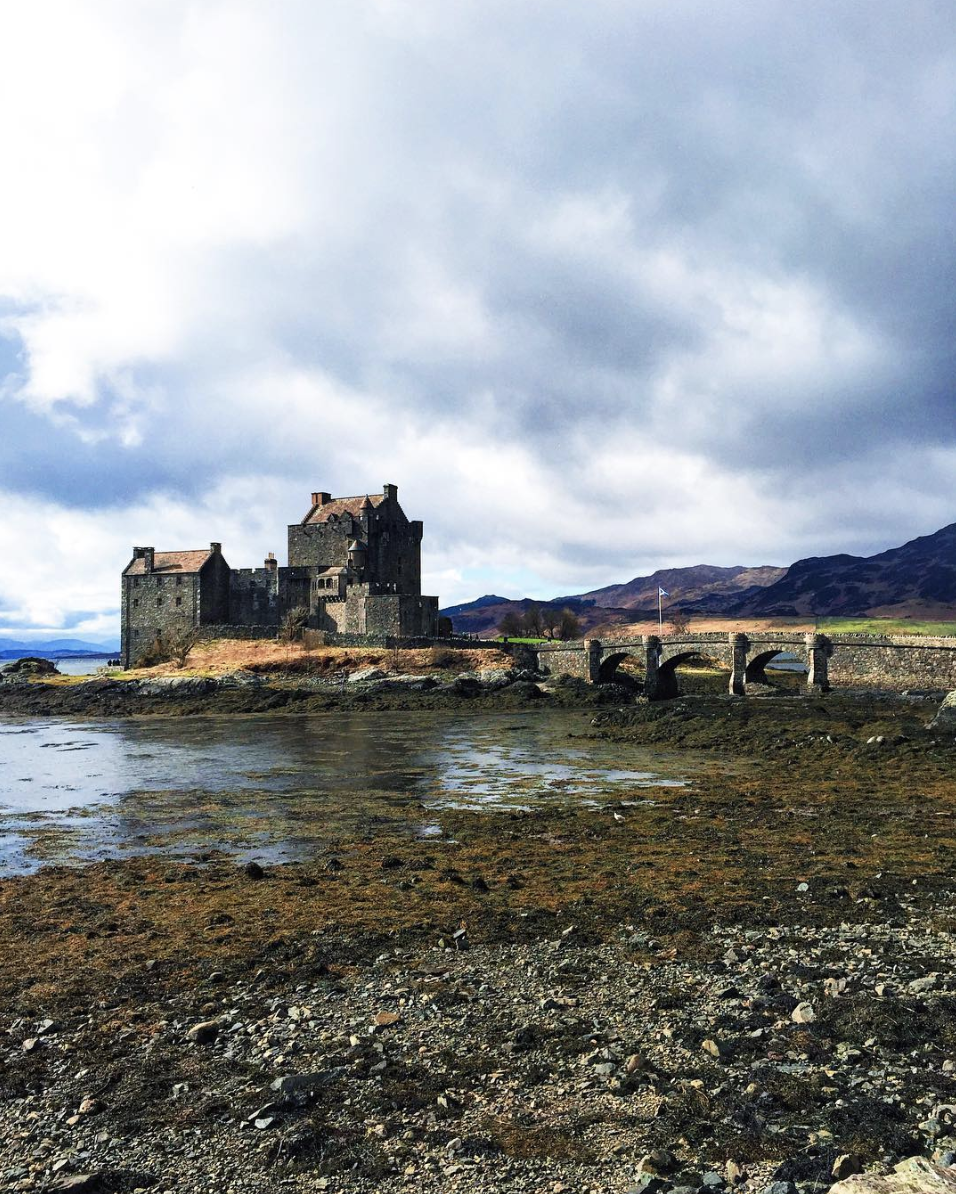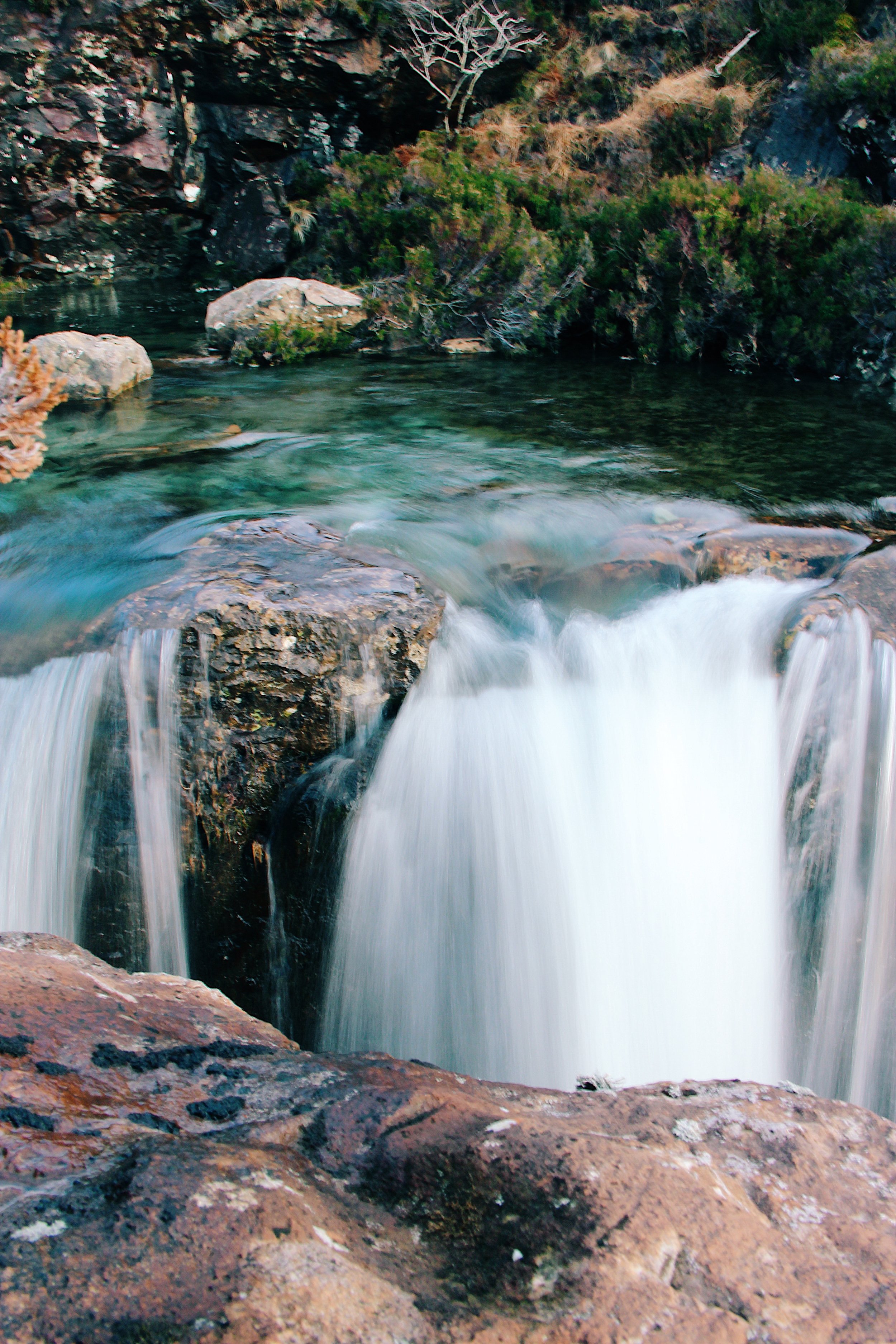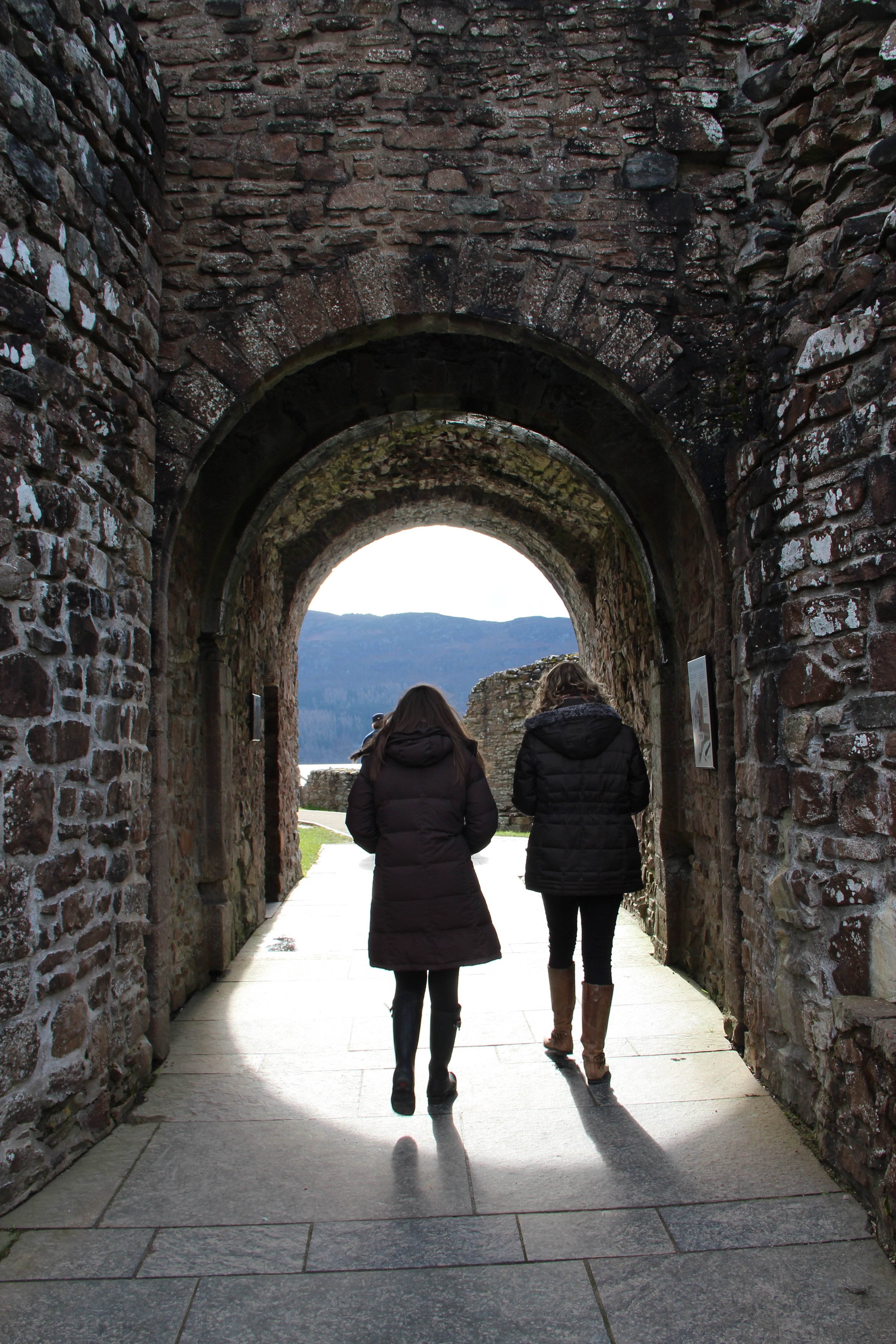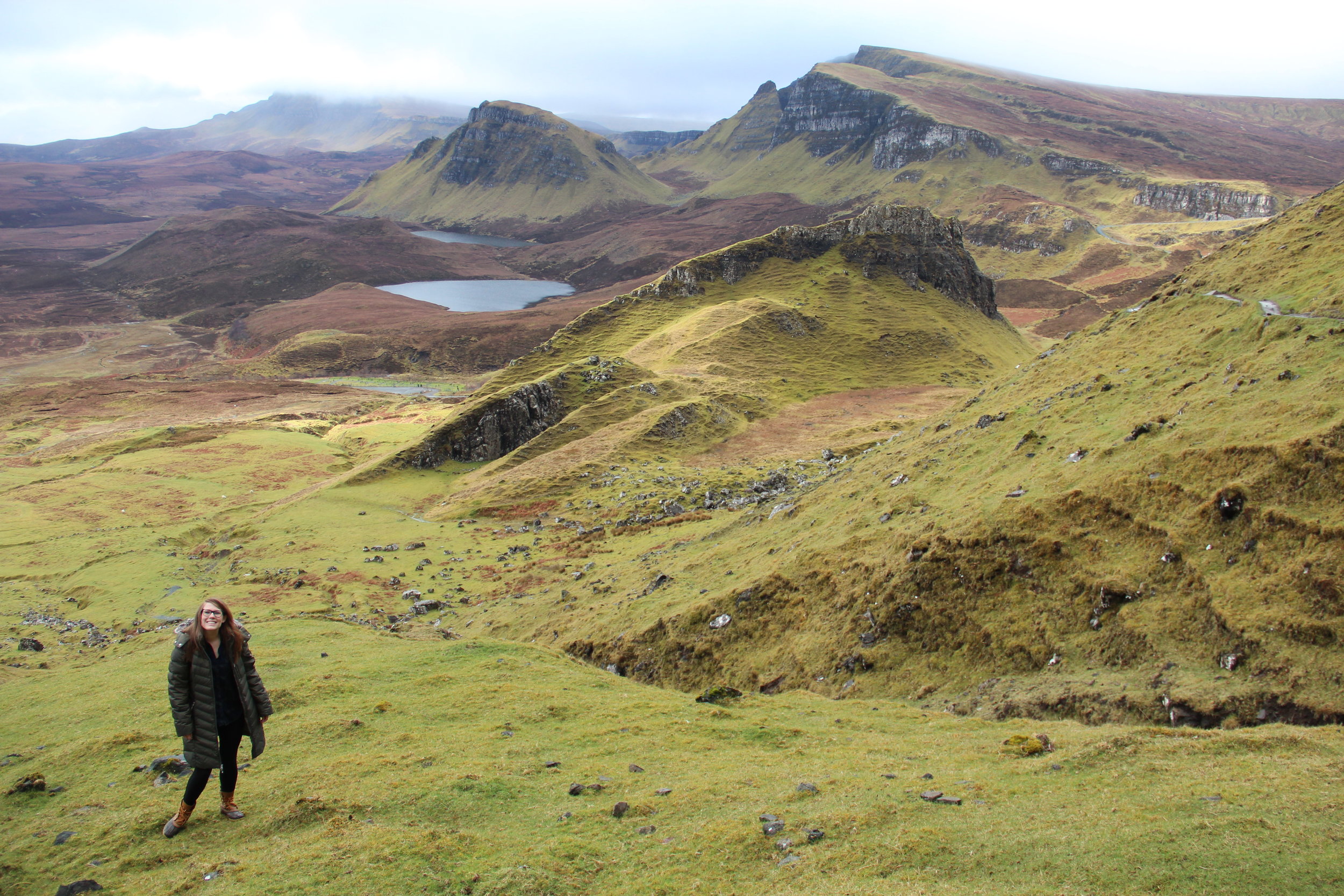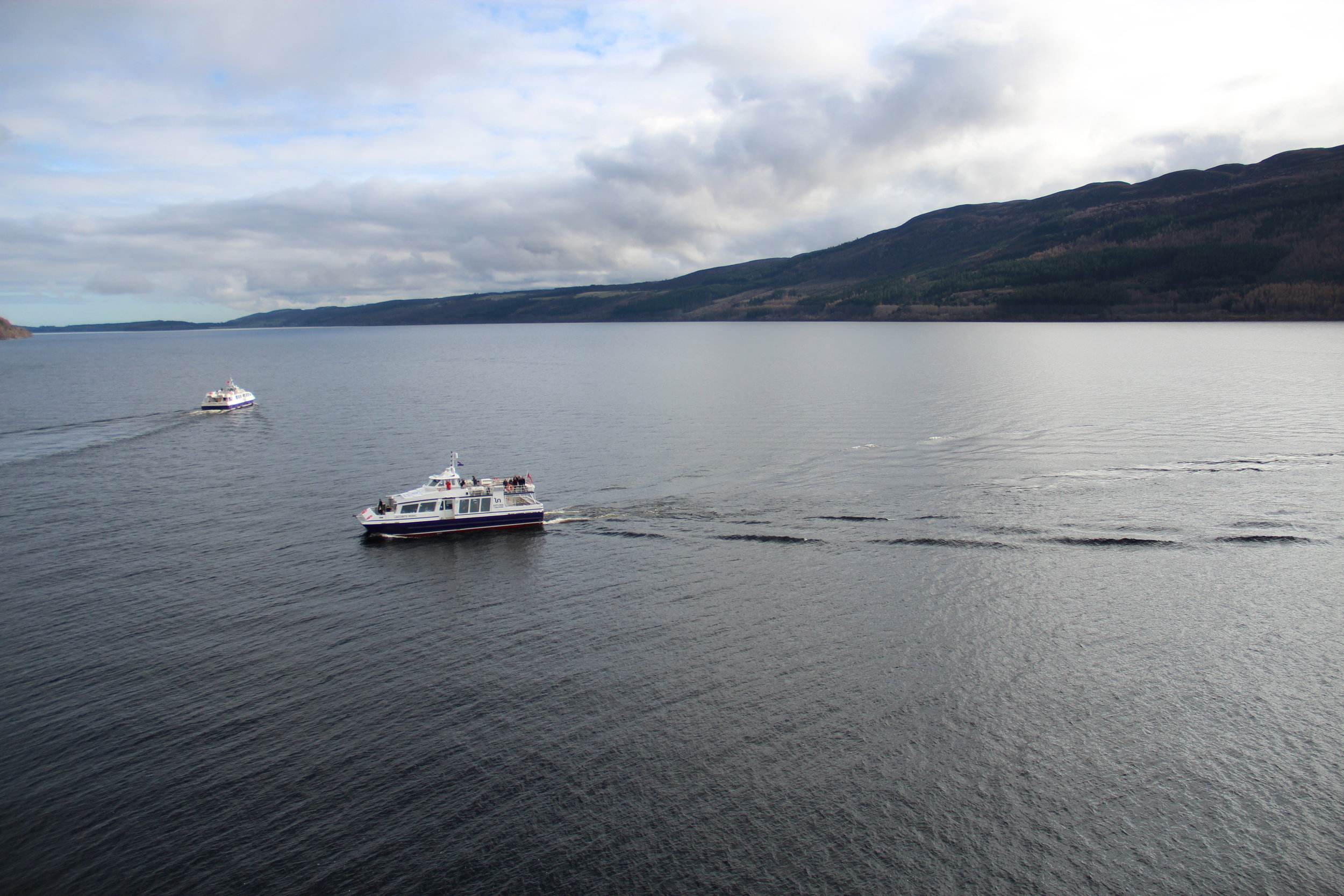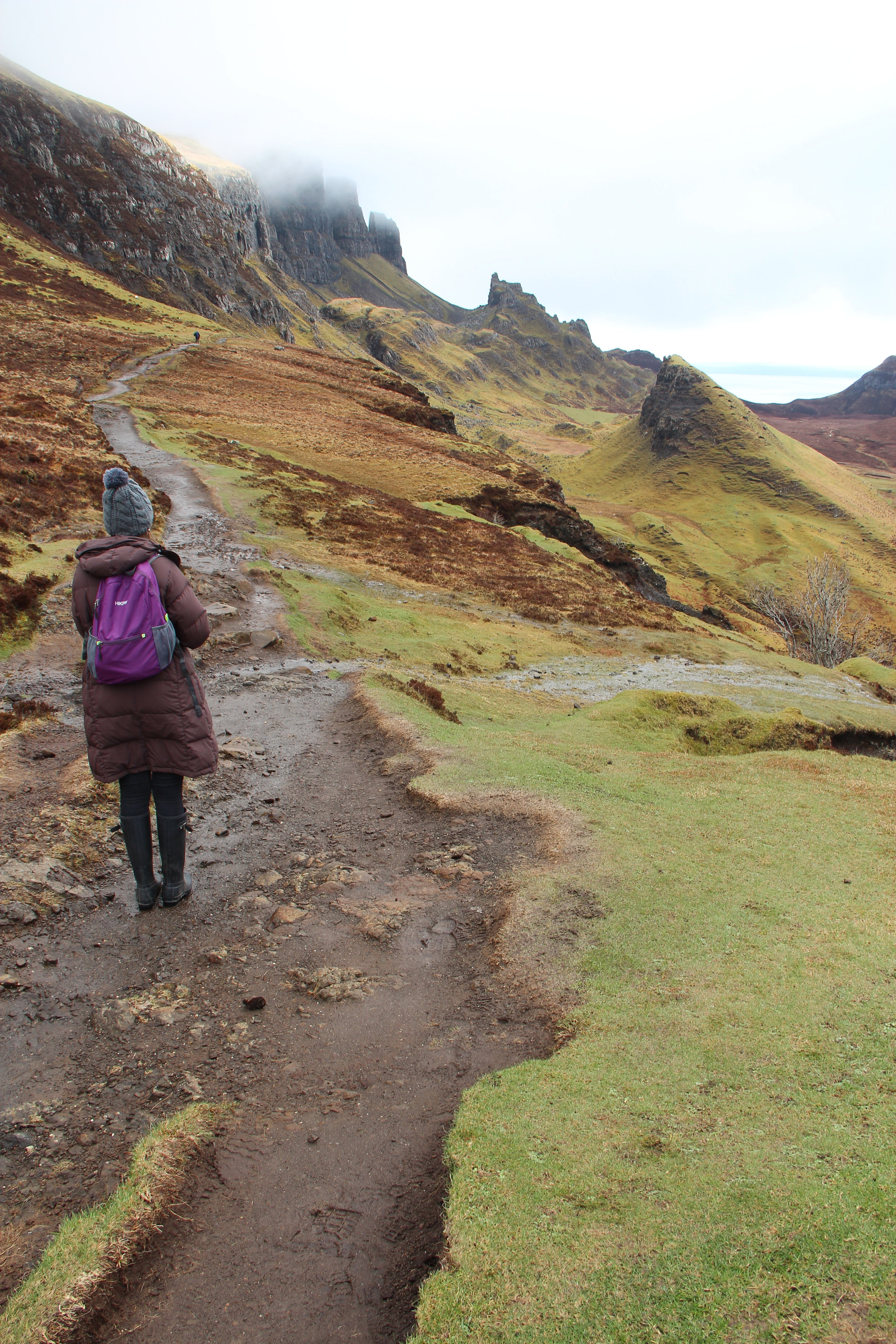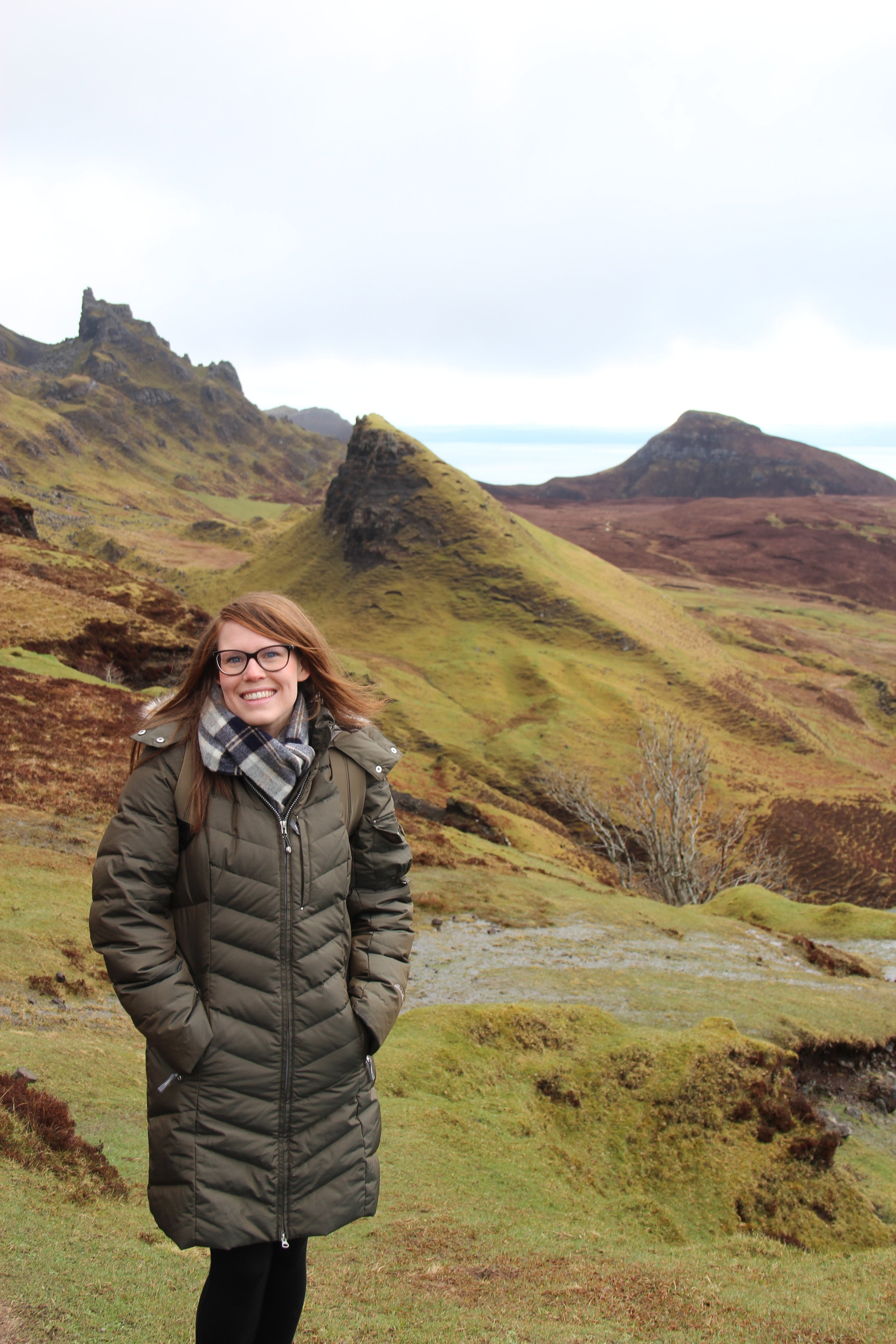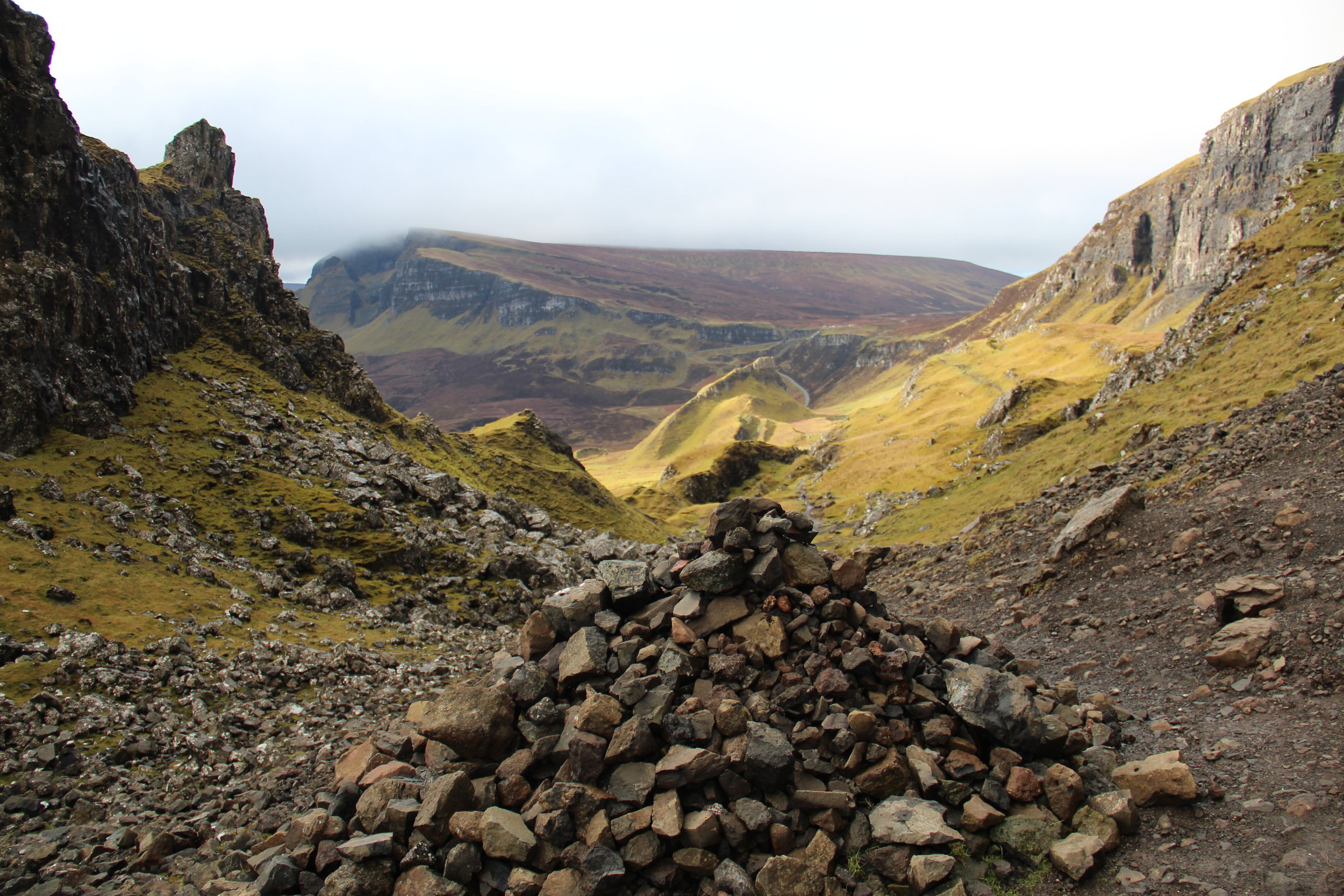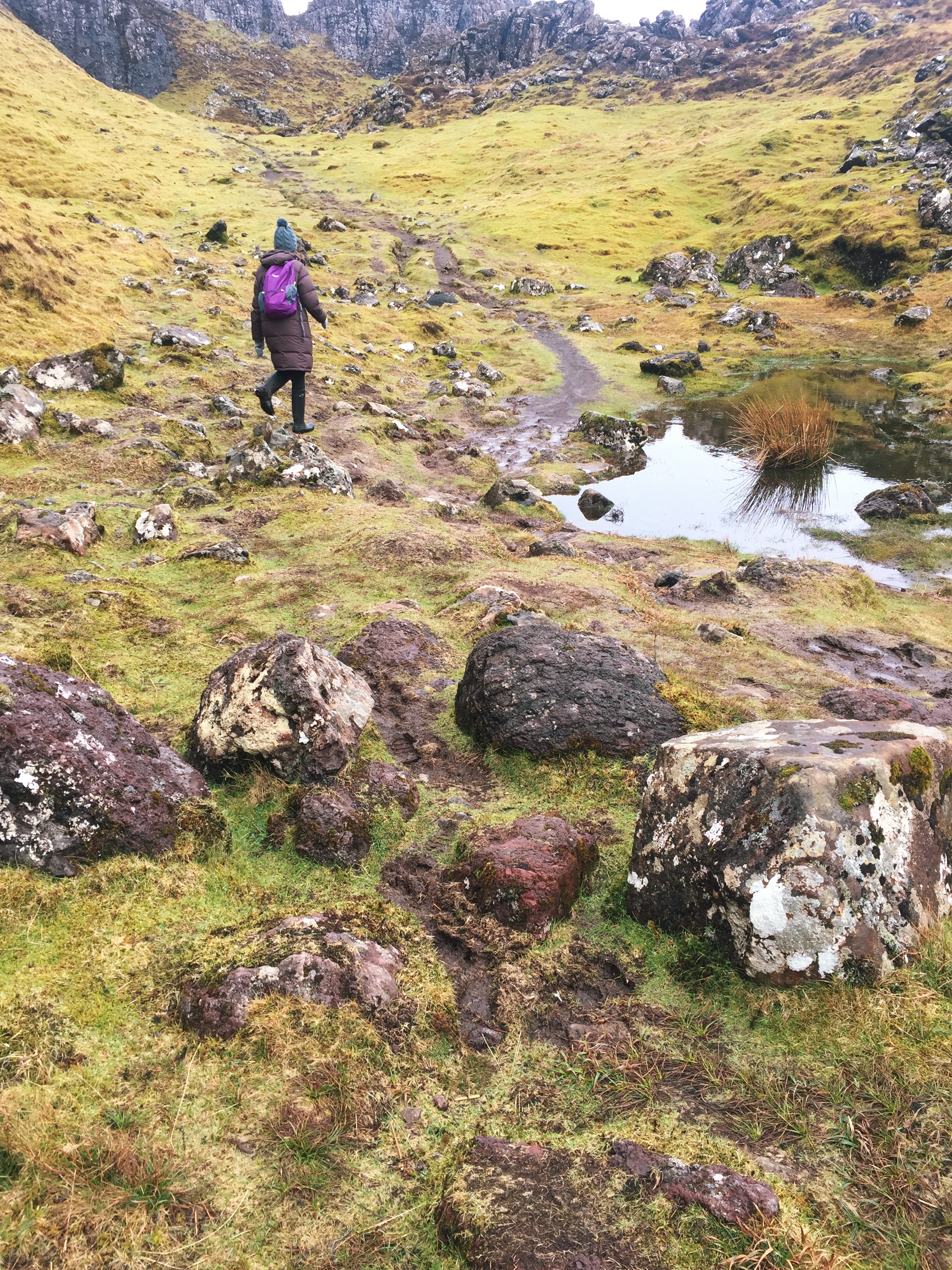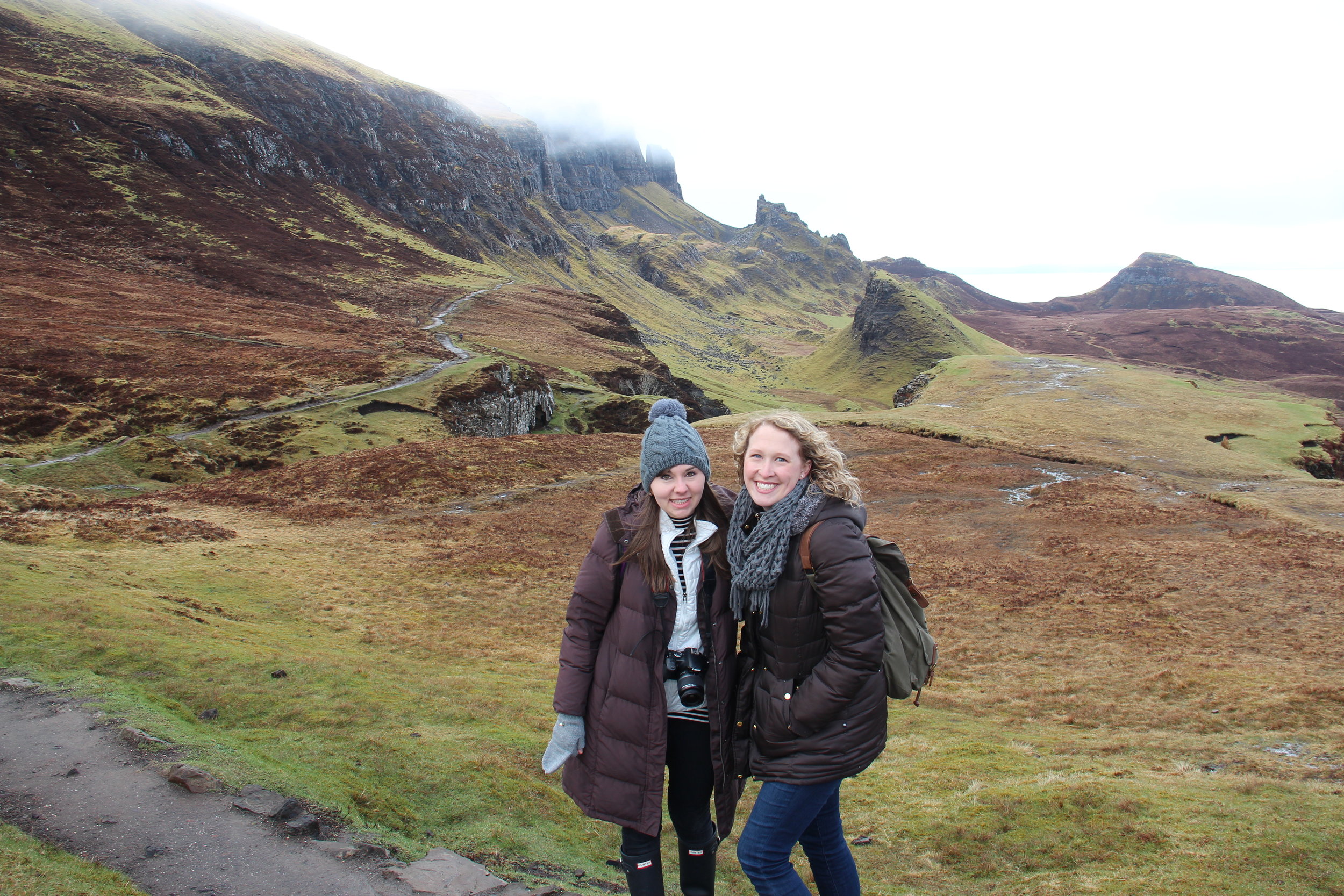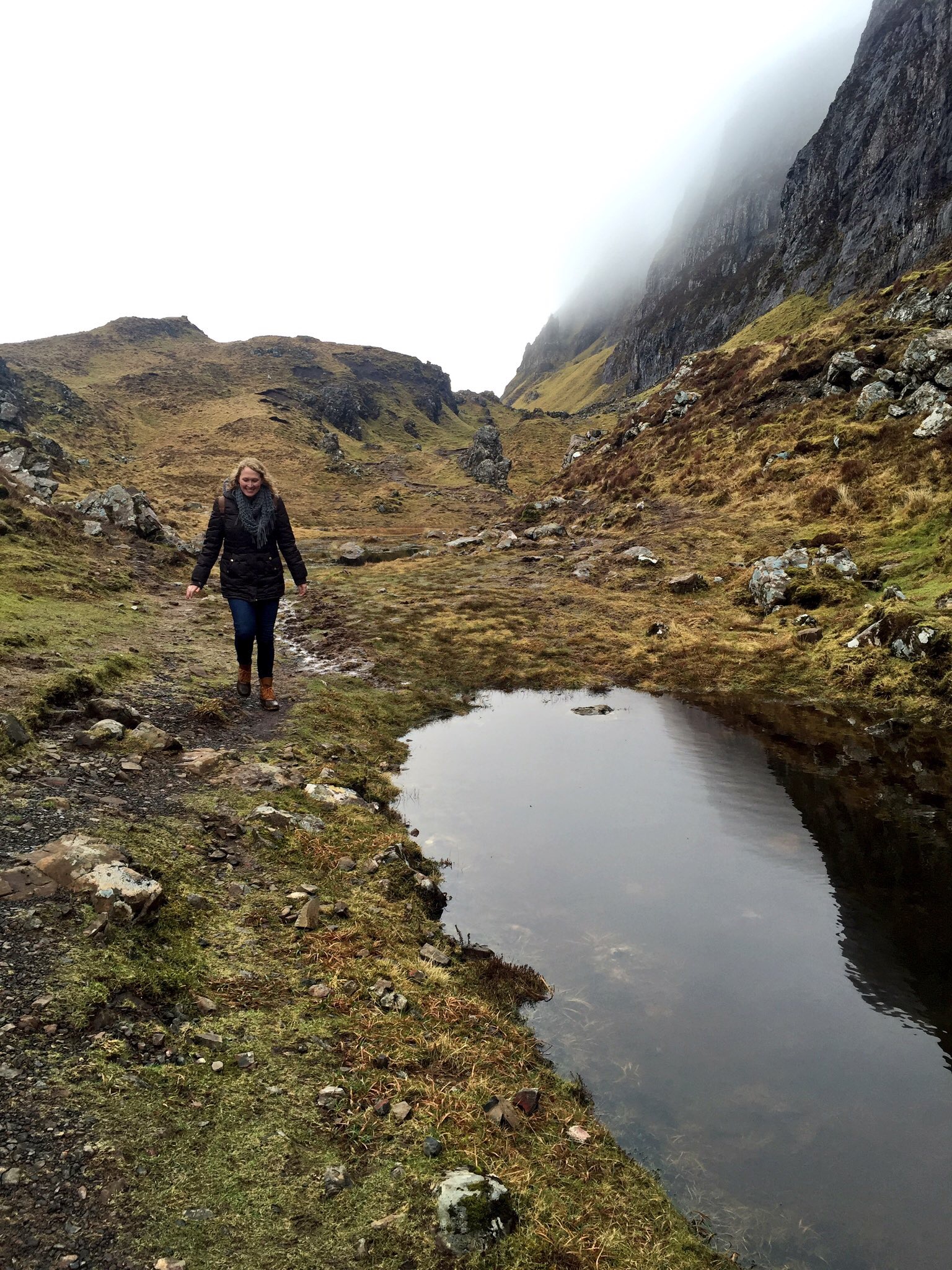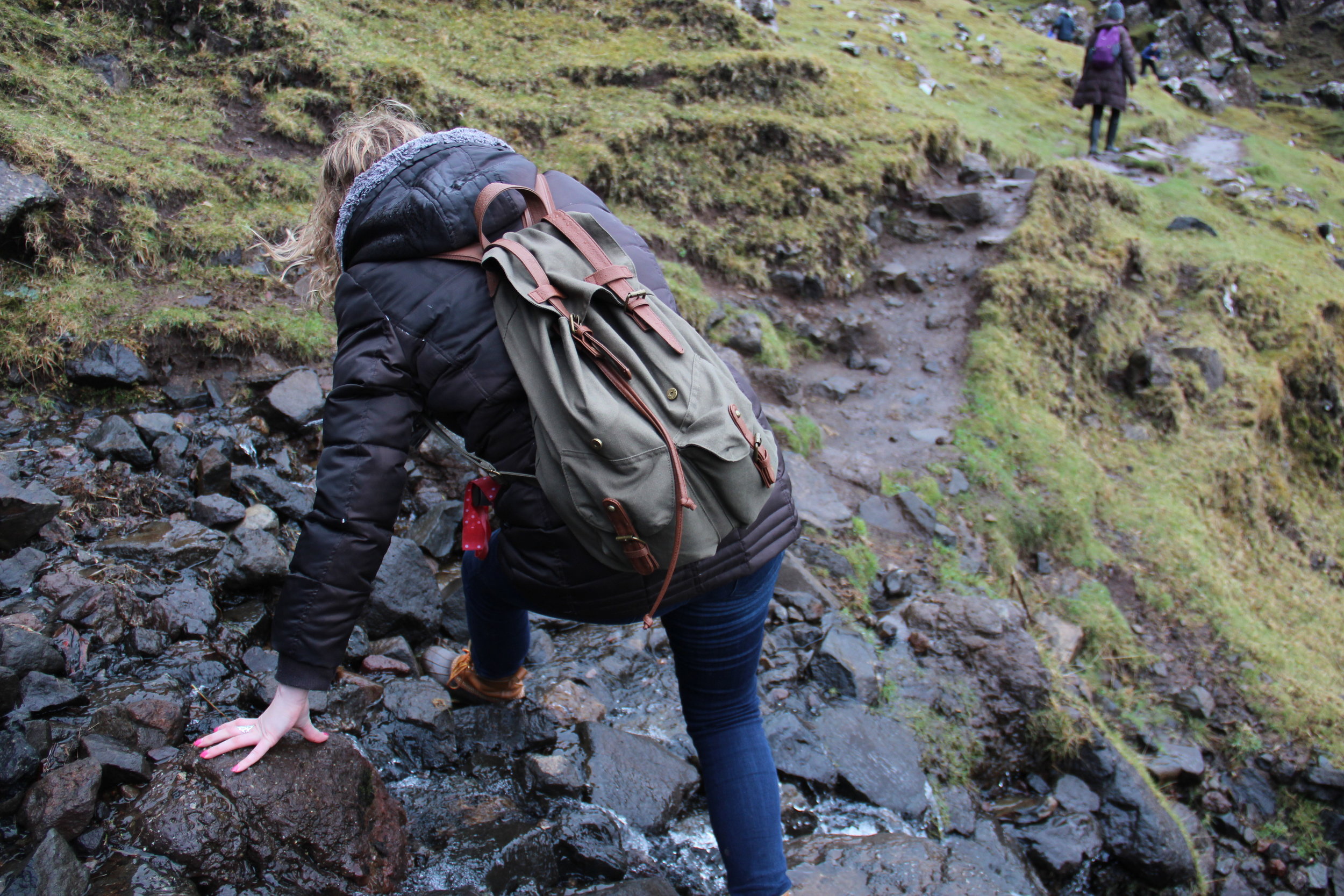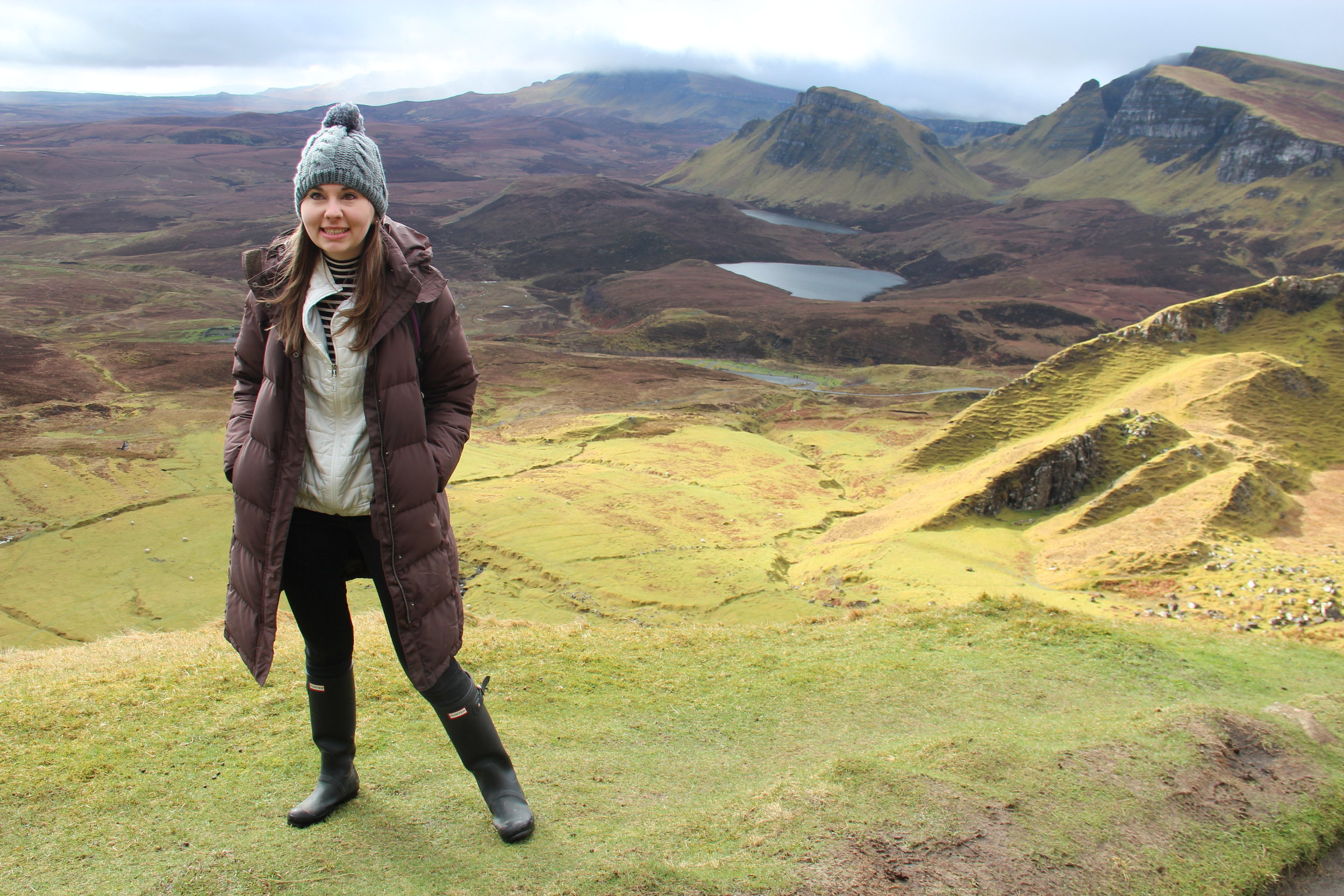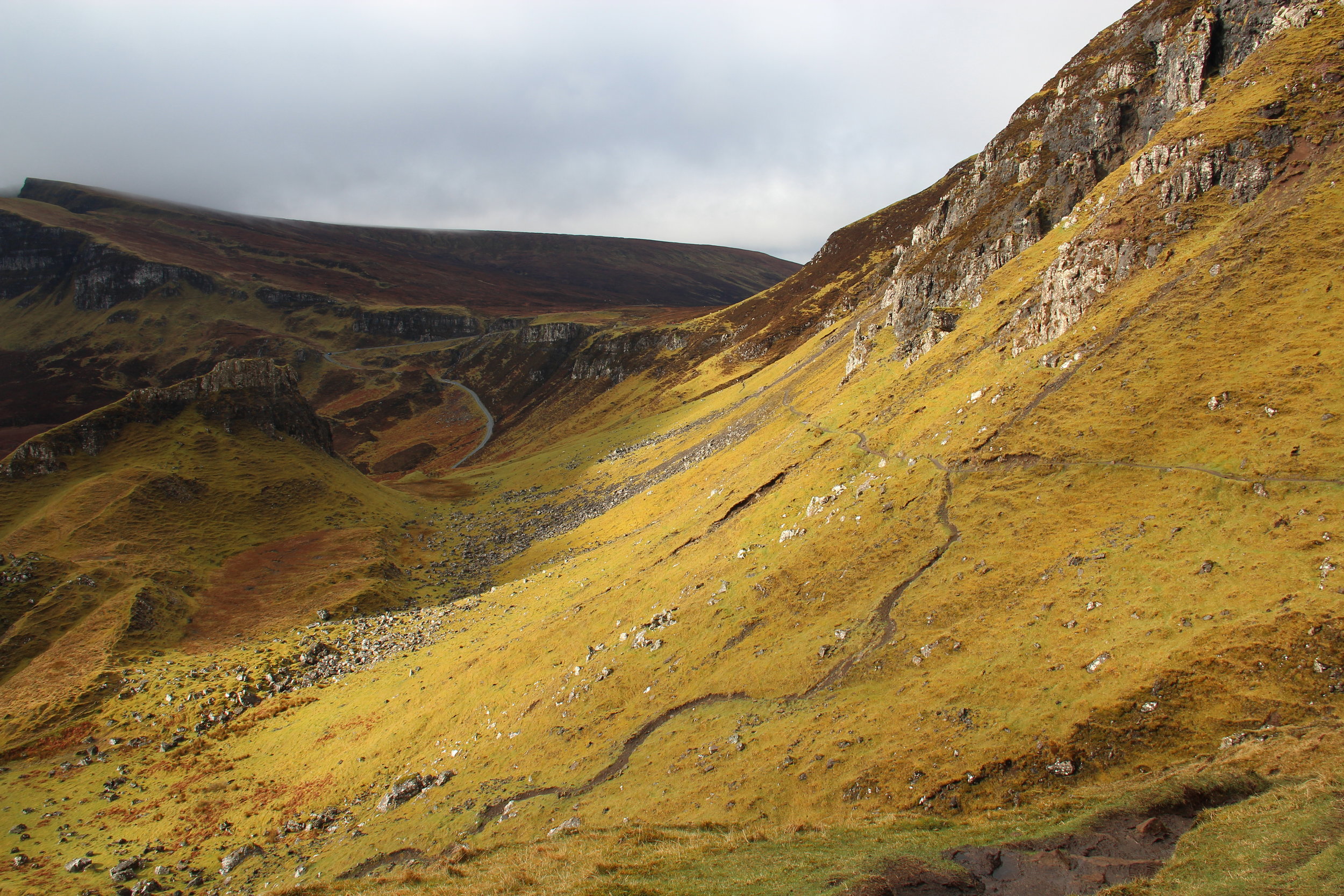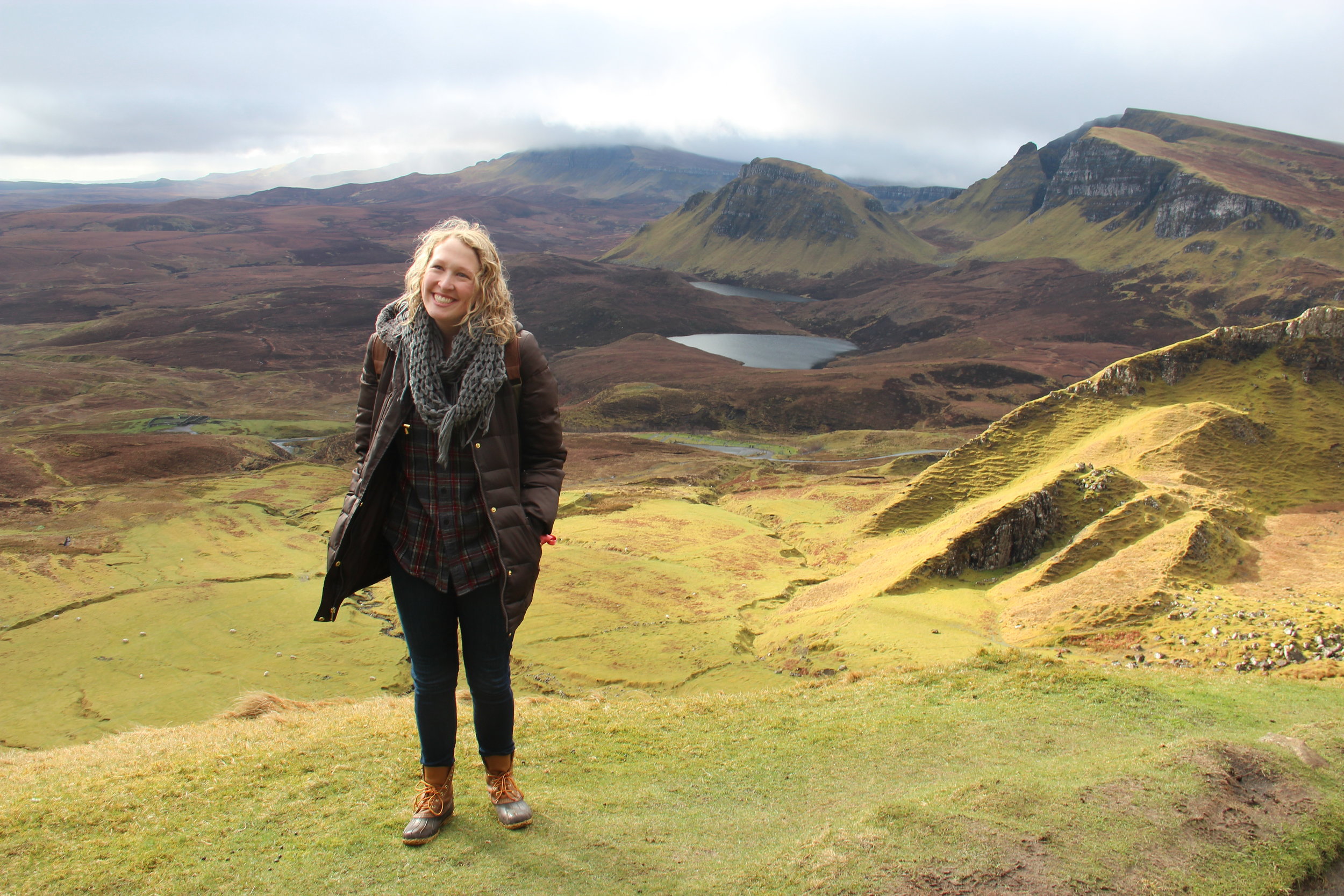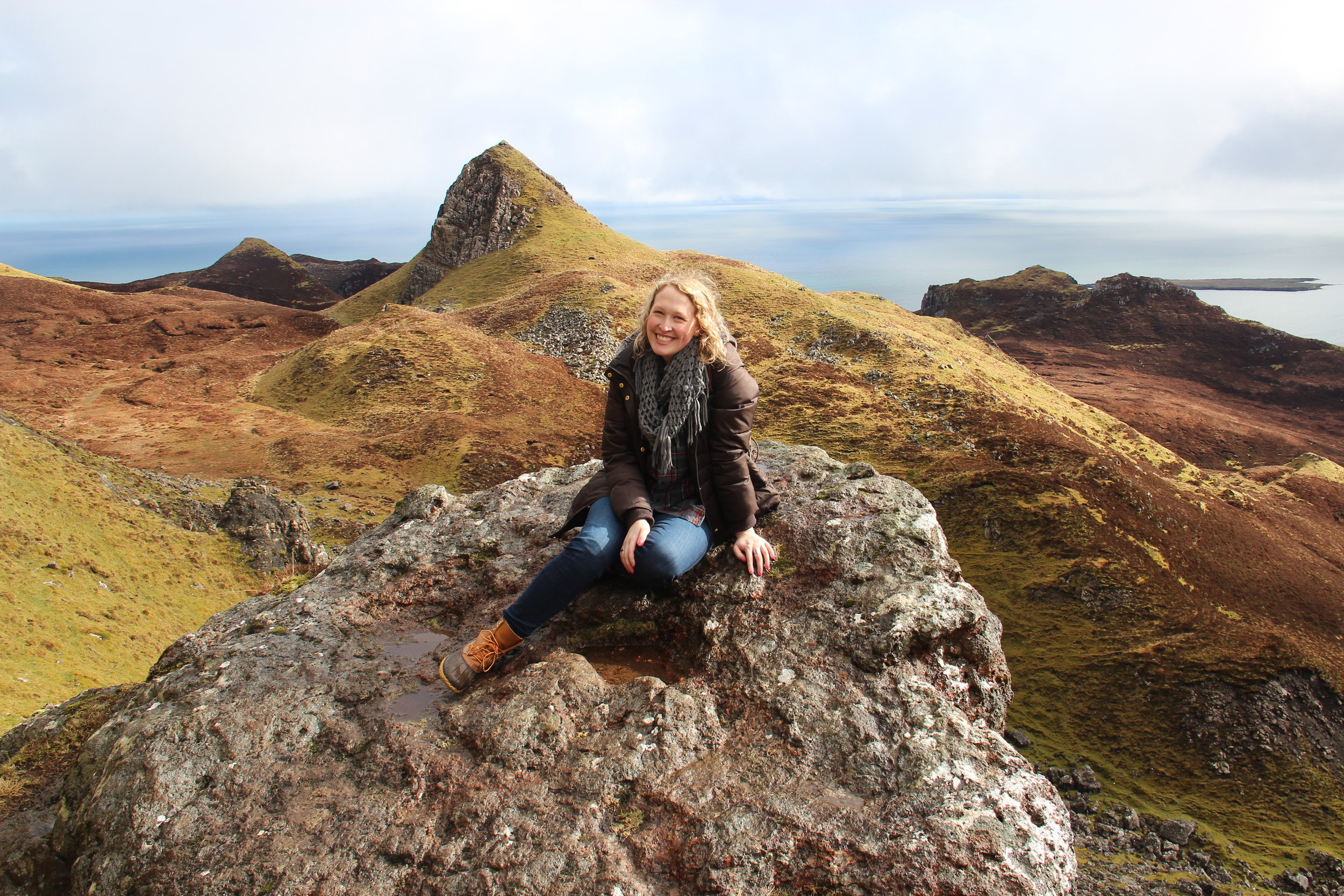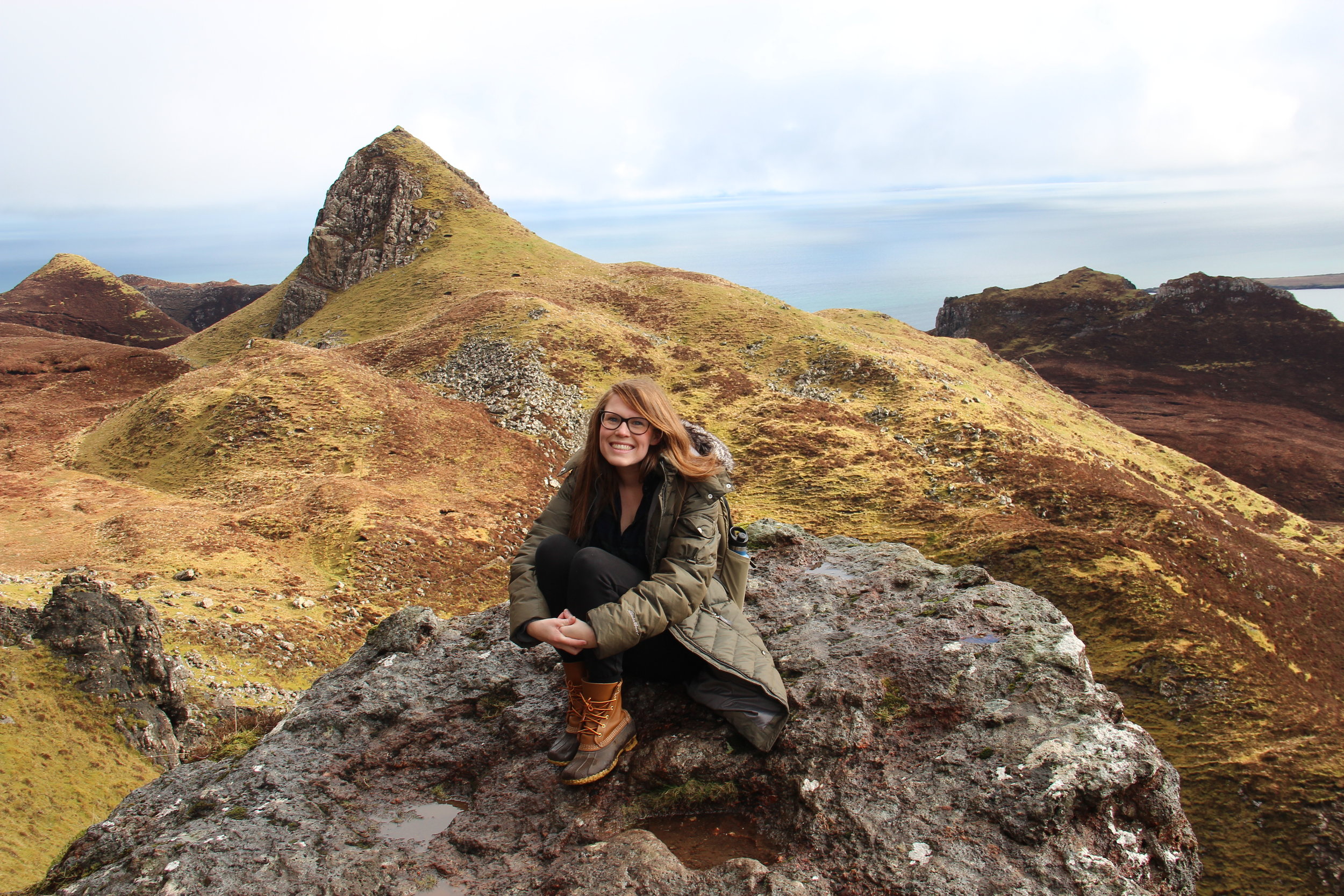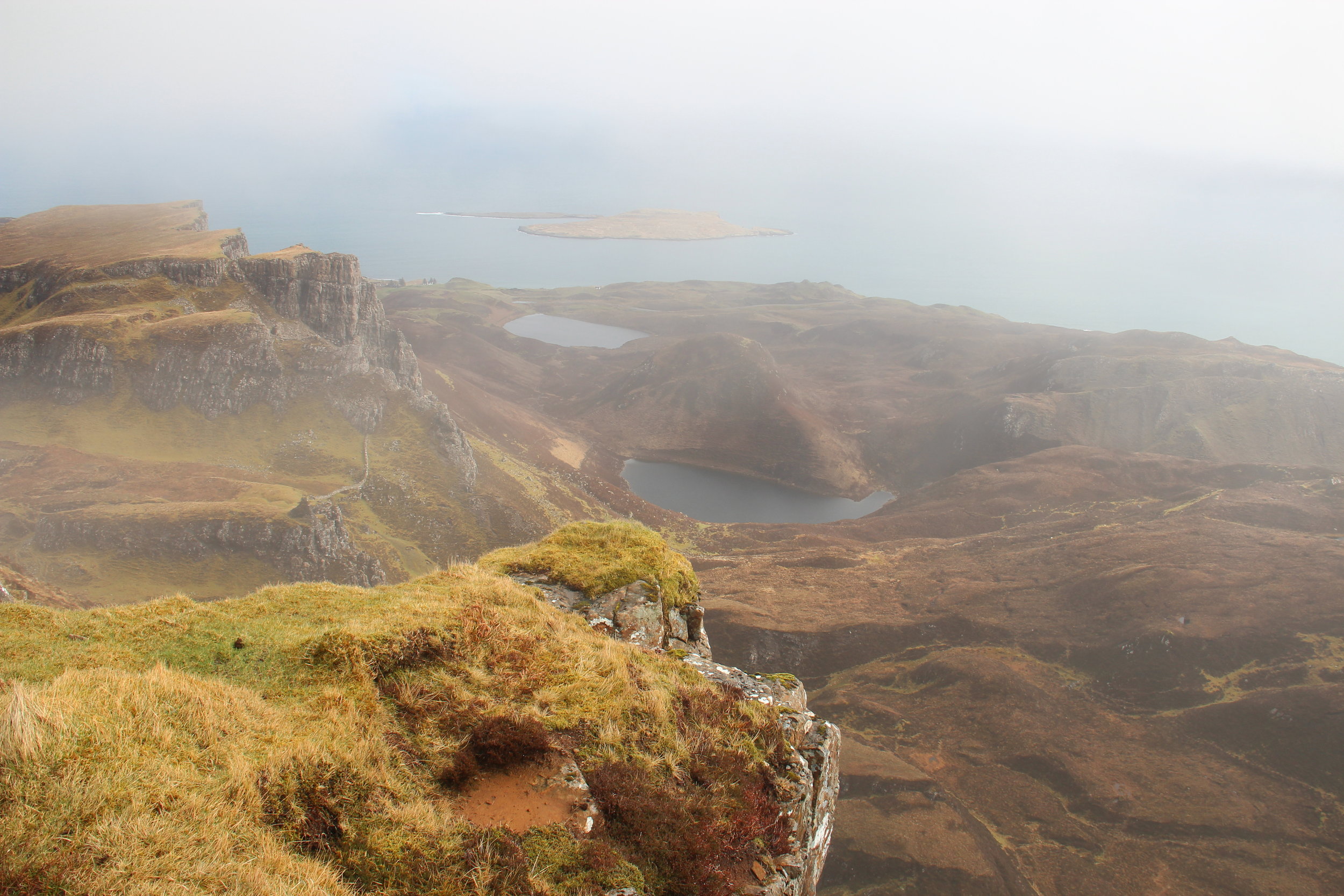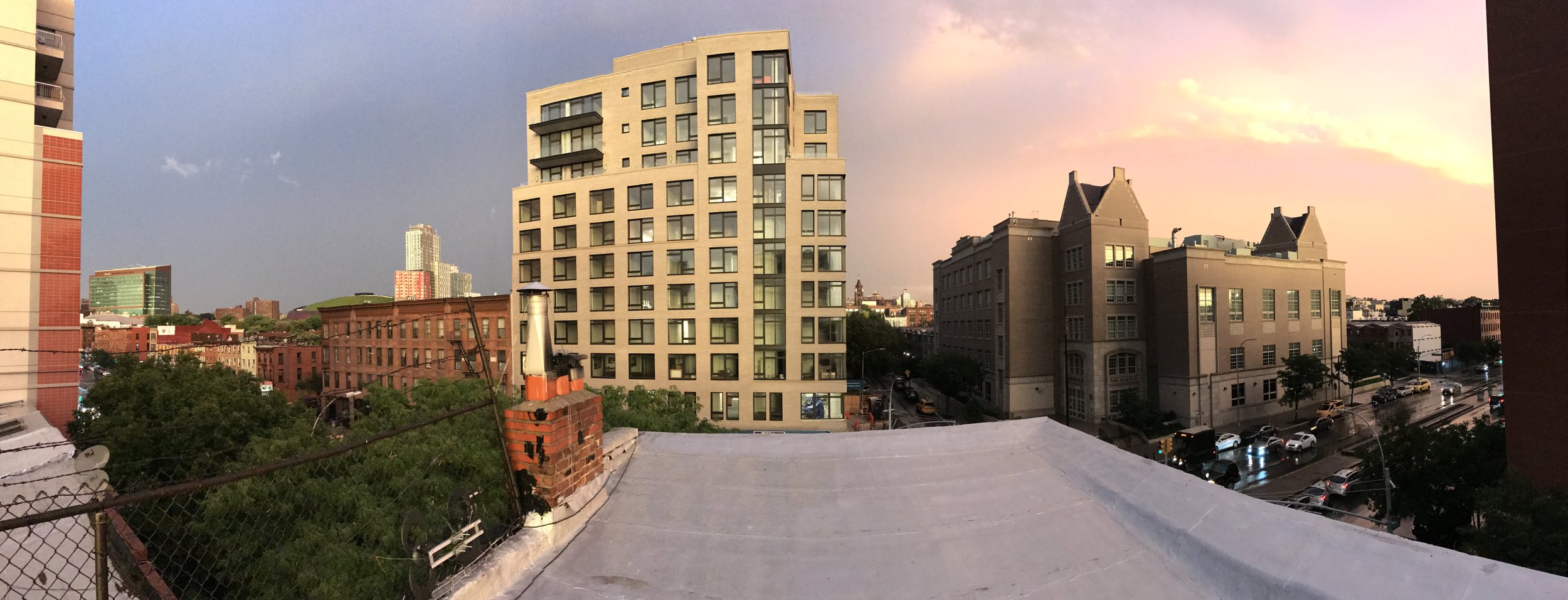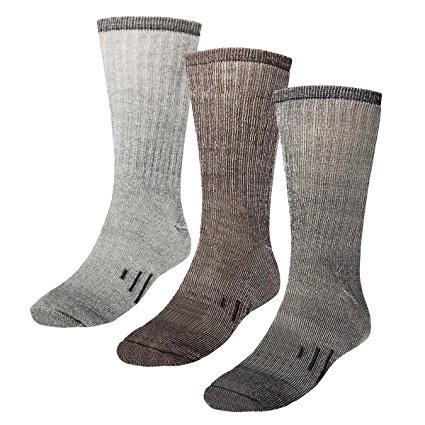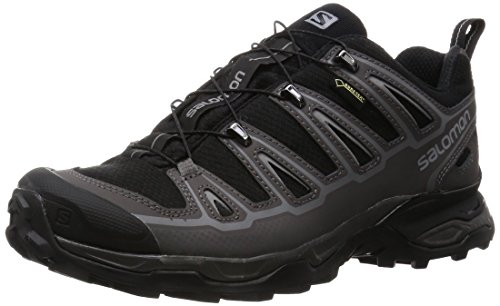Welcome to Part 2 of our digital trip through Italy! This post will focus on Florence—if you’re planning your own trip, be sure to check out my family’s Venice itinerary and Duomo experience. Guides to Tuscany, Cinque Terre, and Rome will be published soon.
FLORENCE
I wasn’t sure what I’d think about Rome or Venice, but I knew I’d love Florence before even leaving Brooklyn. A town that birthed the Renaissance and is surrounded by the green hills of Tuscany is all too easy to adore.
A view of Florence, Italy from Piazza Michelangelo
WHERE TO STAY
“Should I look up a Marriott in Florence?” my dad asked from the couch of our Venice apartment. The whole family wore matching expressions of exhaustion and frustration.
About two minutes prior, Mom had checked her email for the first time since landing in Italy. It was the end of an eventful day, and we were taking a few minutes to plan the next afternoon’s key swap with the Airbnb host in Florence.
But instead of details about how to access the apartment, the host had sent us a long message. The first sentence started with an apology, and then something along the lines of “the apartment you were going to stay in has flooded.” Mom and I both gasped out loud.
Luckily, after some frantic Whatsapp messages, we were able to contact the host—he had another apartment for us that would work. My sister Grace would no longer get her own room; instead, she’d have to board with me and my husband. But it was certainly a better option than spending hours looking for an affordable hotel in a foreign city.
I’d give our Airbnb mixed reviews: the owner was able to resolve the situation, however, he wasn’t very friendly or helpful. The apartment, located in Piazza dei Ciompi, suited our needs and had a fabulous garden where we drink wine every evening. My husband didn’t enjoy the mattress on our bed, but the AC worked well and the natural sunlight in the back two rooms made for a lovely wake up call.
And if you’re traveling with a smaller group, this Airbnb was highly recommended to me. It didn’t work for our numbers—but the view looked incredible.
THINGS TO DO
STATUE OF DAVID
Seeing David in person is vastly different that looking at a picture of Michelangelo’s marble masterpiece. Don’t like museums? This one has about three rooms—you can handle it. Don’t understand the importance? Download Rick Steves' podcast and listen while you walk around the gallery. It’s like having a free, personal tour!
Tips: Purchase tickets ahead of time to skip the line. Use this link for the official ticket website. Allow at least 45 minutes to an hour at this museum. Note that it’s closed on Mondays.
The Statue of David in the Galleria dell'Accademia
DUOMO
The cathedral, the baptistry, and the climb to the top of this building’s iconic dome were memorable moments of our Florence experience. We ran out of time—but there’s even more to see, including a bell tower and an ancient crypt. For more on our Duomo climbing experience, check out this blog post.
Tips: Buy tickets ahead of time to skip some lines. We purchased the 18 Euro passes for access to all the monuments for 72 hours. A separate (free) reservation must be made if you’d like to climb up the dome.
The Duomo's ornate cathedral.
PIAZZALE MICHELANGELO
This was one of my favorite adventures in Florence. After lunch and a little rainstorm, we walked from the Uffizi Gallery over the Ponte Vecchio Bridge and through the quaint neighborhood of San Niccolò. Our destination was Piazzale Michelangelo, a hill that offers stunning views of Florence.
Tips: If you are visiting in spring, don’t go straight to the top! We stopped at a rose garden on the way up to the lookout point. It was nearly deserted and offered beautiful vistas. Once you’ve snapped a few photos, continue your journey to the peak of the hill. Grab a beer, take more pictures, go to the bathroom (for a Euro), and enjoy Florence’s Duomo-dominated skyline.
Piazzale Michelangelo's rose garden.
PALAZZO MEDICI RICCARDI
My husband, my brother-in-law, and I stopped into this Renaissance palace that was once owned by the infamous Medici banking family. Built in the mid-1400s, this stone structure holds a wealth of frescoes, tapestries, Venetian chandeliers, and government history—including artifacts, like a bed that Neapolitan slept in! One of its rooms is still used today by state agencies.
Tips: It’s worth mentioning that this is one of the only museums open on a Monday in Florence. We arrived around 4pm and experienced no line. Tickets cost 7 Euro.
One of the (casual) parlors at the Medici Palace
MERCATO CENTRALE
Stop by this large market and food hall to sample everything from buffalo mozzarella to wine. This is one of those places to go if everyone in your group wants to eat something different and you’re all traveling on a range of budgets. Full disclosure: We walked around and did some shopping, but didn’t eat much here as it was around dinnertime, and we had made reservations at La Giostra!
Truffles at the Mercato Centrale
PASTA CLASS
While some of us were exploring the Medici palace and the Duomo’s baptistry, my mother and sisters opted to take a pasta making class. They learned how to roll several different types of pasta with a small group of people during a three-hour session. If you’re looking for a deeper dive into Italian food, three of my friends who traveled to Florence in 2017 also highly recommend this course.
OTHER THINGS TO DO:
Uffizi Gallery – It’s one of my big regrets that we couldn’t fit this in—but our free day in Florence was on a Monday, when the famous Uffizi is closed!
Boboli Gardens
Bargello
Museo dell'Opera del Duomo
Giardino Bardini
Forte di Belvedere
Santa Croce
Palazzo Vecchio
Vasari Corridor
WHERE TO EAT
TRATTORIA ZAZA
This restaurant was a pure delight. We made reservations several weeks in advance, and my husband told the staff we were celebrating a special event (Mother’s Day in Europe!). We were lucky enough to be escorted to a private dining room, complete with antique furniture, a large wooden table, and candle-lit walls.
Of the restaurants in Italy that we visited, this was one of the only places that served me a truly excellent cocktail. The Negroni was spot on, and the 10 Euro jug of house wine for the table was an excellent follow up. Food highlights included the gorgonzola and truffle gnocchi, the famous Florentine T-bone steak that I split with my husband, and the seafood risotto that my sister wouldn't share.


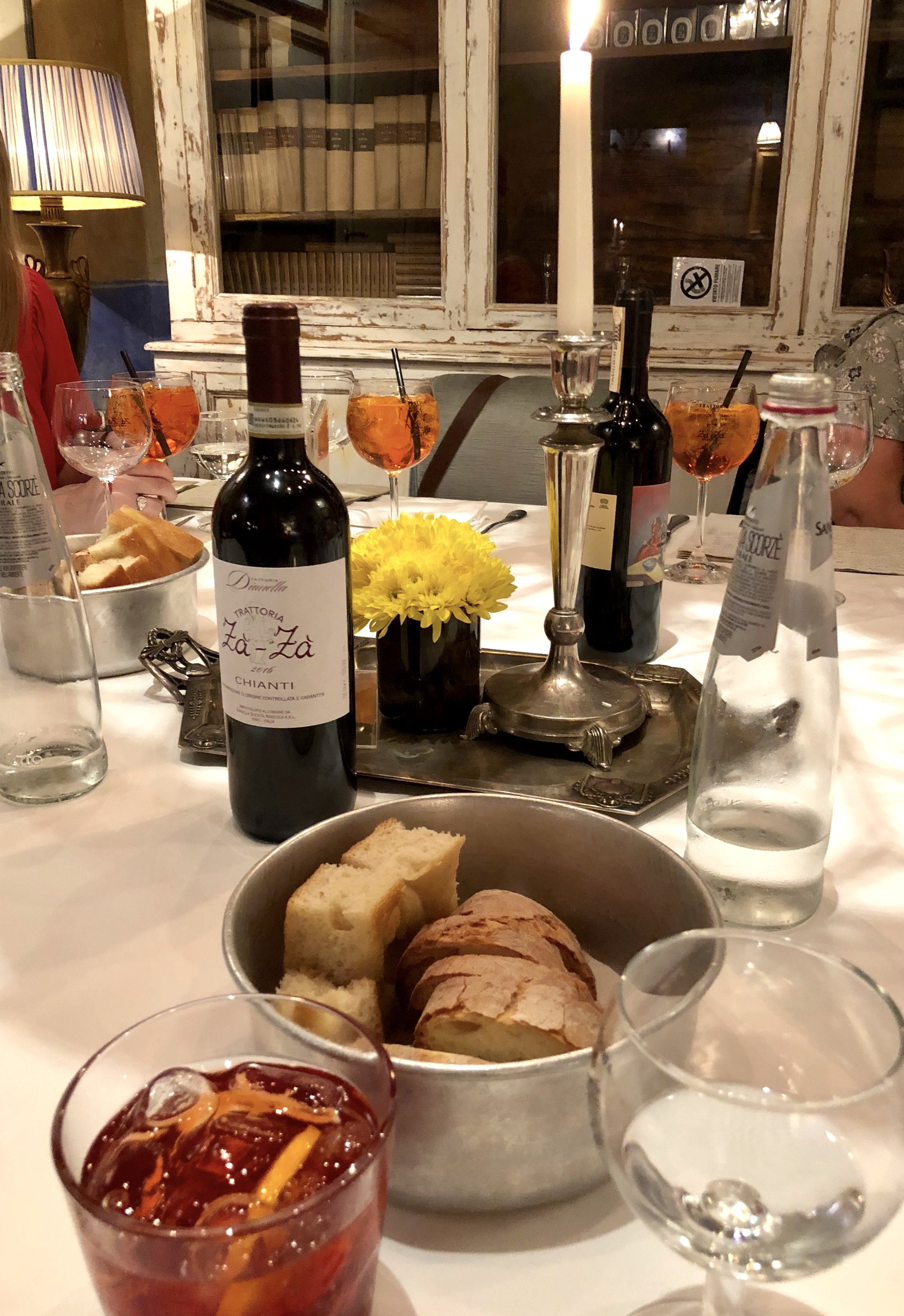

GUSTA PIZZA
Unsure when we’d get home from a full-day tour in Tuscany, we decided to order in food one night. Family-run Gusta Pizza had been recommended to us by a slew of people—and it didn’t disappoint. We each ordered our own pizza (they’re slightly larger than a personal pizza in the USA) and chowed down on crispy dough loaded with fresh basil, mozzarella, and olive oil. Gusta uses a wood fire stove, which makes each pie slightly different. I remember telling my sister that I “wasn’t very hungry,” and then promptly devoured my whole pizza and all of her leftovers.
Tip: Don’t want to wait in line? Order from your hotel or Airbnb with this website.
ALL'ANTICO VINAIO
This no-frills sandwich shop is famous for its fresh ingredients and sizable portions. It’s a tasty lunch option that usually has a line—but it moves quickly, and if you visit after 1:30 pm you’ll have missed most of the rush. There are no tables and chairs, so we sat underneath the nearby Uffizi Gallery’s awning. Tip: The Dante sandwich’s truffle cream is fantastic!
All'Antico Vinaio's Dante sandwich.
LA GIOSTRA
My husband’s cousin recommended this spot to us, so we made reservations two weeks before our trip. The review? Dad claims his seafood pasta at La Giostra was probably his favorite dish in Italy! Our meal began with a glass of Champagne and a sampling of appetizers, on the house. We then ordered the famous pear ravioli, a creamy plate of burrata, and several other tasty dishes, followed by the tiramisu. Sips of limoncello were served with our check. This experience was one of our pricier meals—but the service, samples, and Tuscan-inspired food made it well worth the extra Euros.
One of the tasty pear and gorganzolla dishes at La Giostra.
TIPS:
Download Rick Steves' podcasts for the museums that you’re interested in visiting—you’ll have more context and can skip the audio guide fees. (We really enjoyed listening to his episode about the Statue of David!)
If you're moving around town all day, consider getting a portable battery for your phone. Traveling alone? Here's a great high-speed option for less than $20. If you're visiting as a couple or with a group, we enjoyed using this external battery pack—it has two charging ports!
The Firenze Card didn't work for us because we were only going to be in Florence proper for two days. But if you're visiting multiple museums, it may be a good option for you! The three-day pass lets you skip lines to many of the top tourists attractions—however, you'd have to go to quite a few museums for the card to pay for itself.
If you're near the Duomo and looking for a sweet treat, we loved the gelato at Edoardo. They had both basic flavors and bizarre ones—like toasted sesame!
Taking cabs? Unlike in NYC, you can't just stick your hand up in the air to hail a cab. Instead you should look for taxi stands. Some locations to find a cab are shown in the map below; use the button in the top left to see the full list.
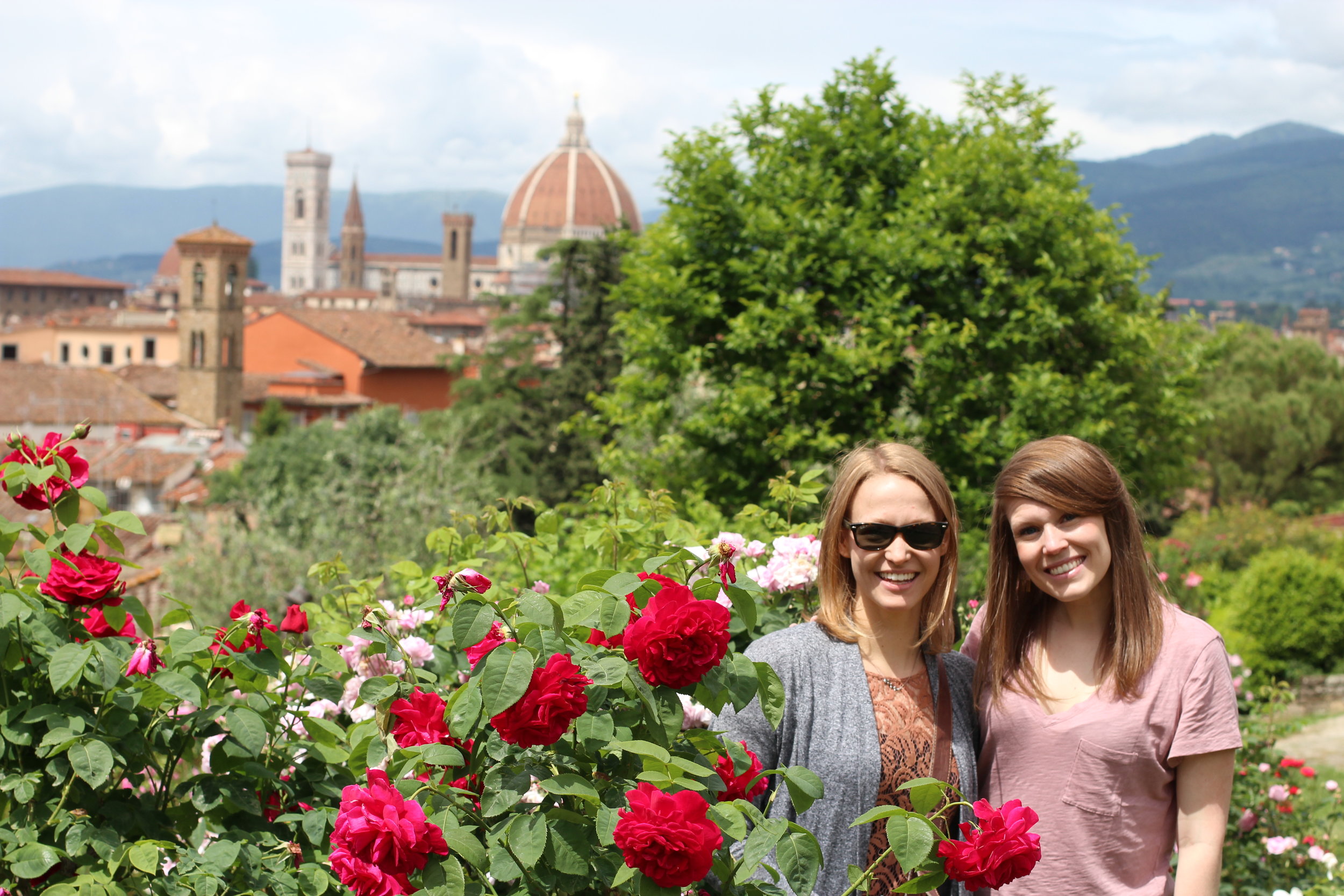
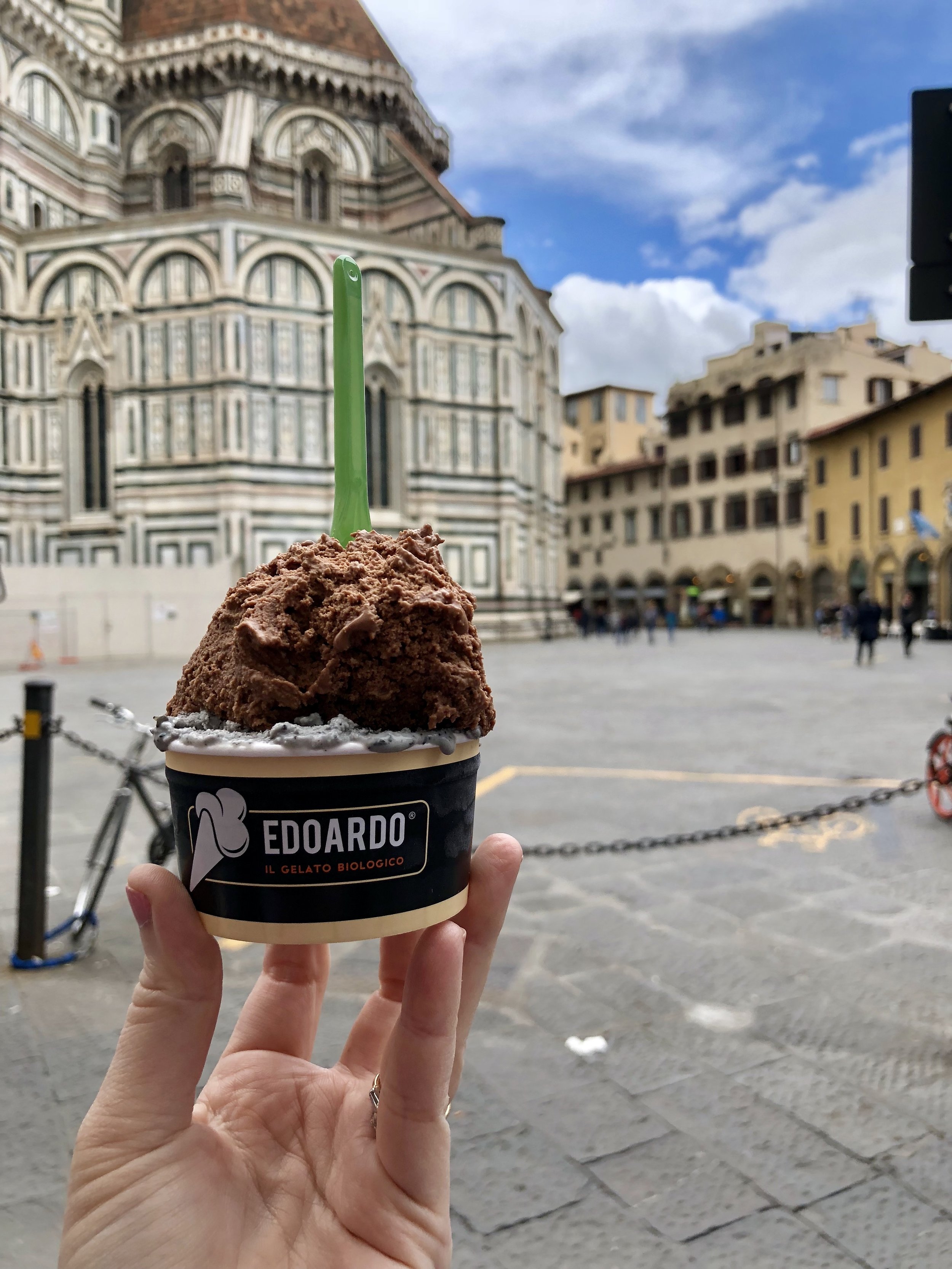

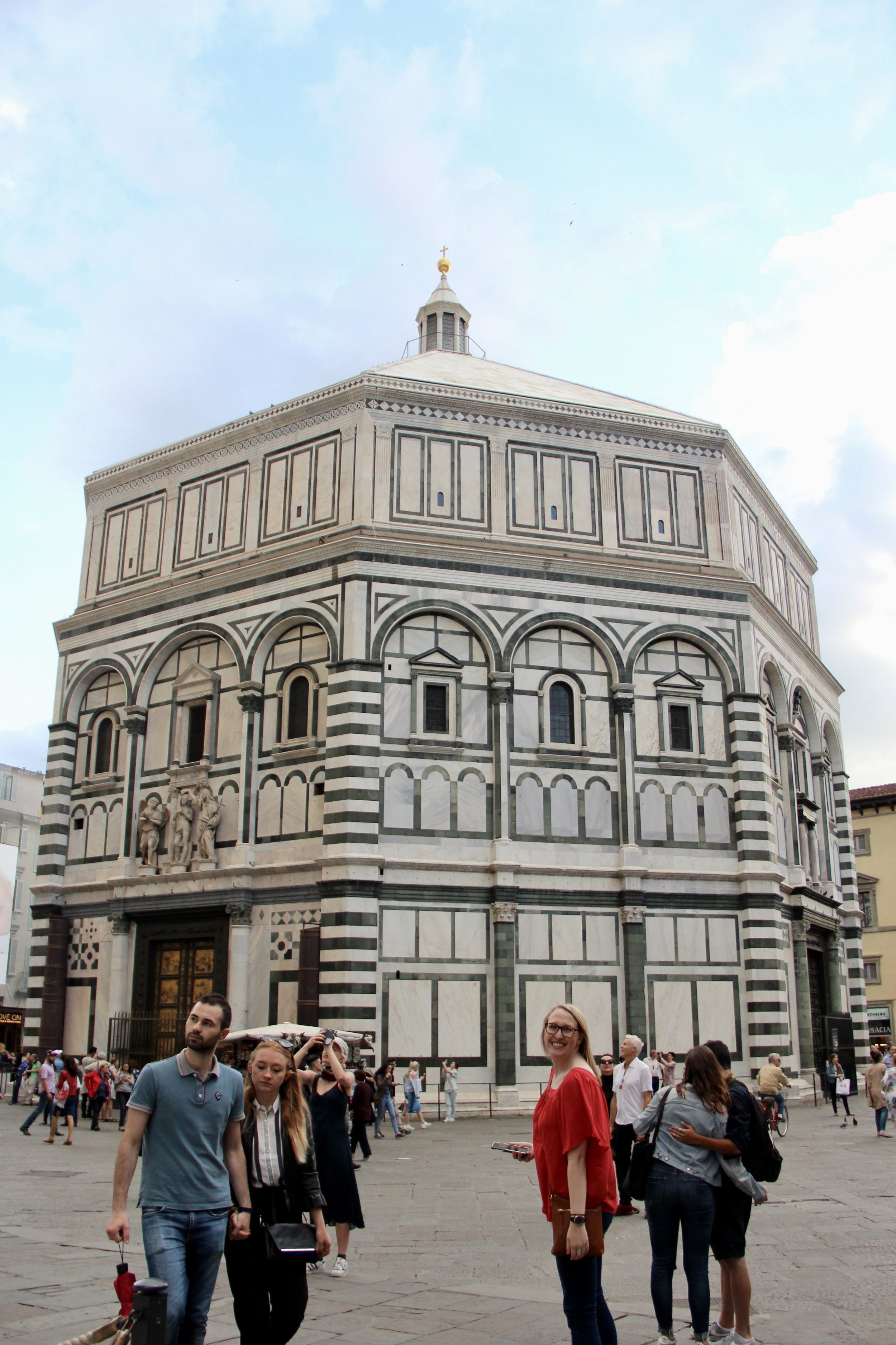
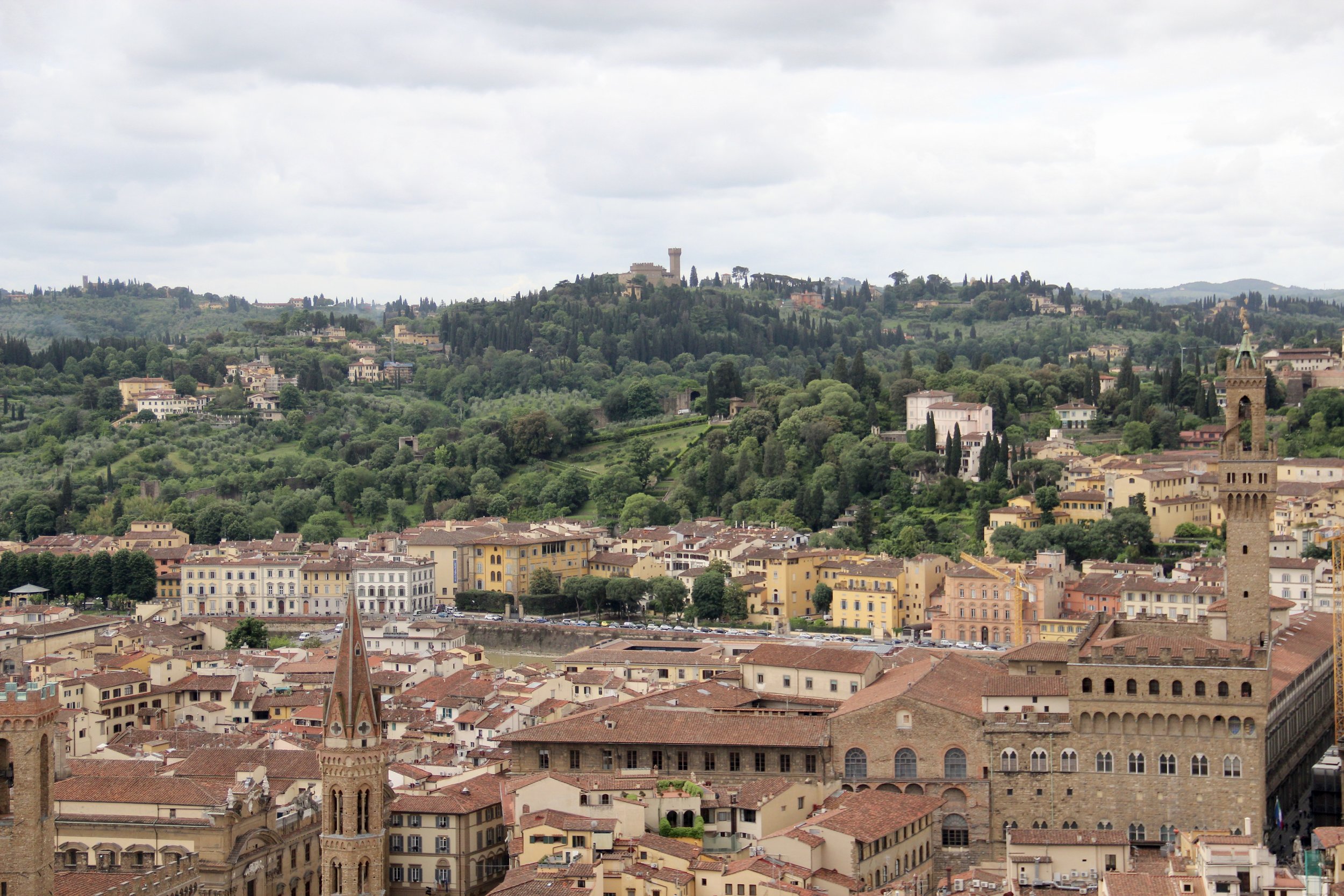
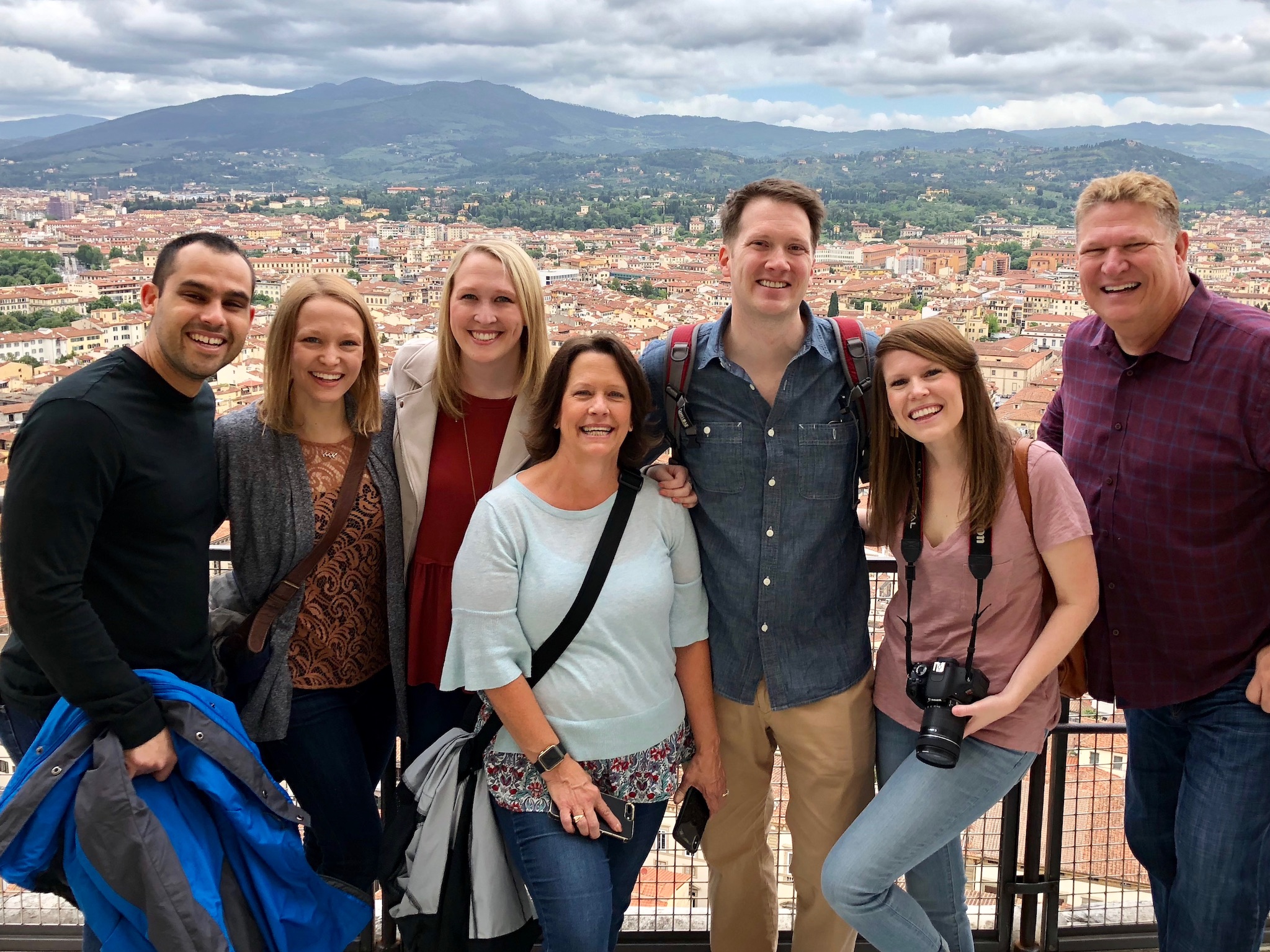

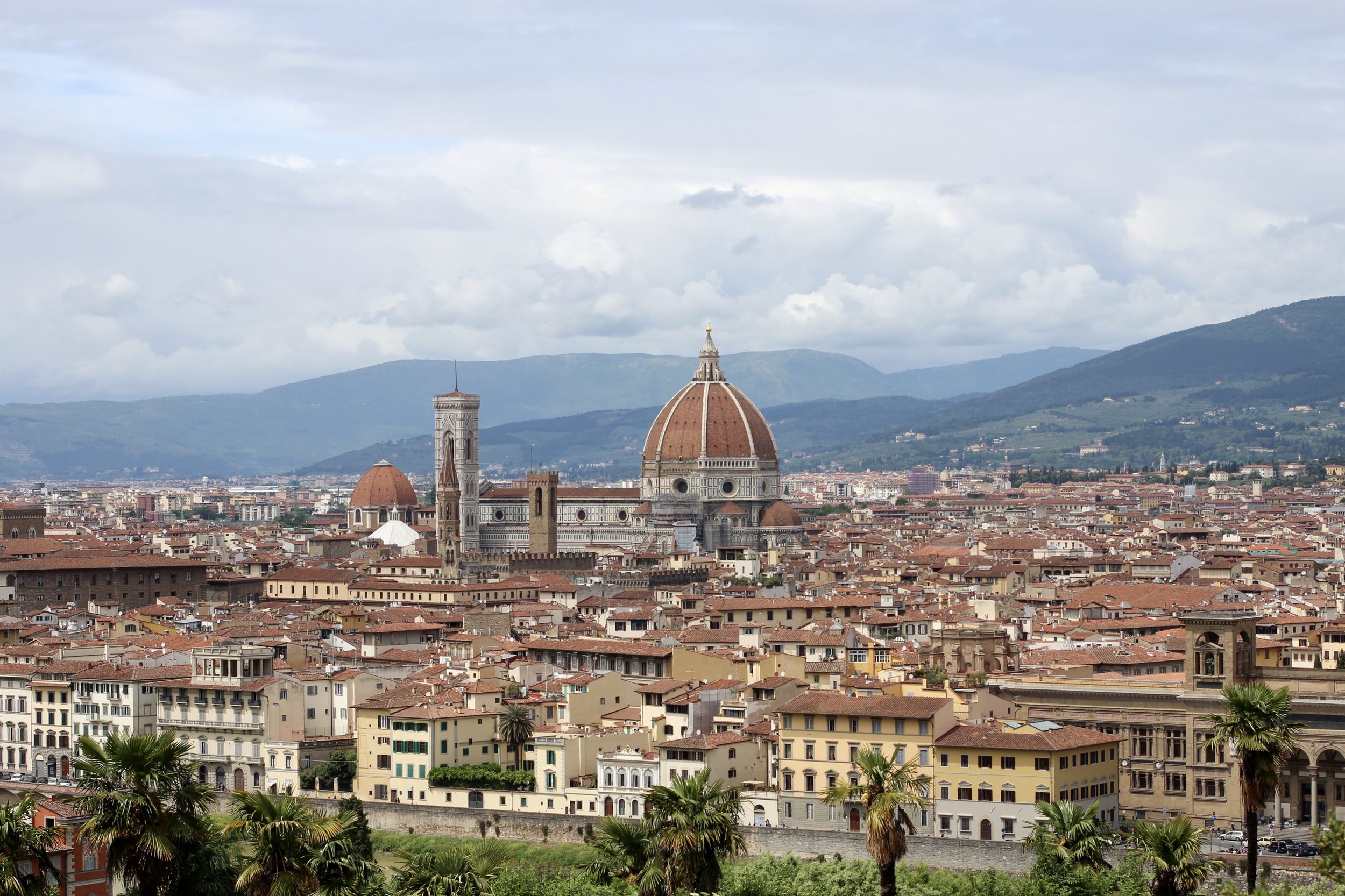

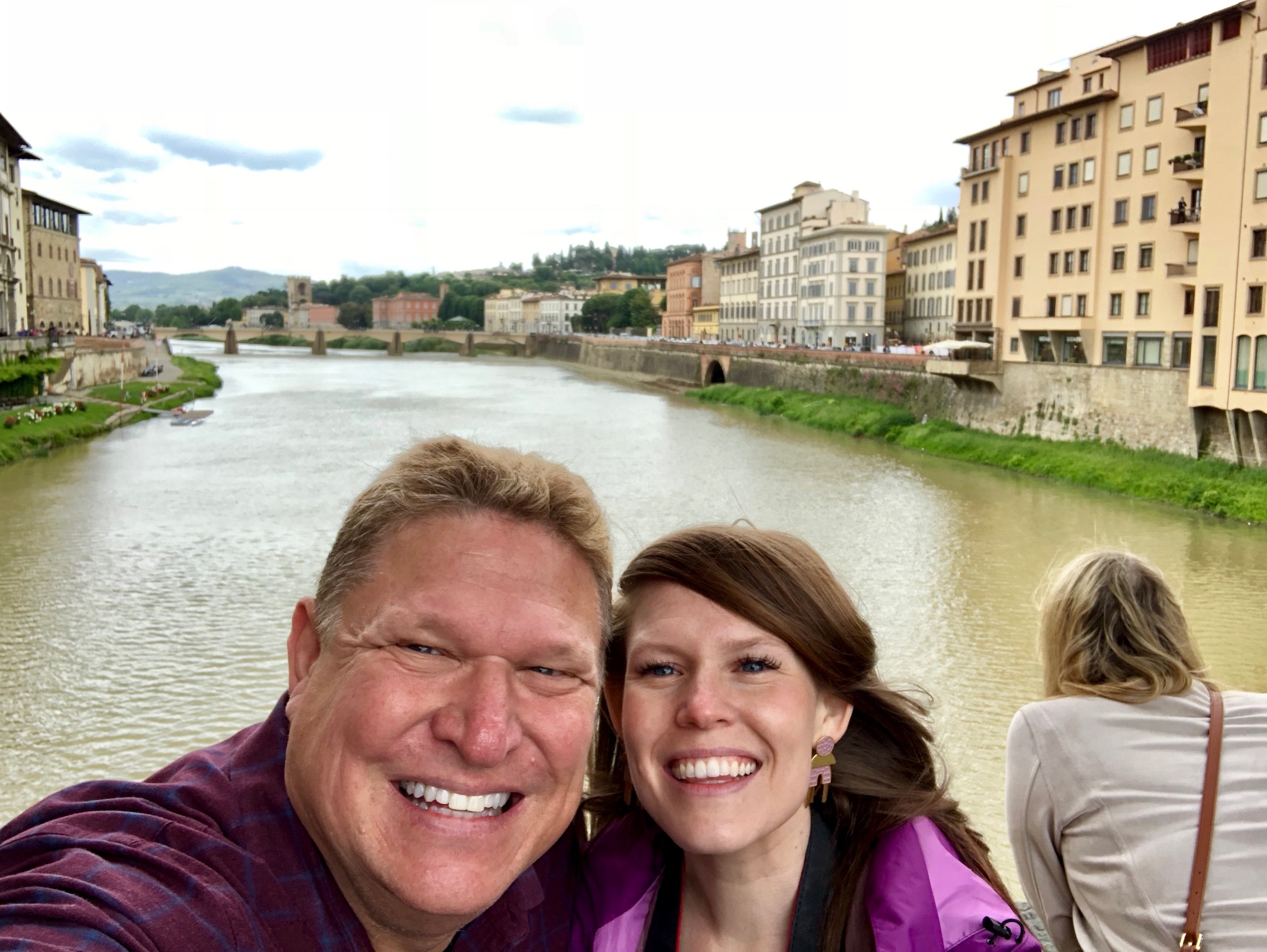
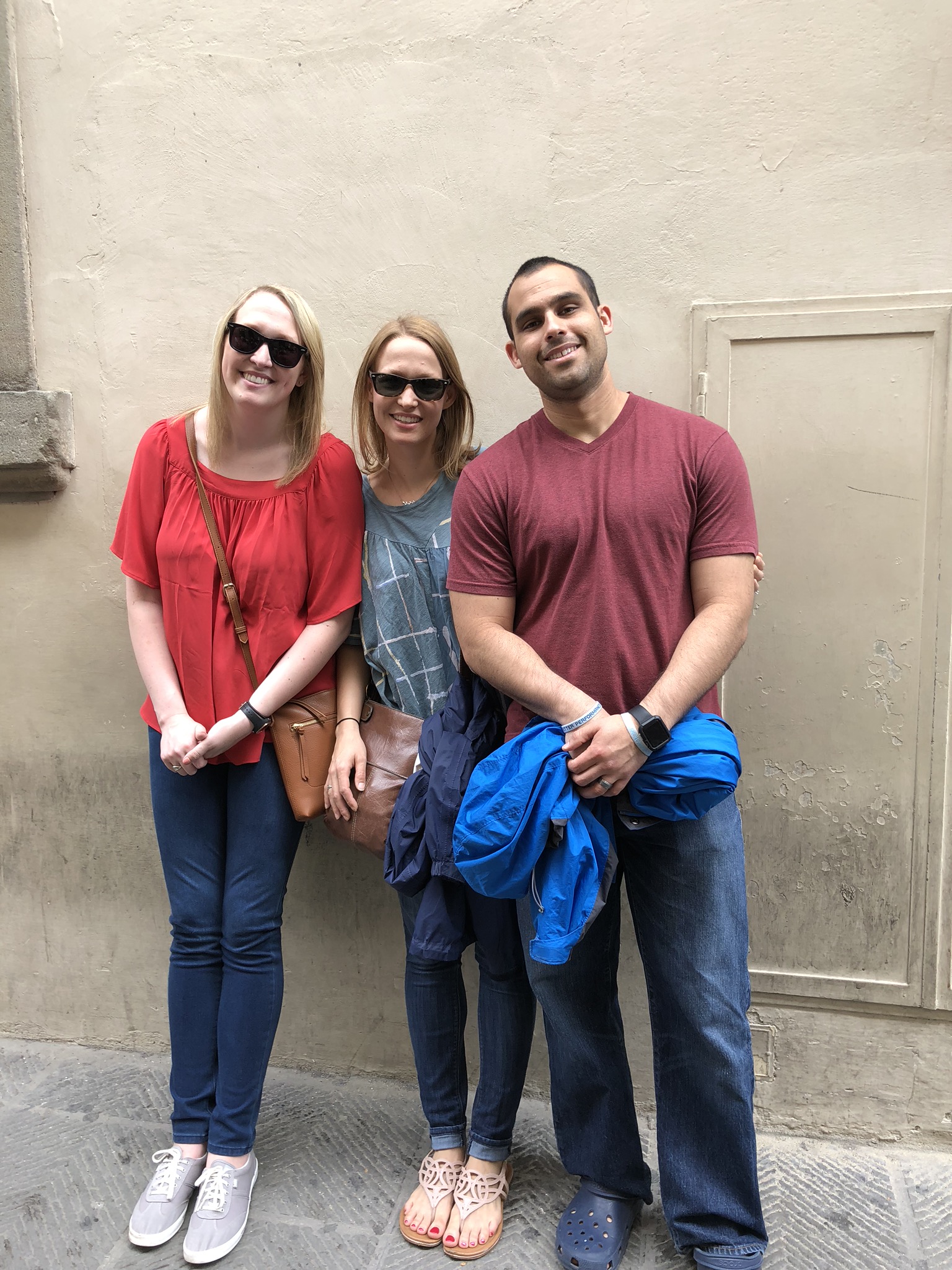
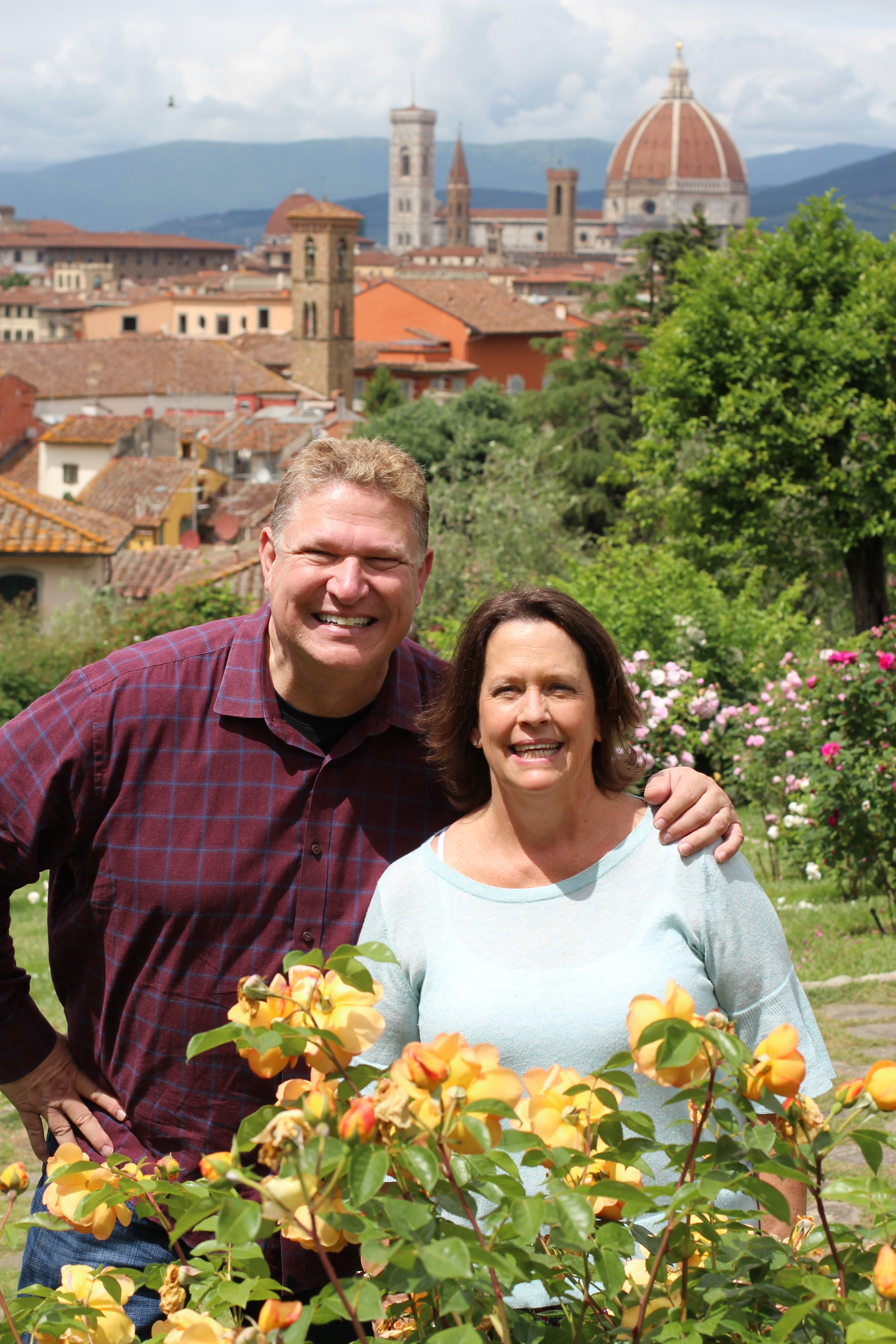
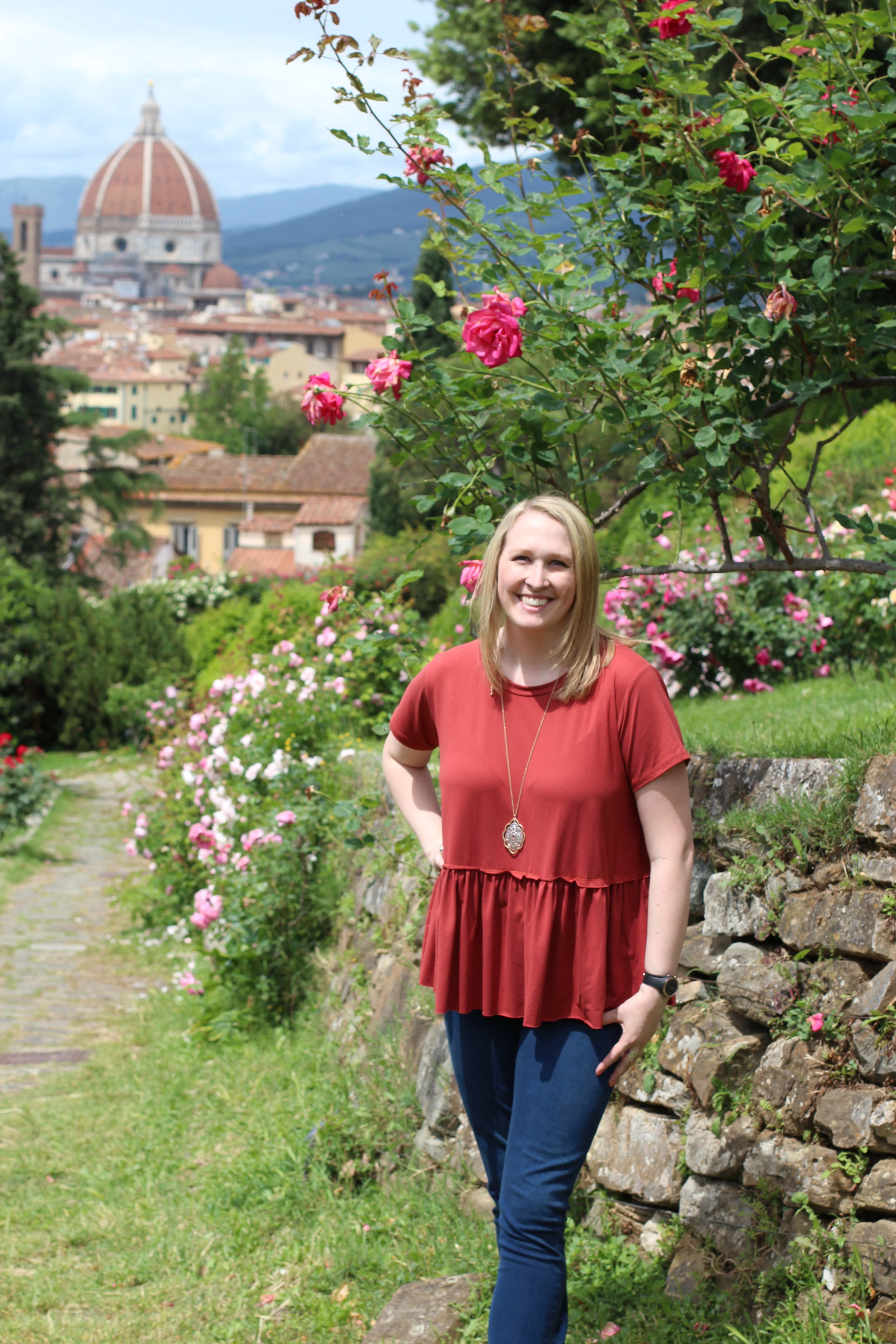
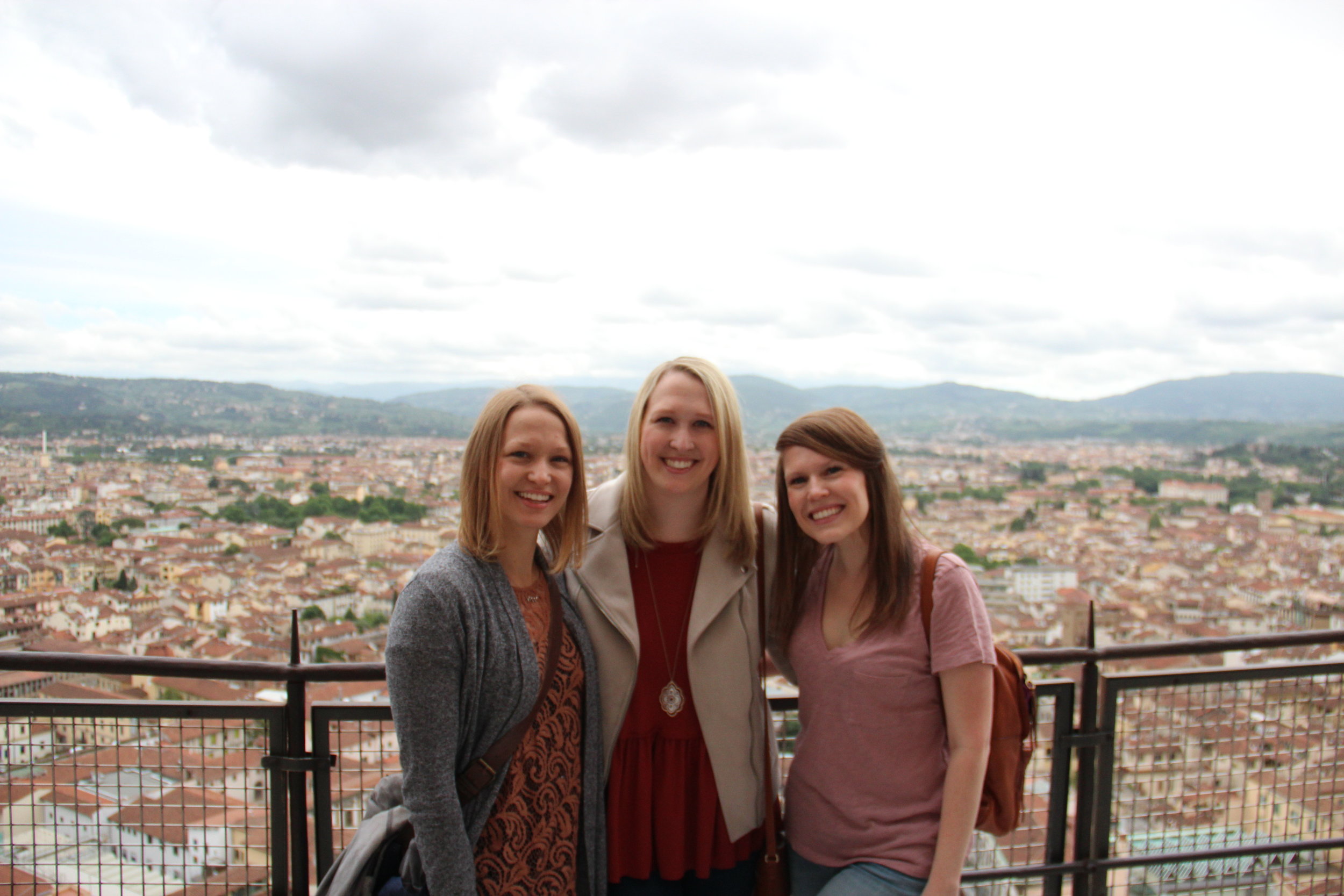
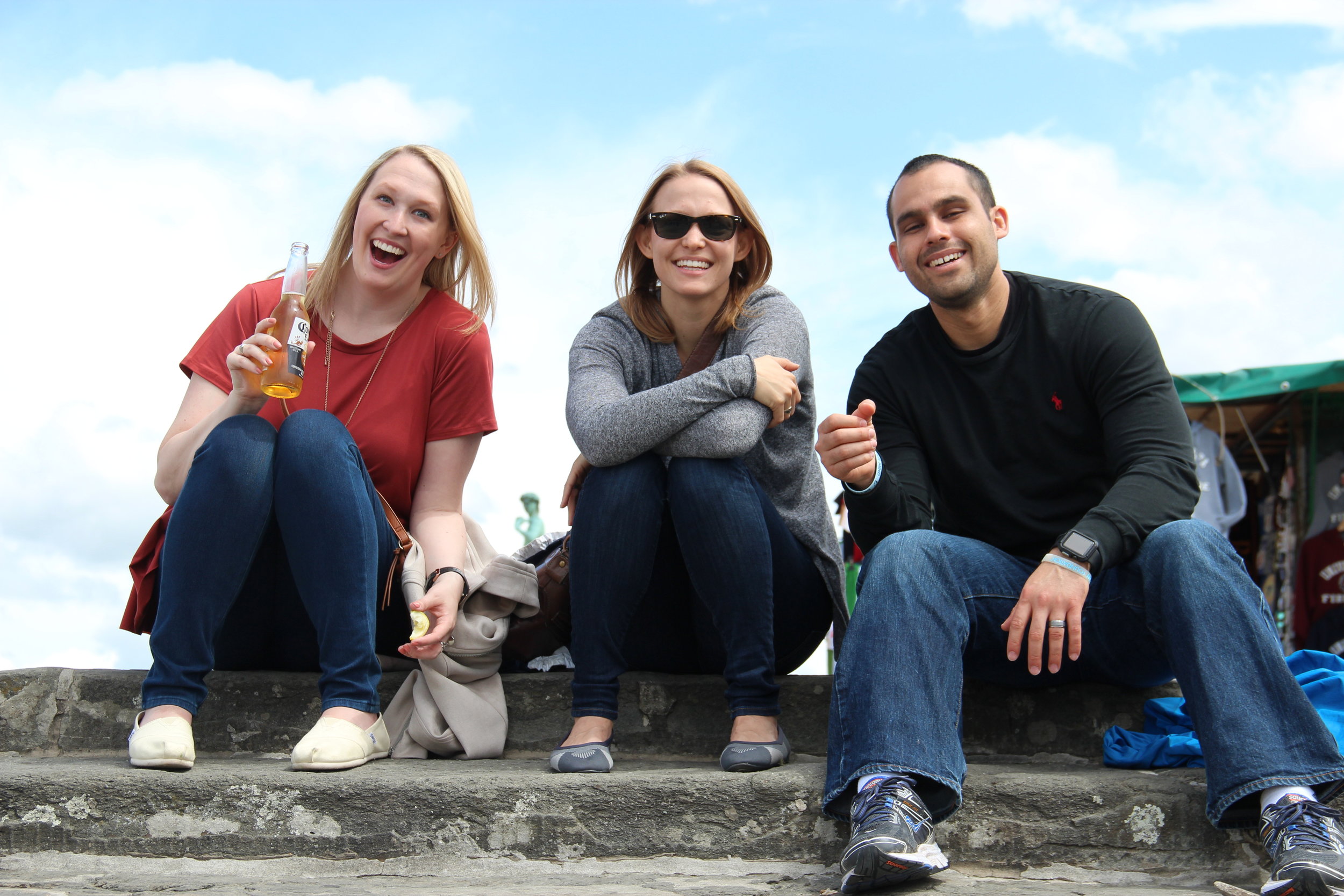
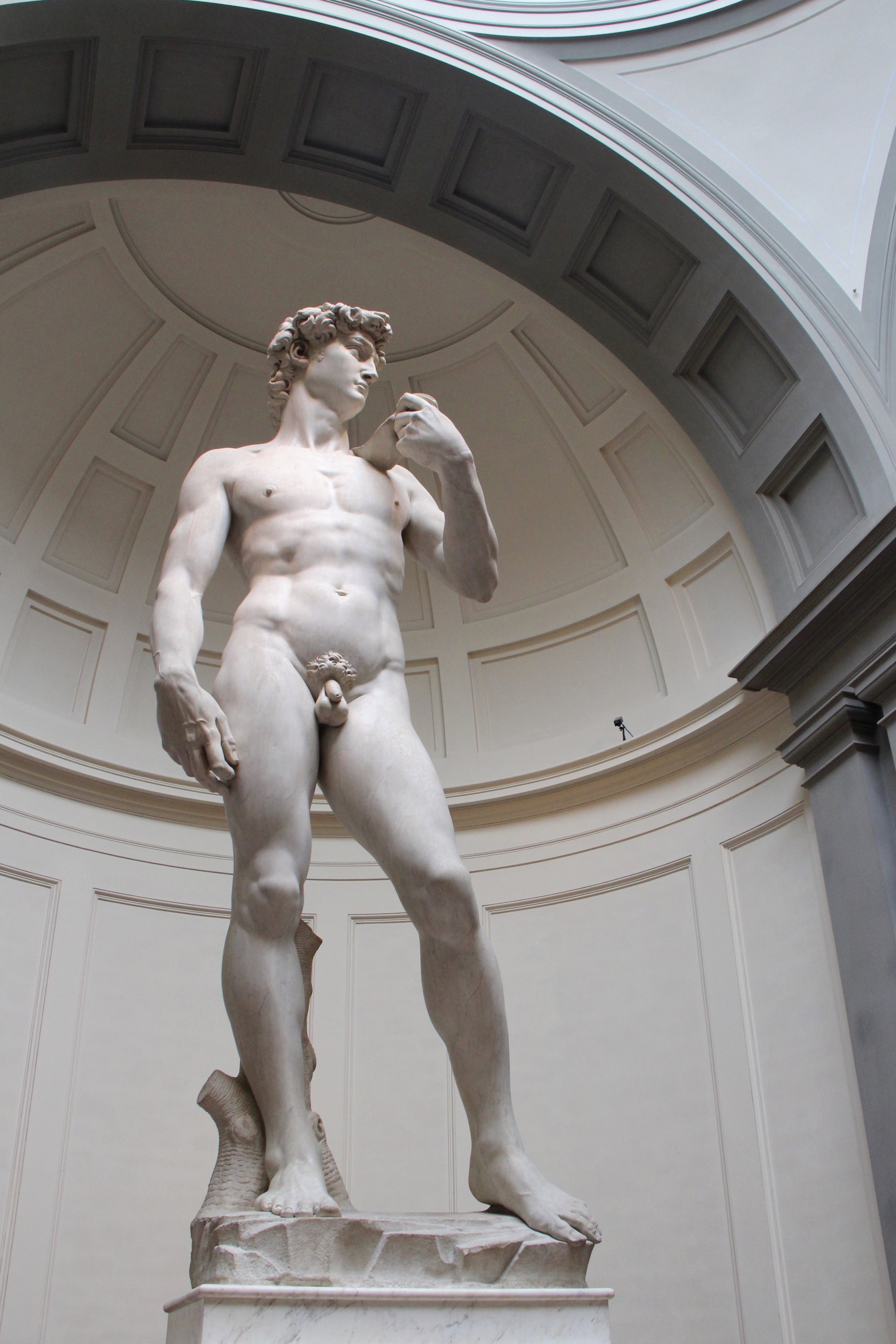
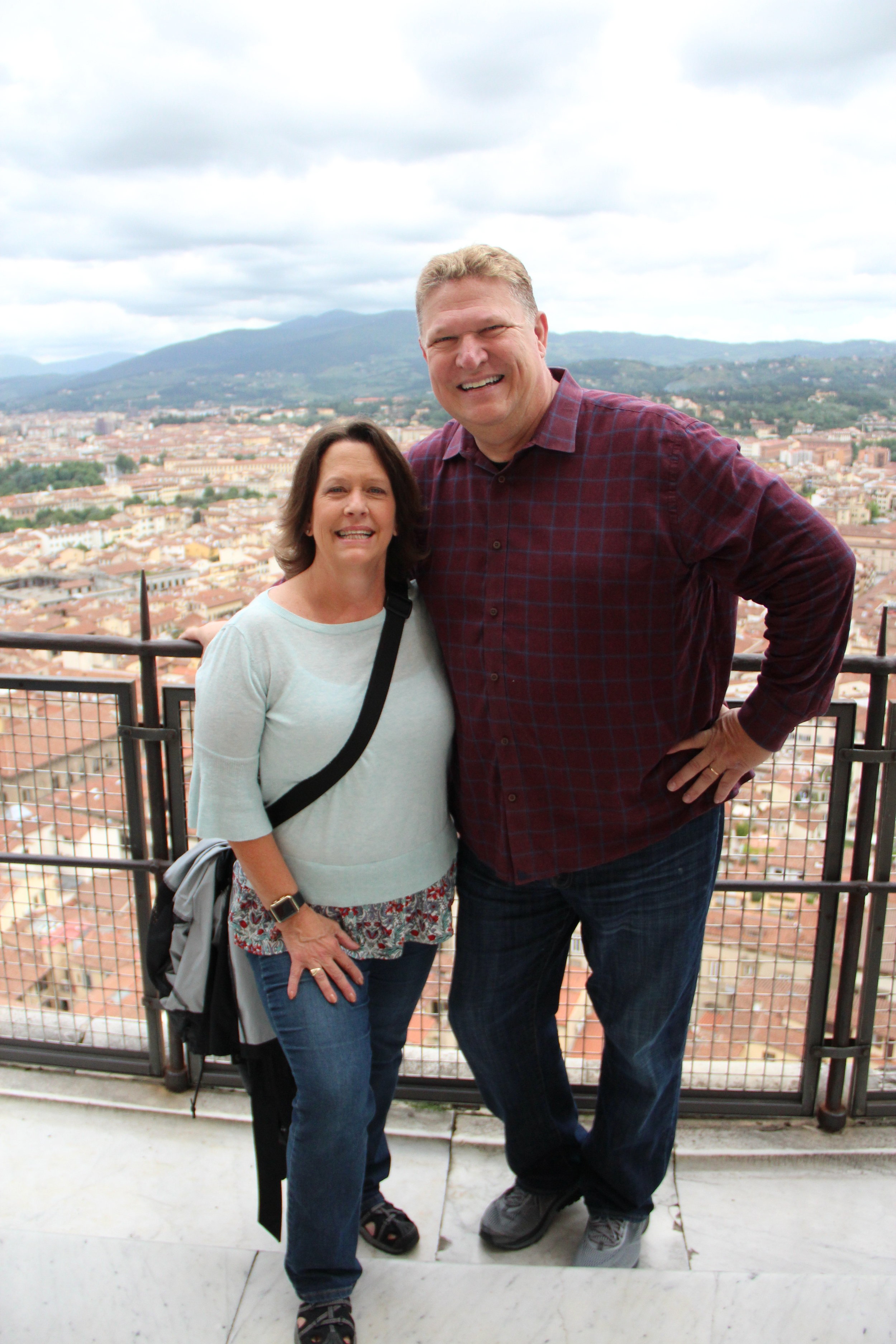
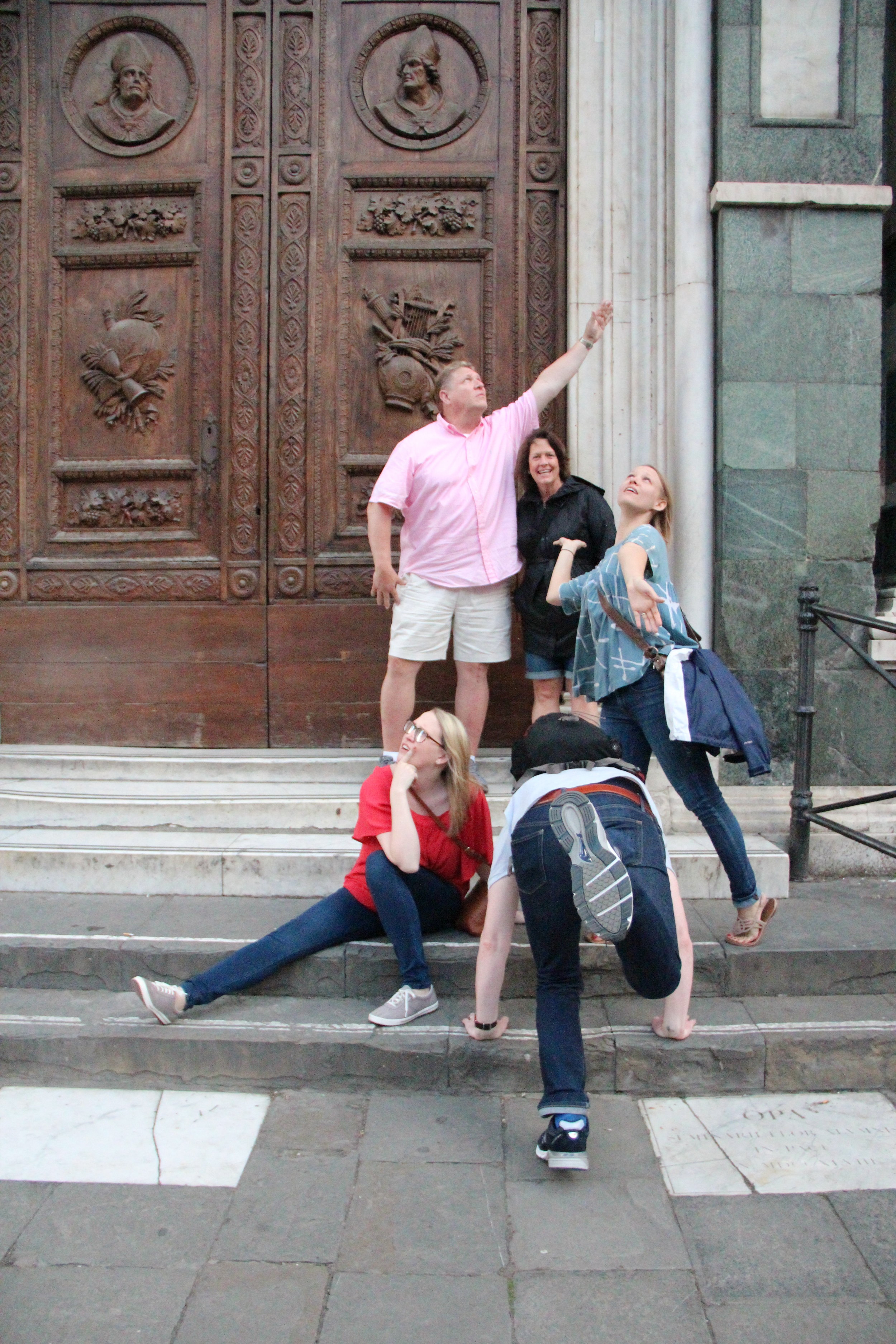
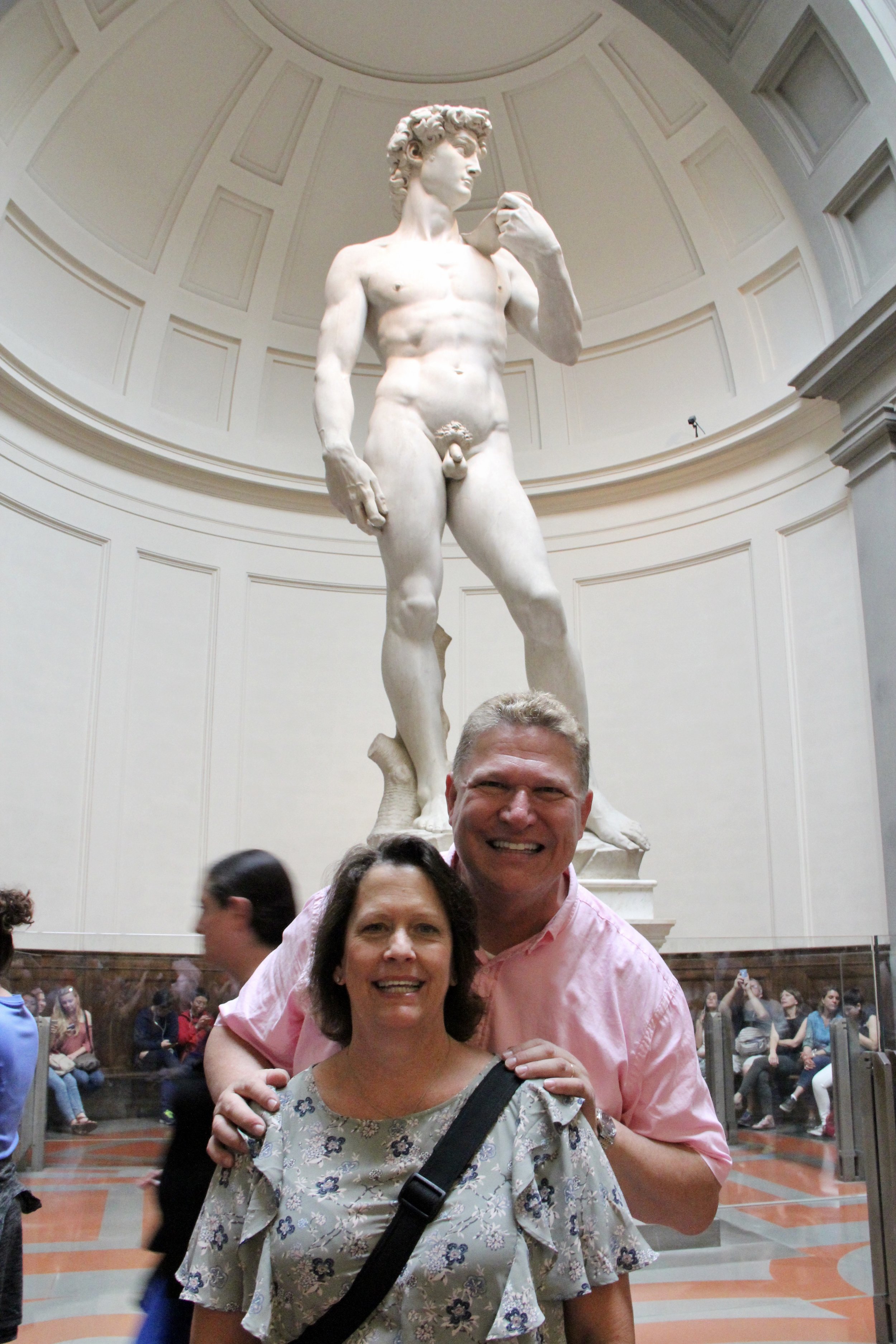
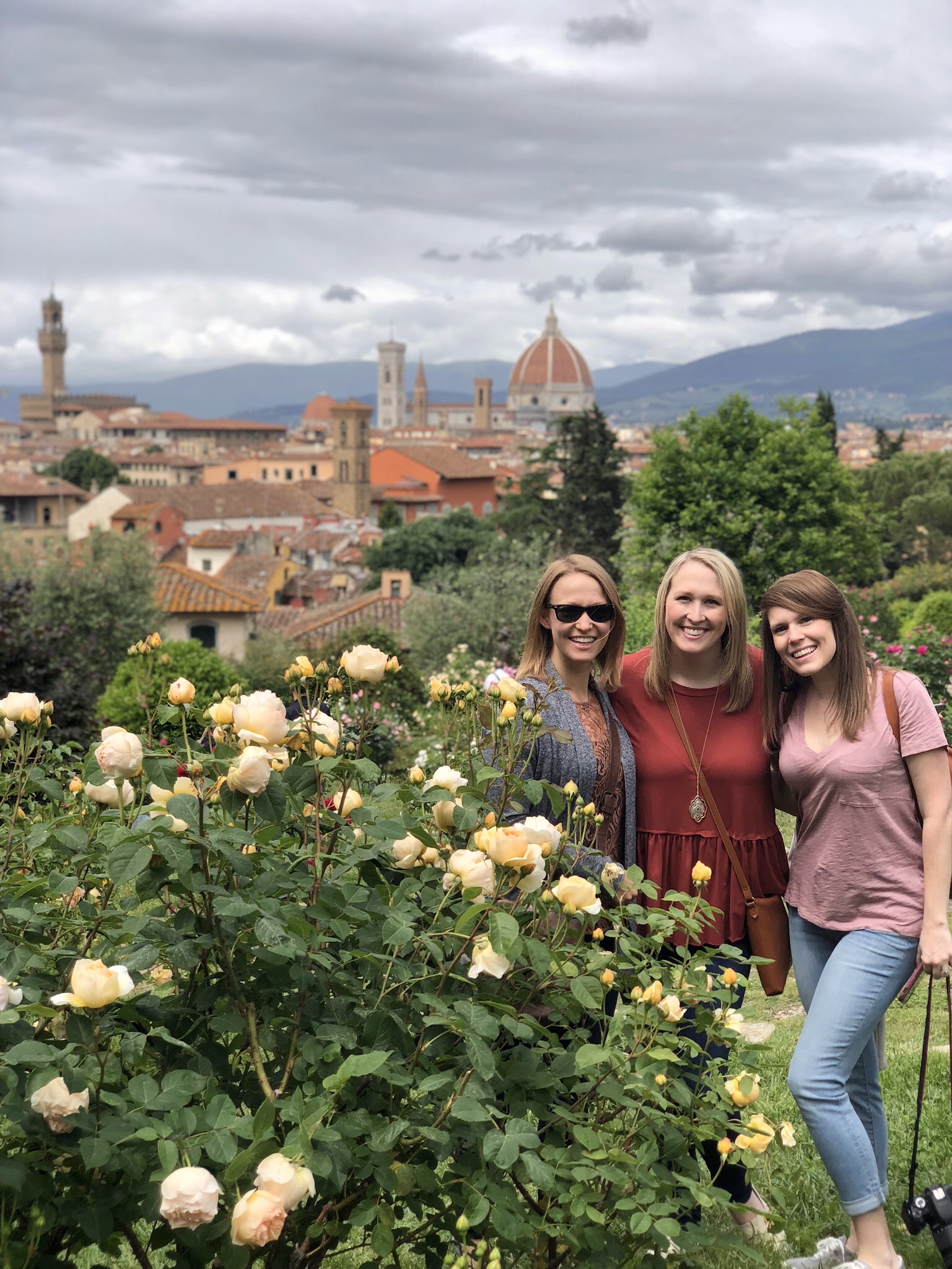



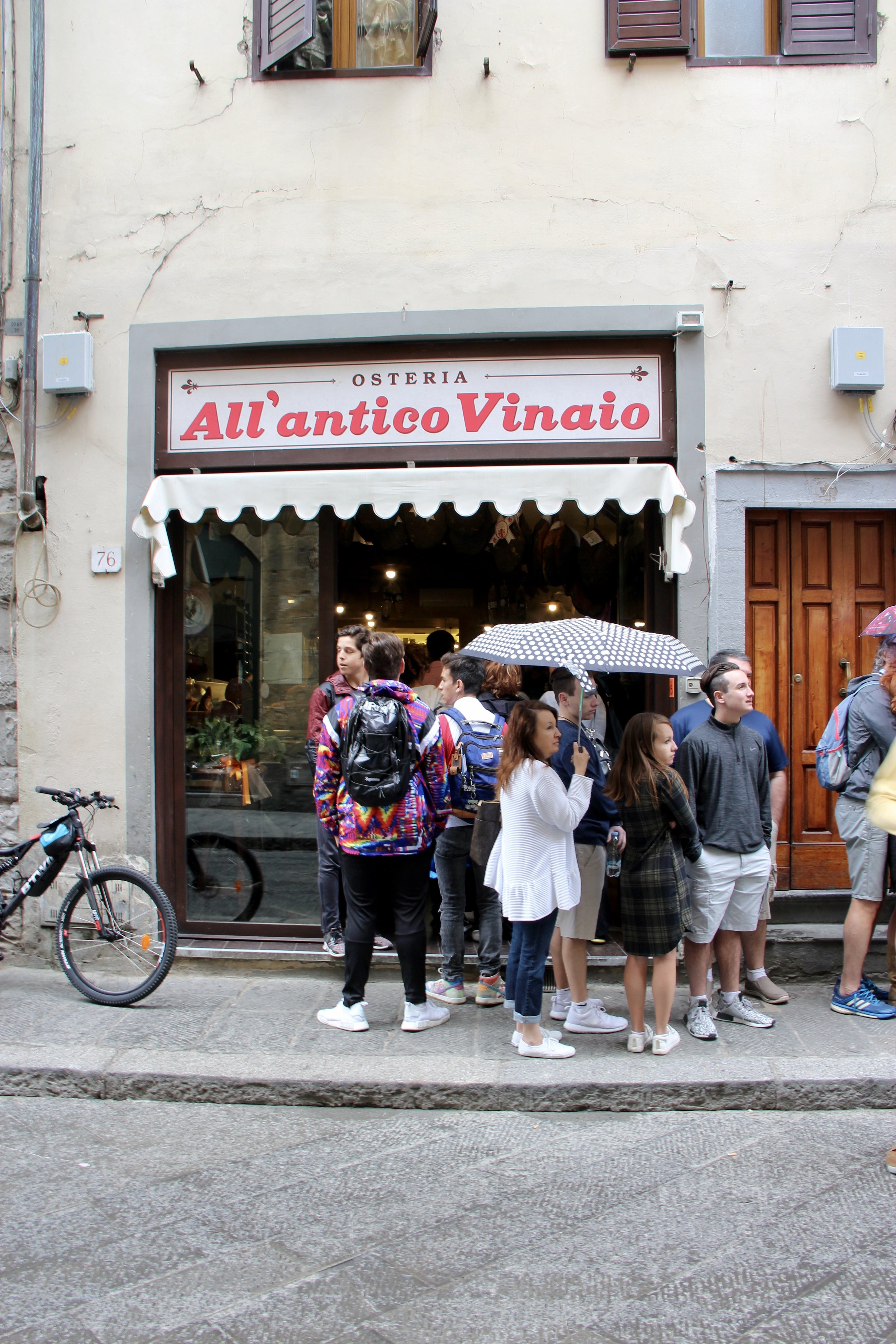
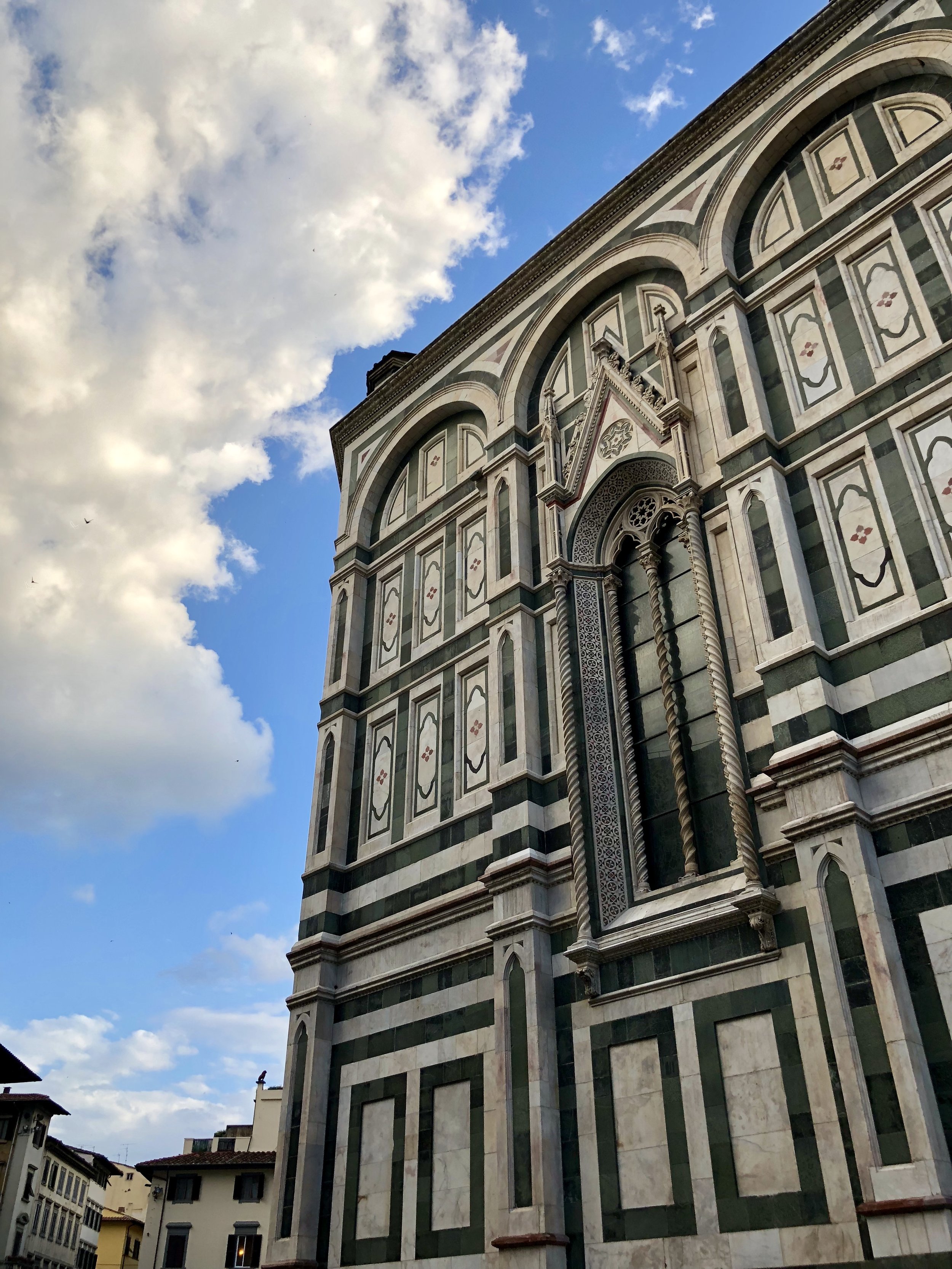

“You will begin to wonder that human daring ever achieved anything so magnificent.”
Like this article? Pin it!


